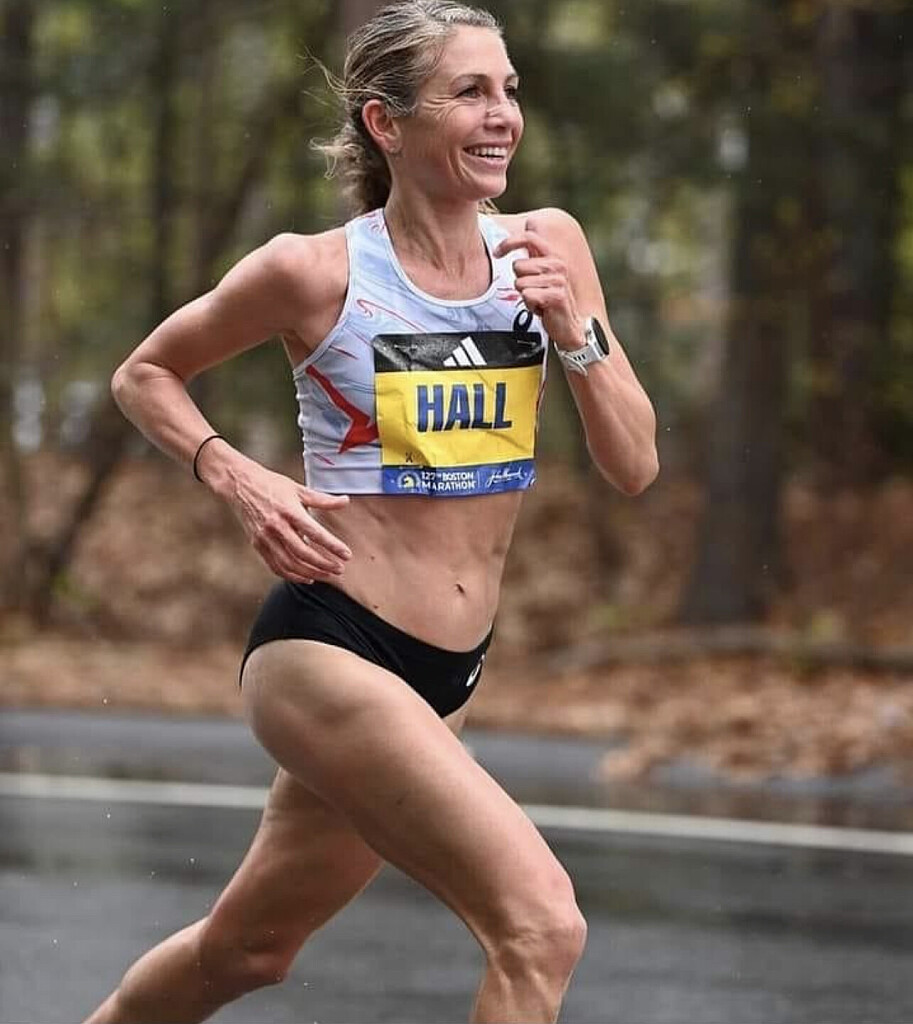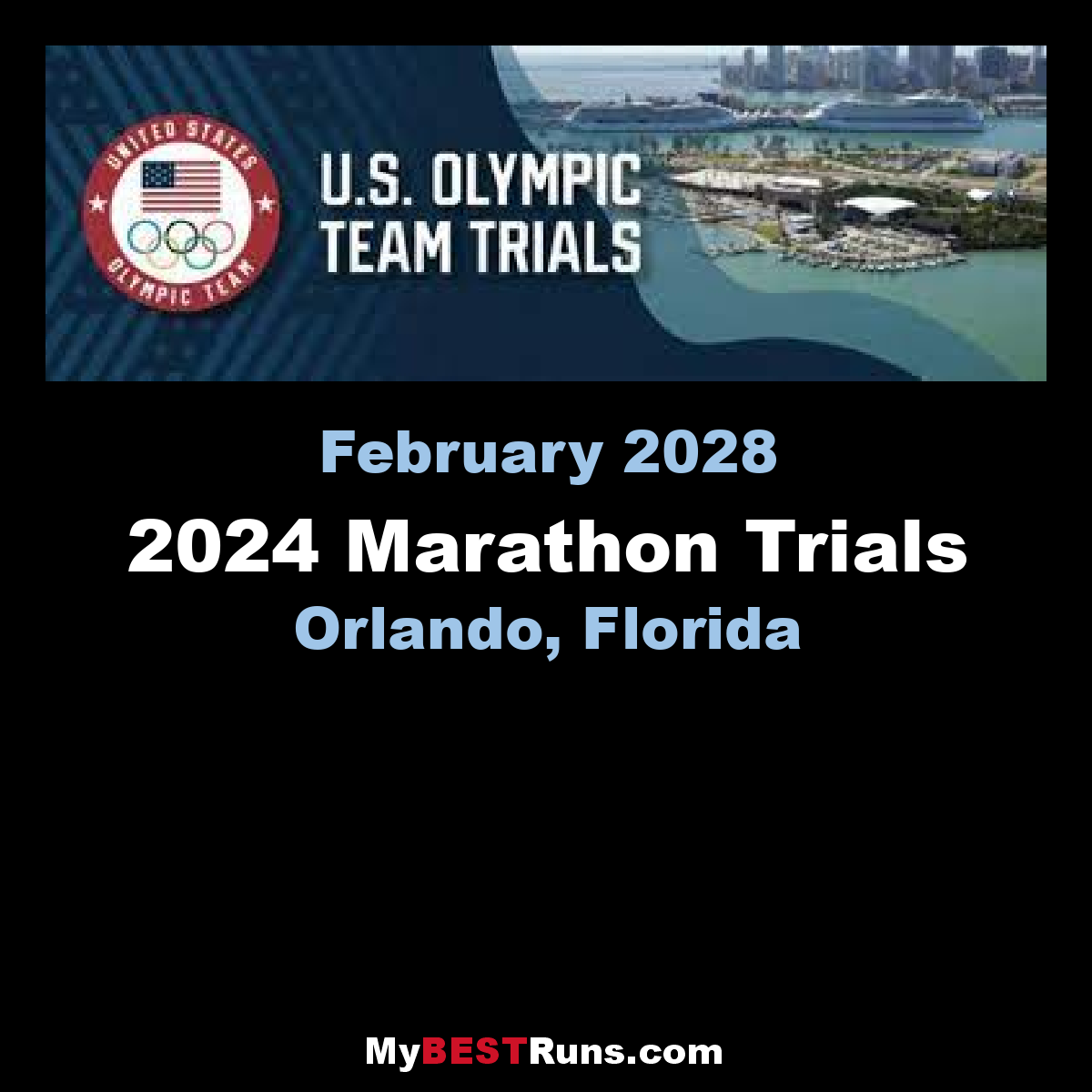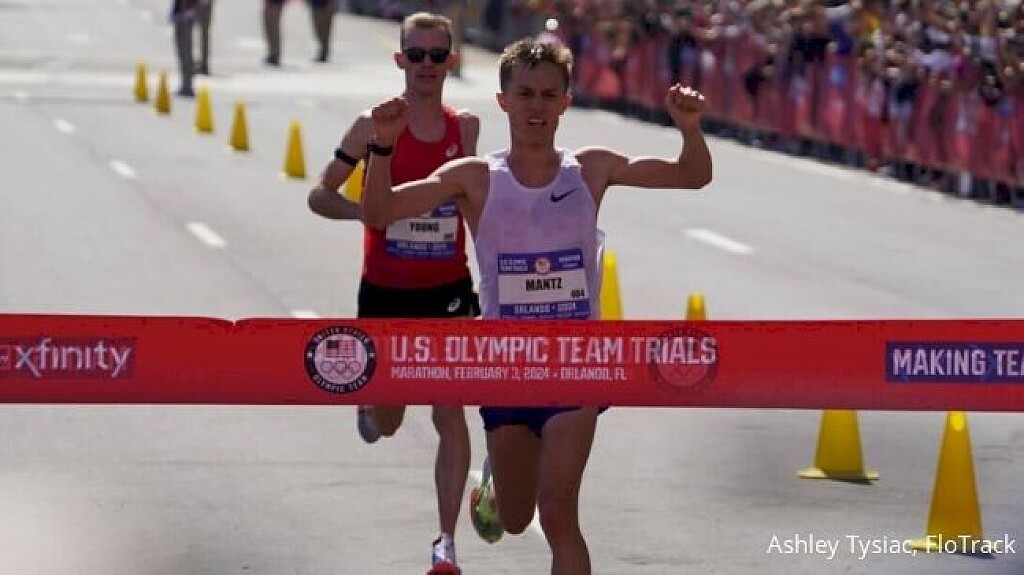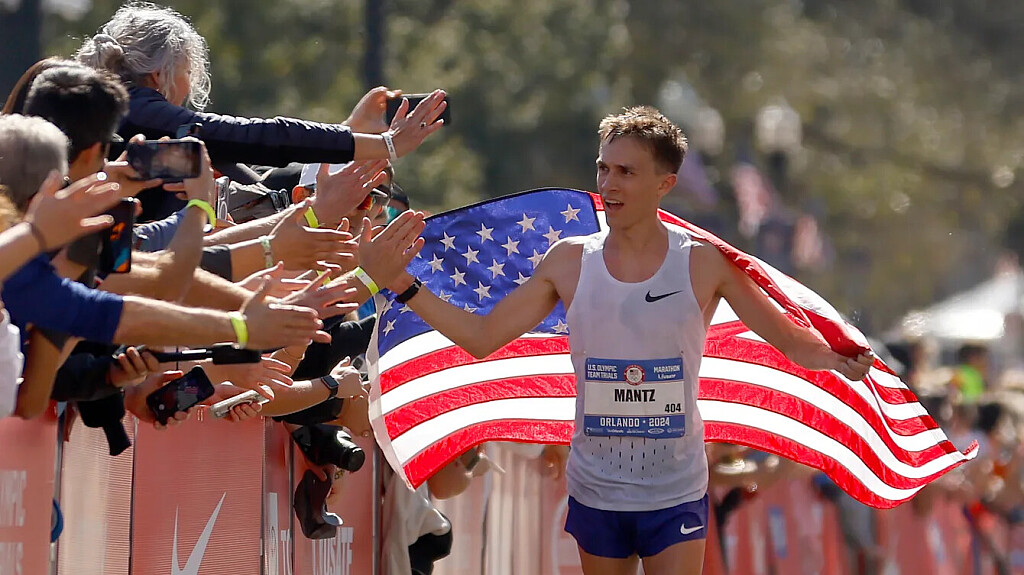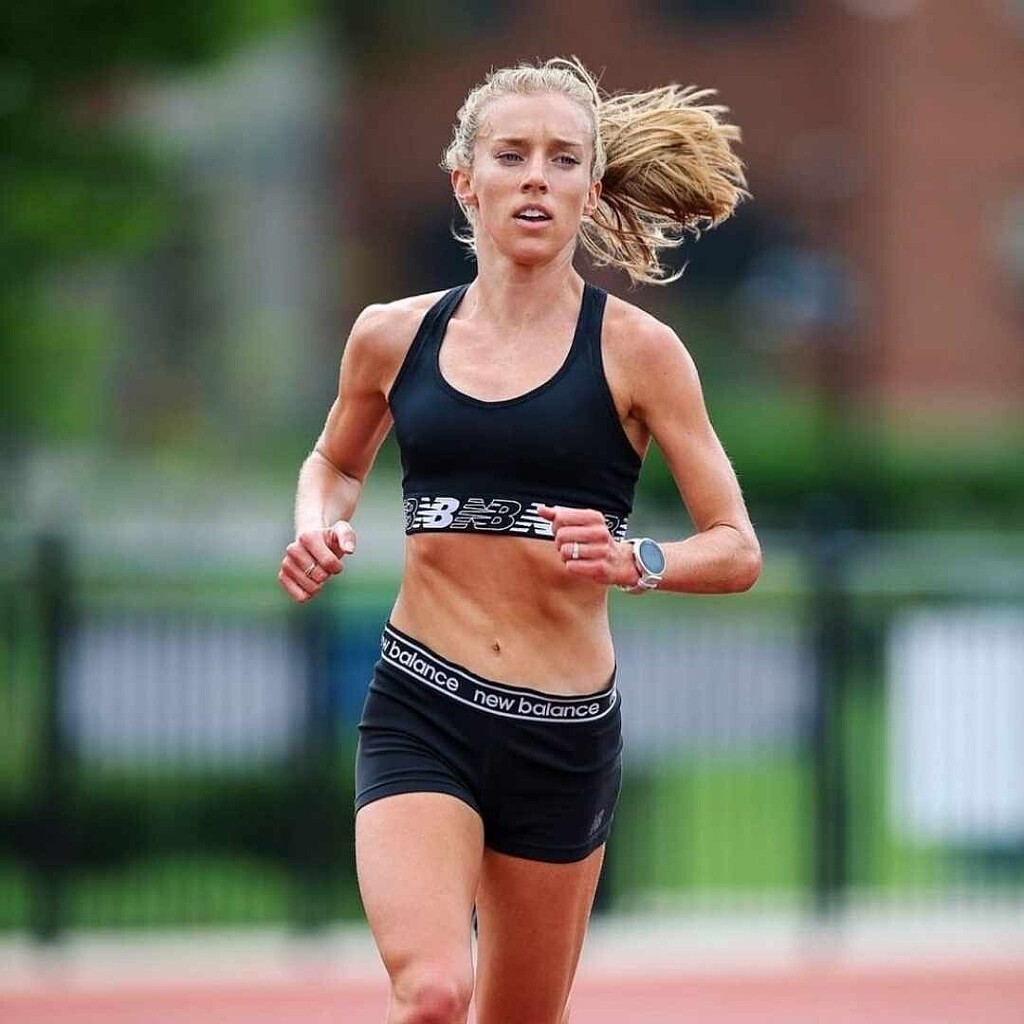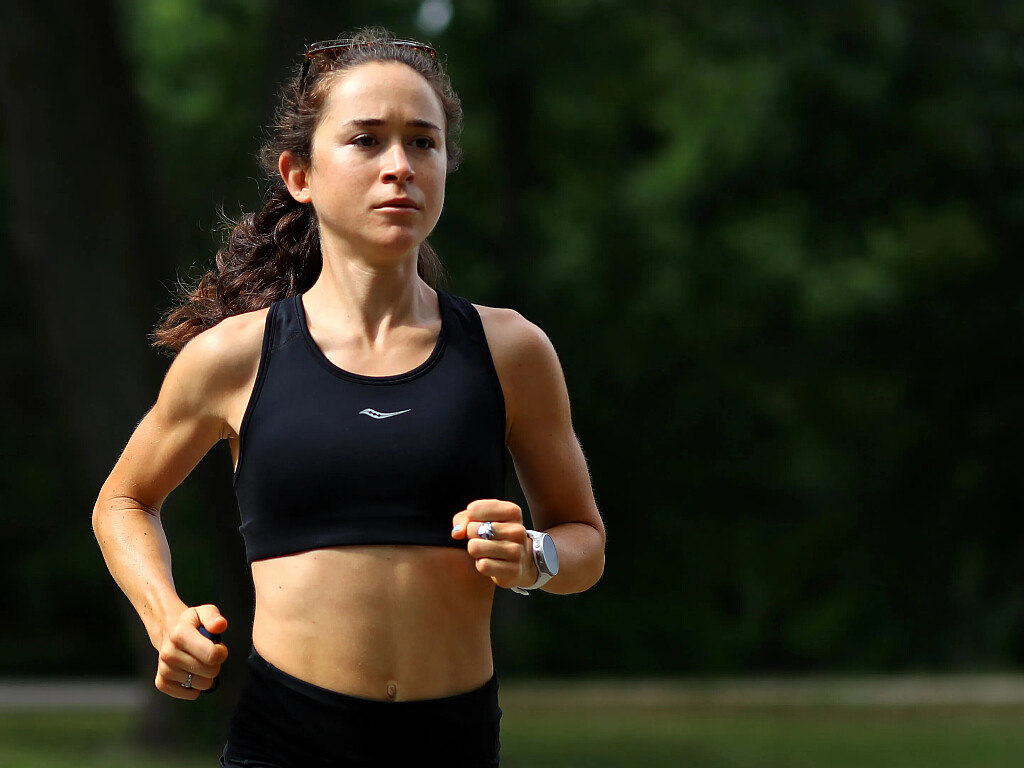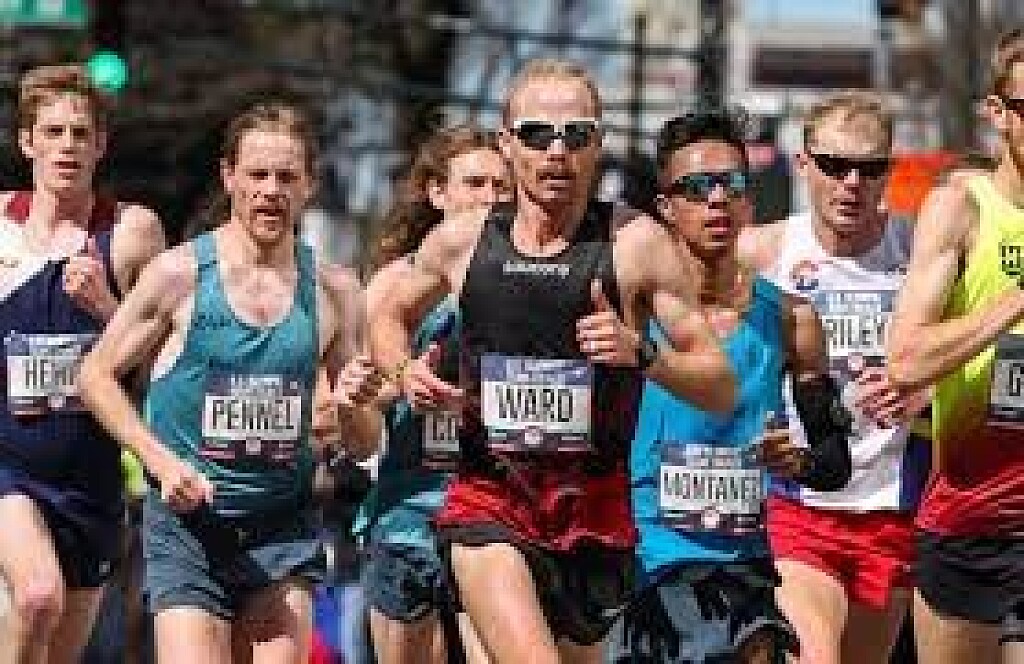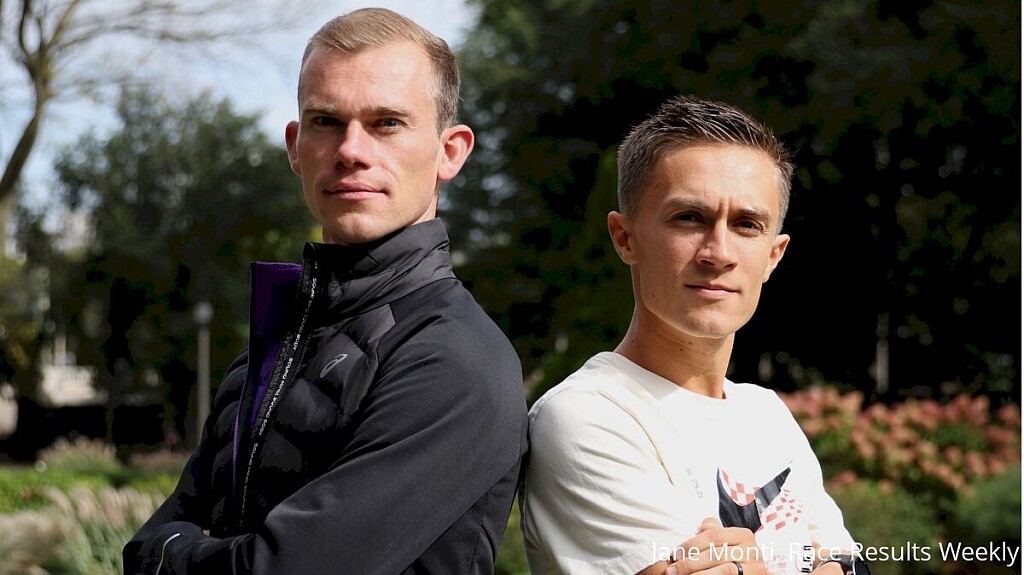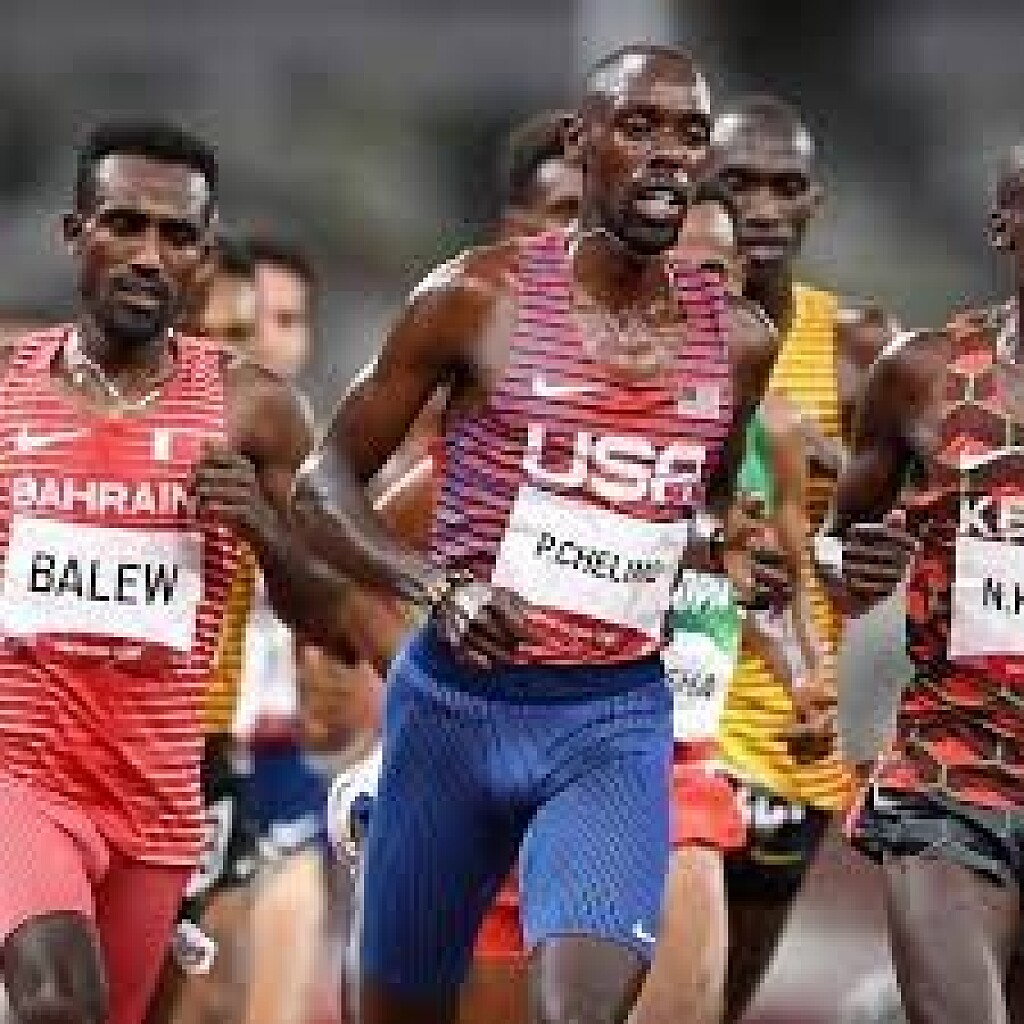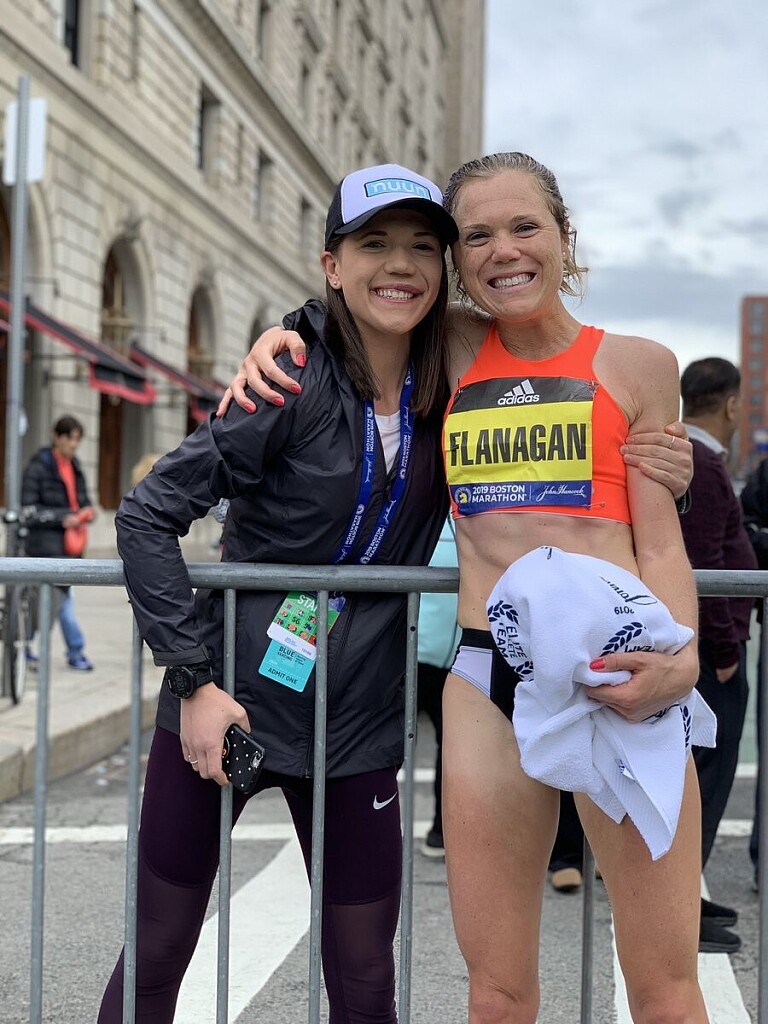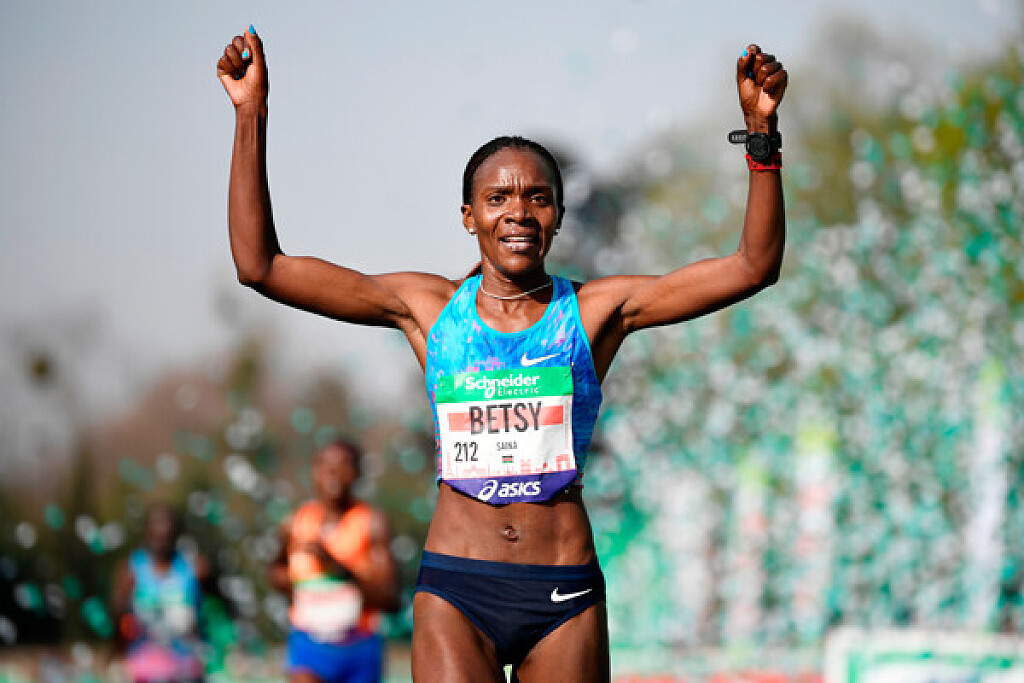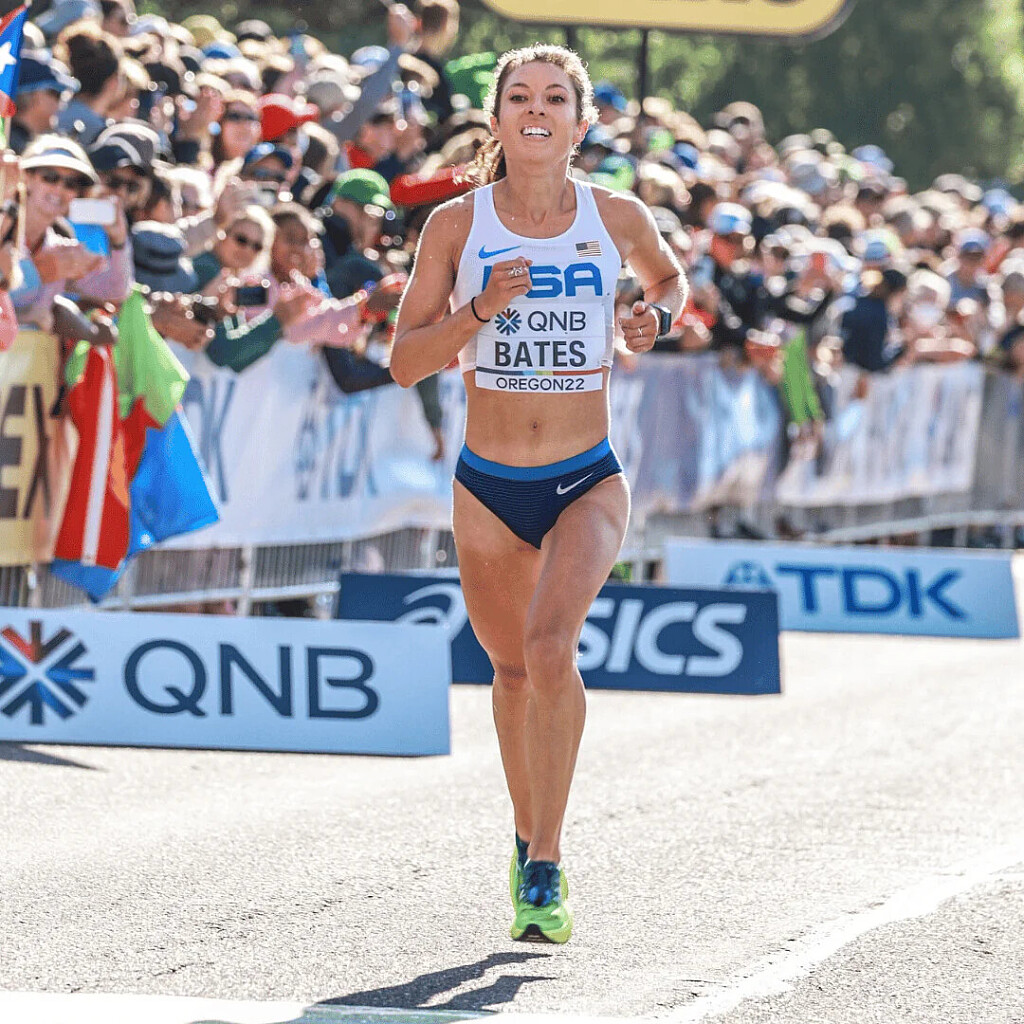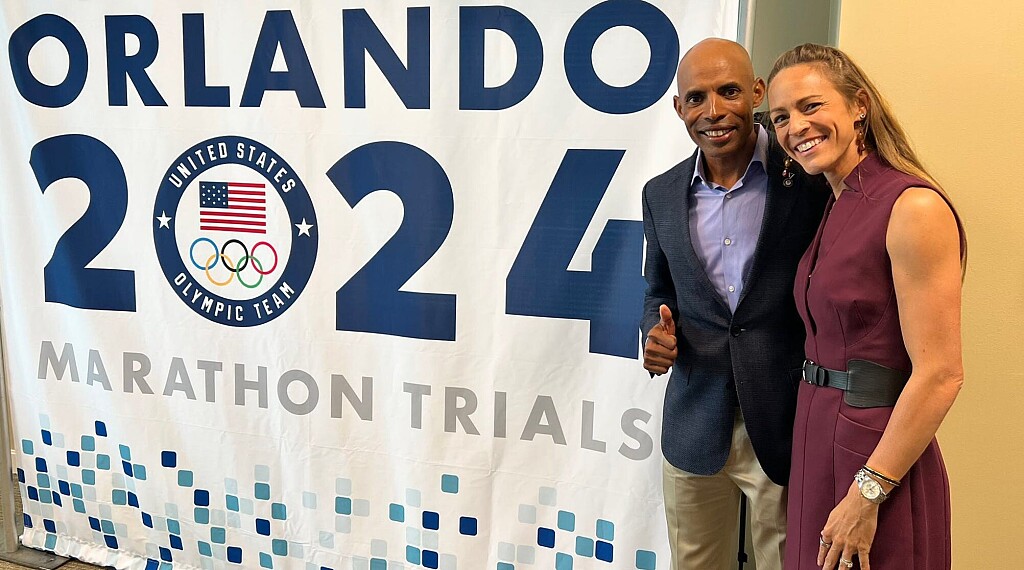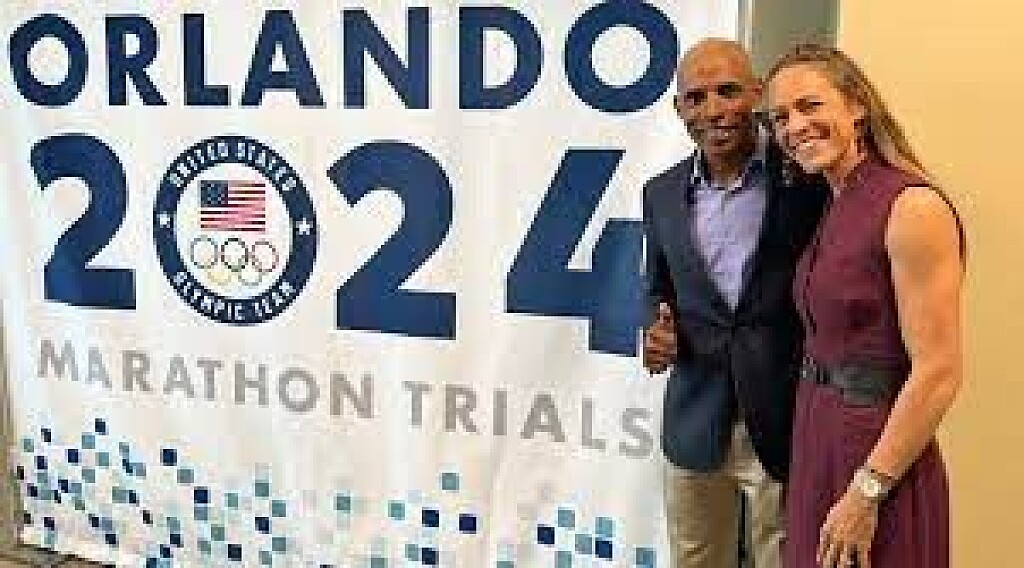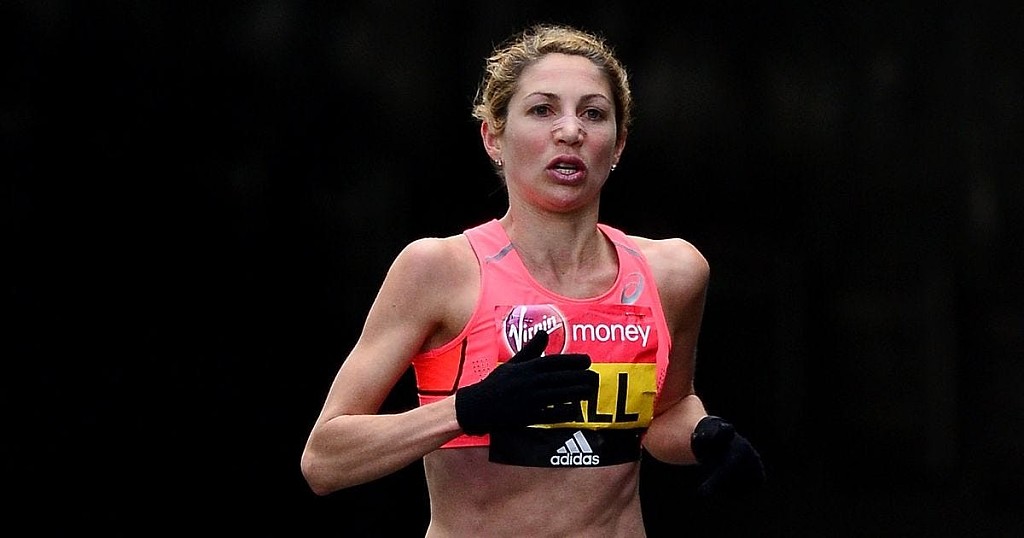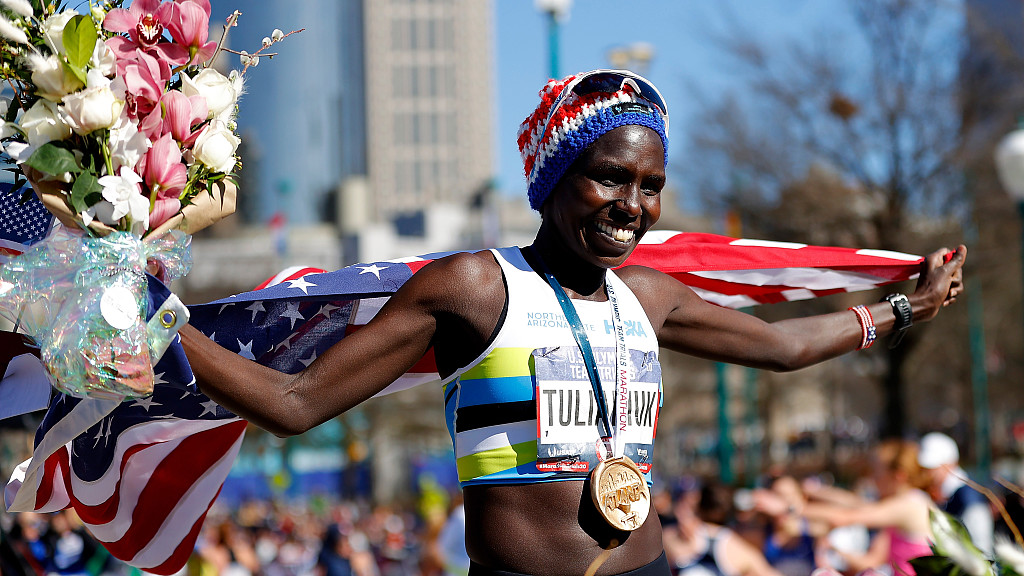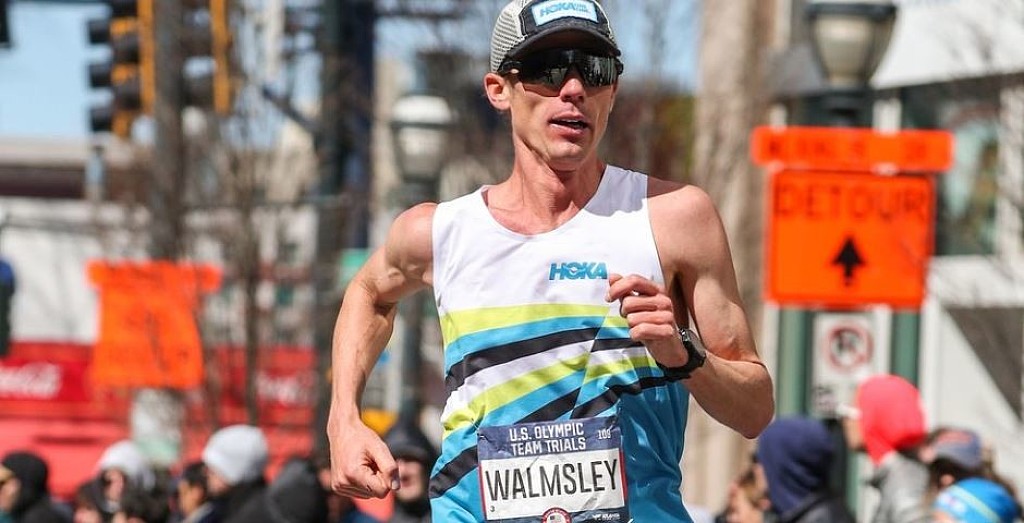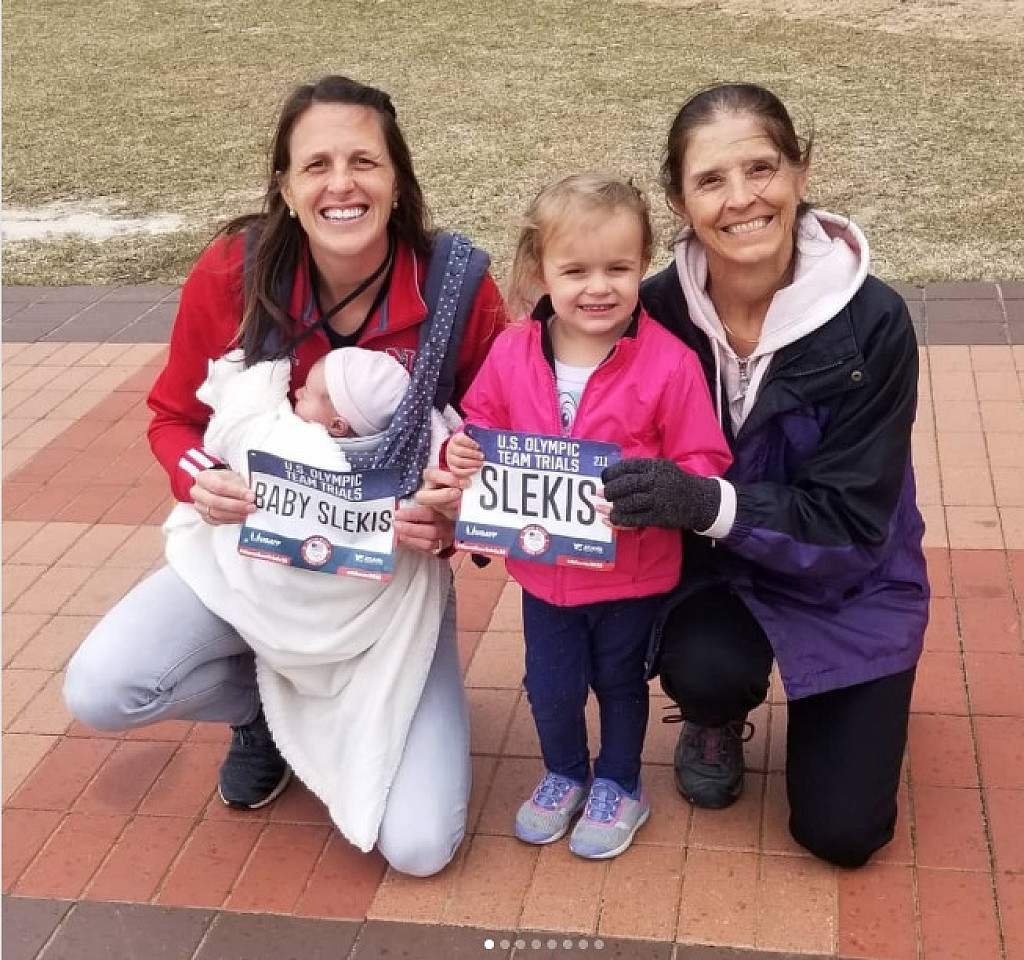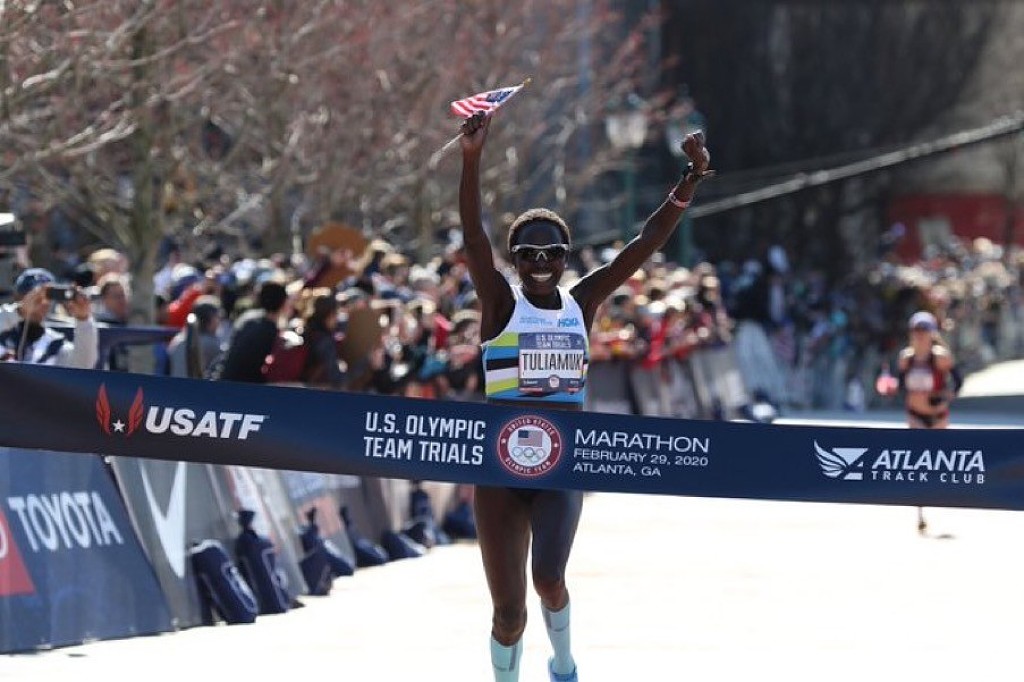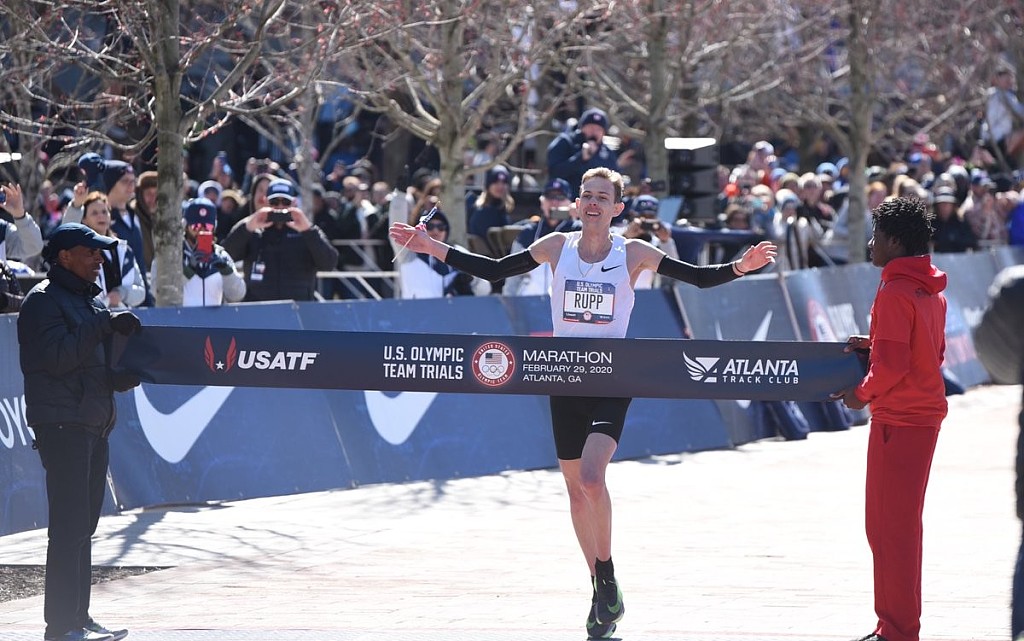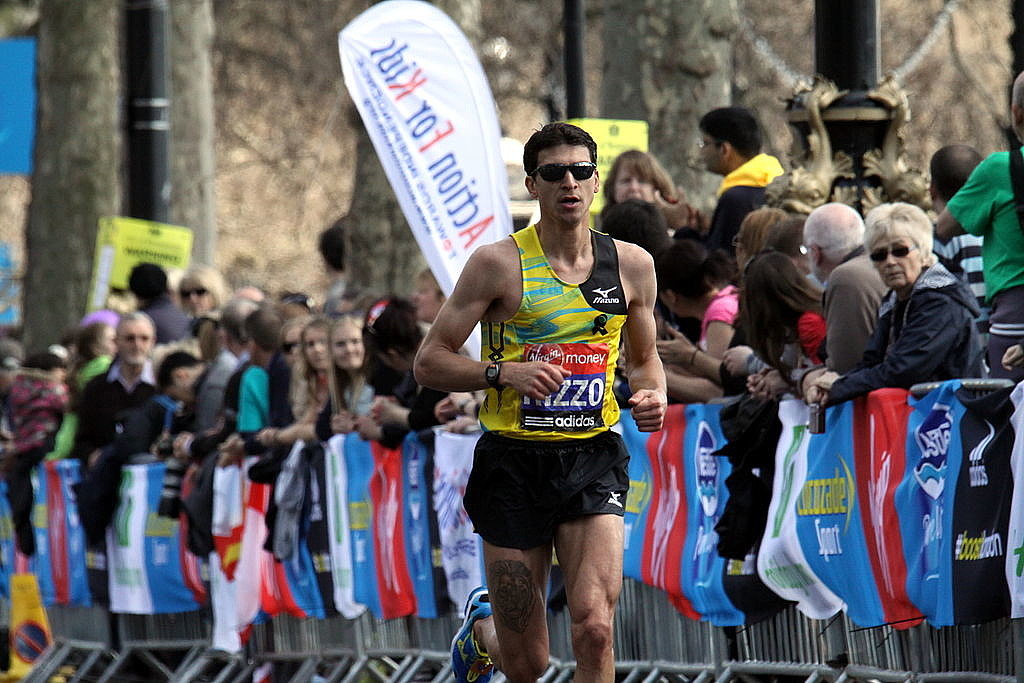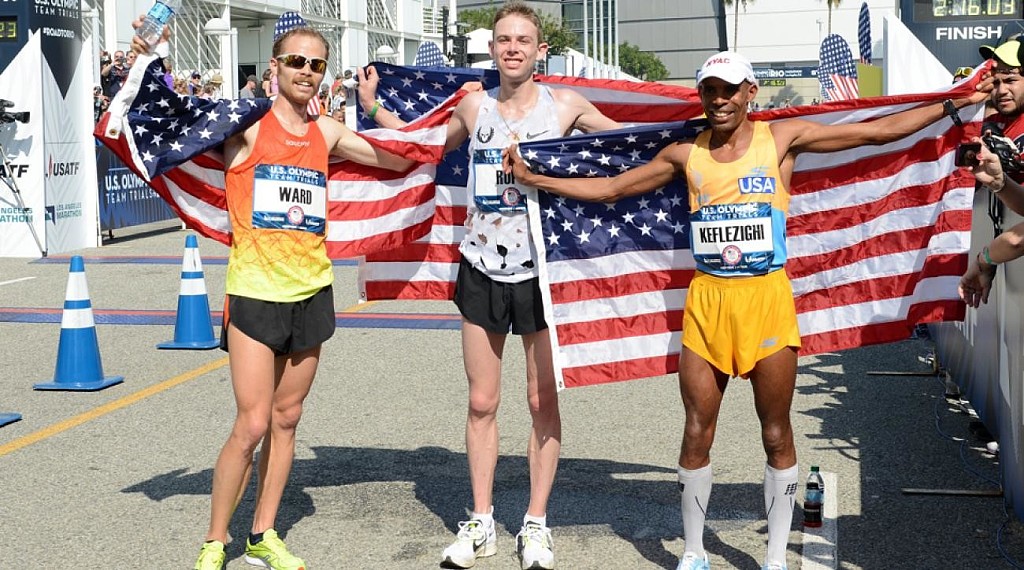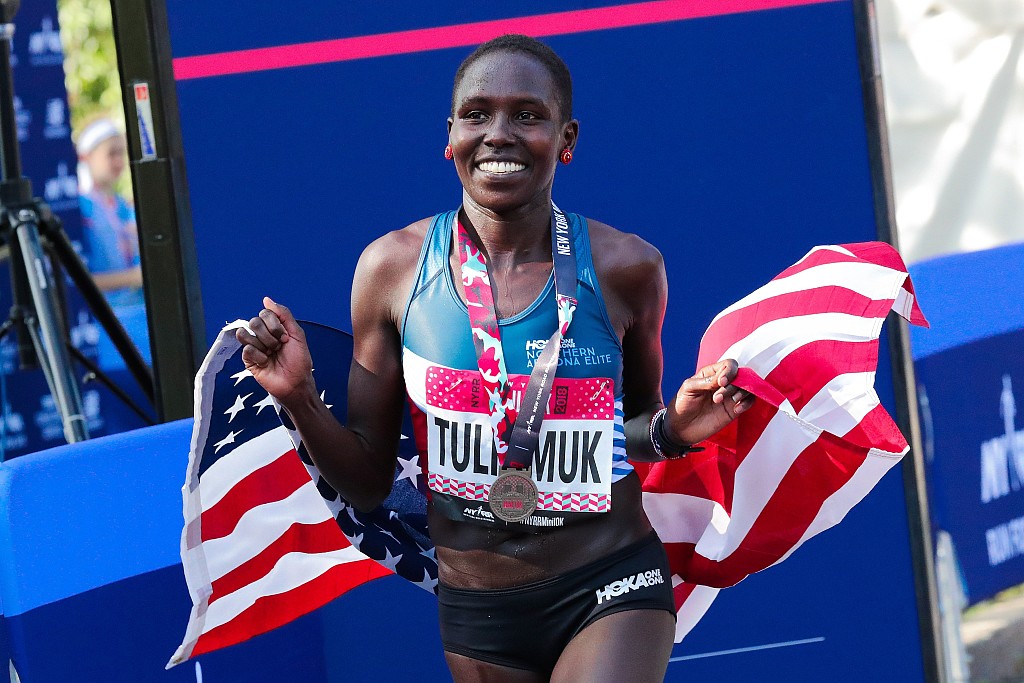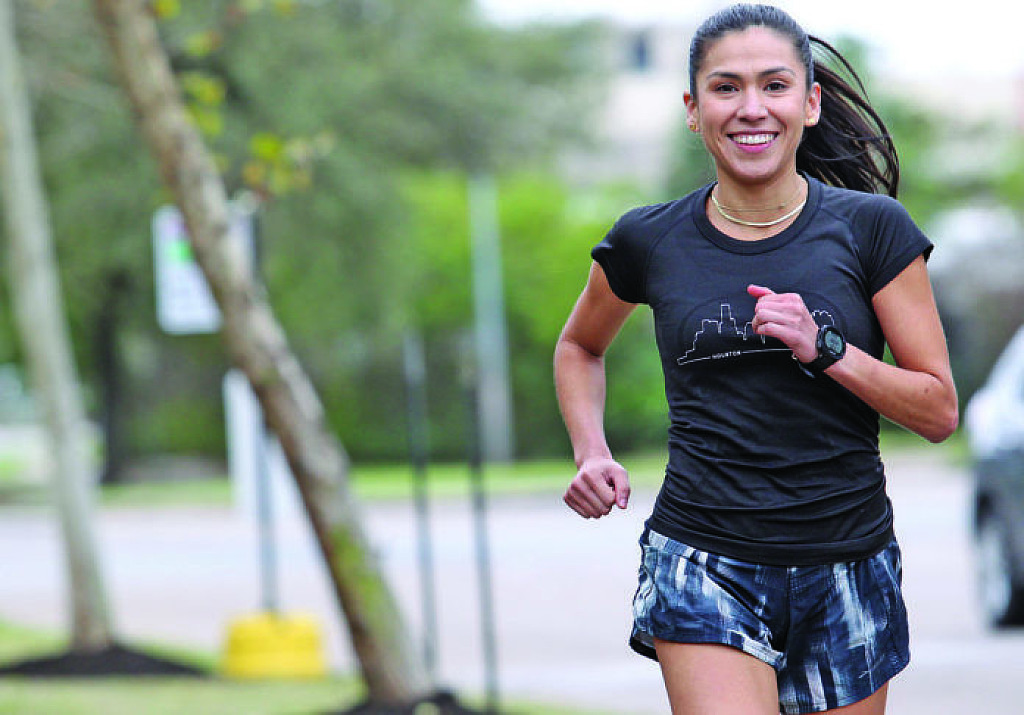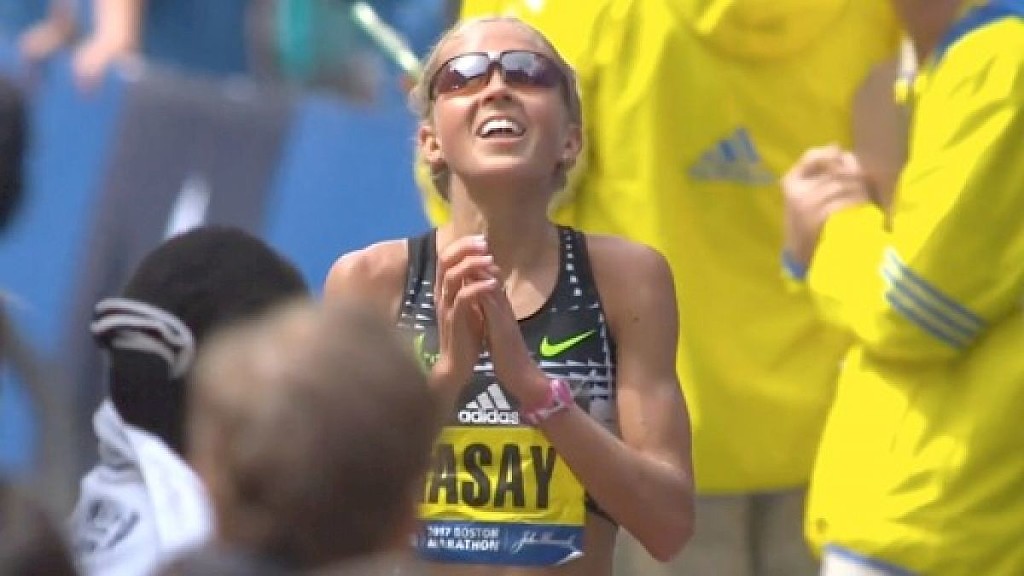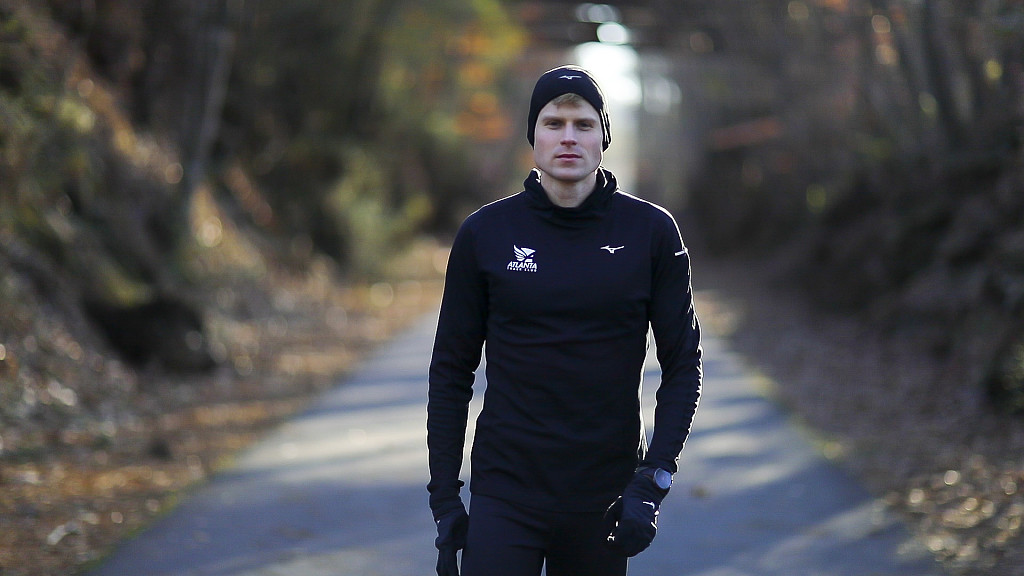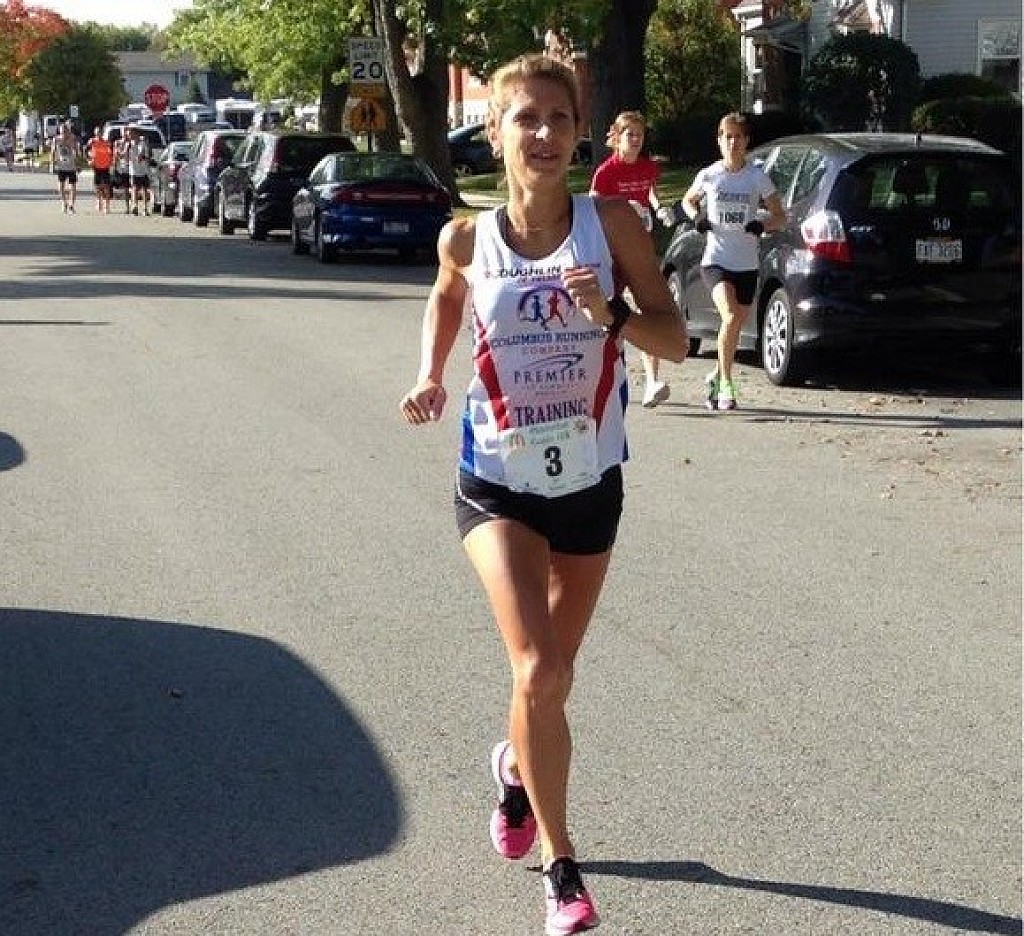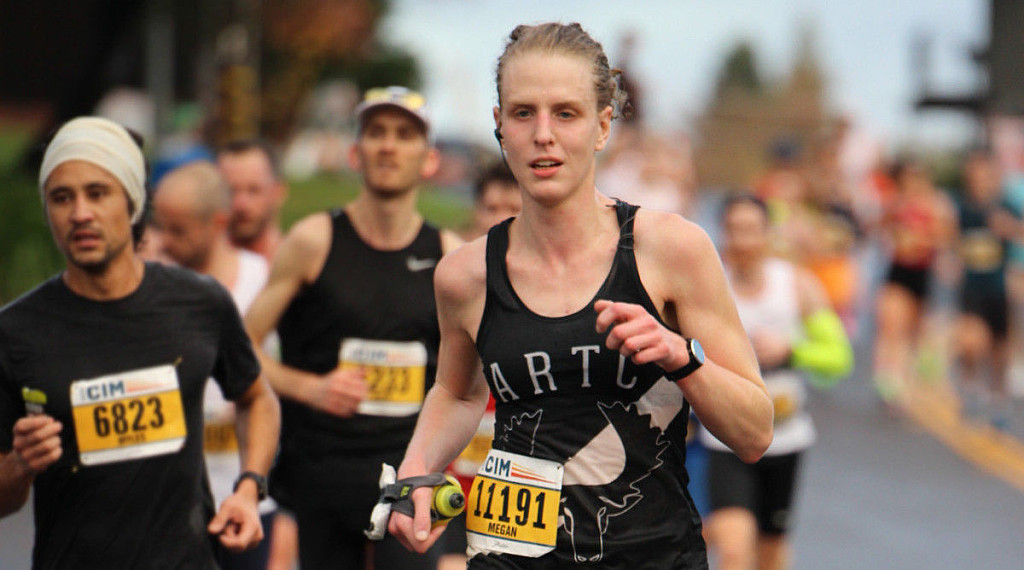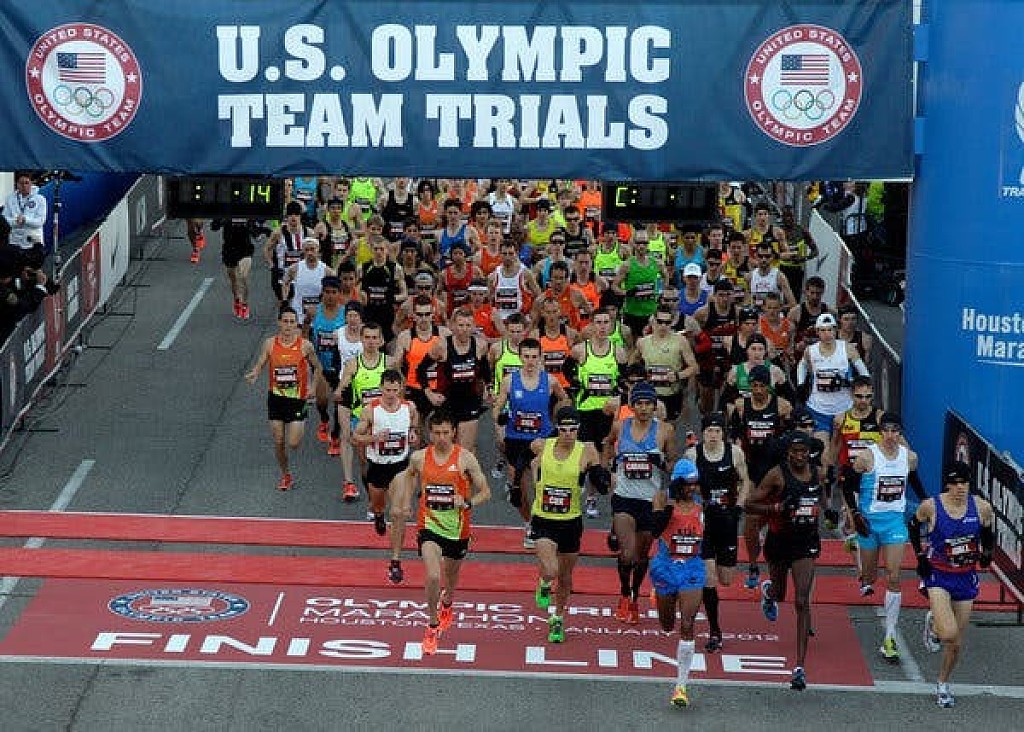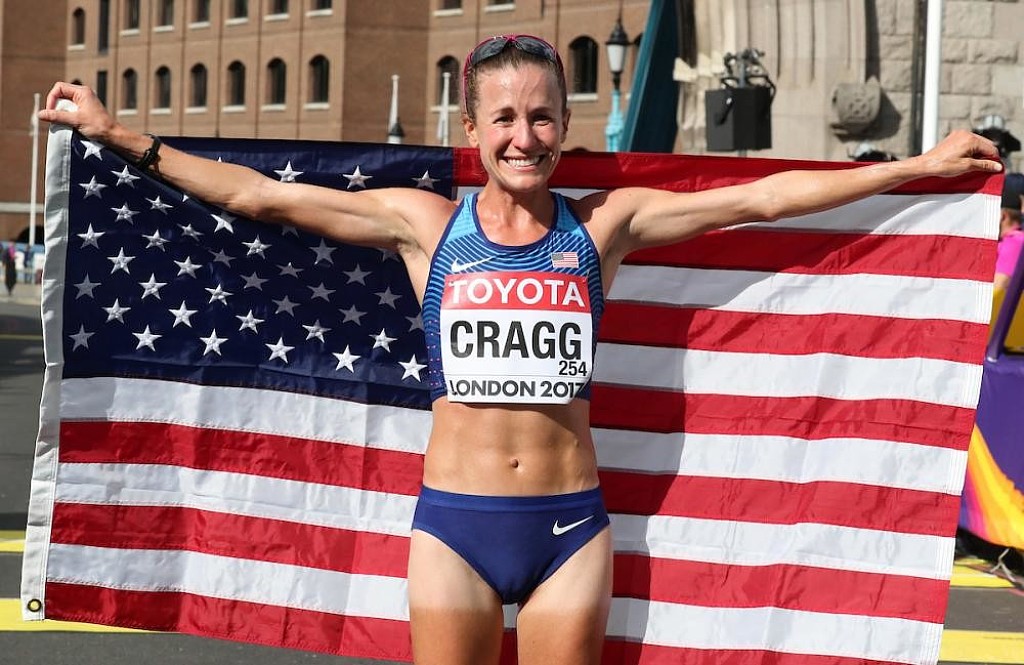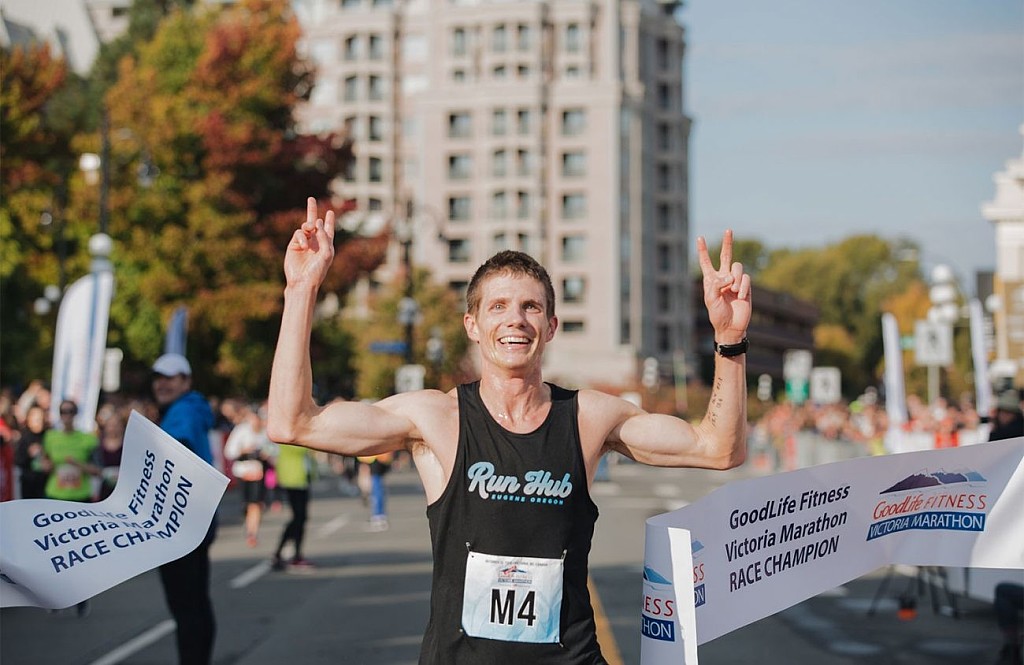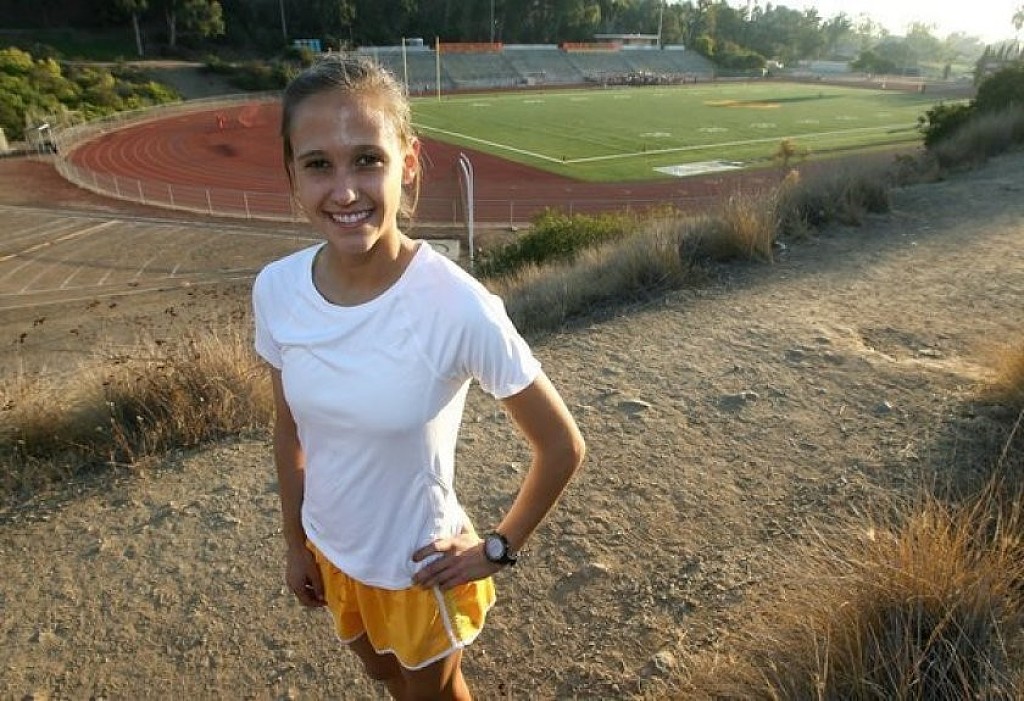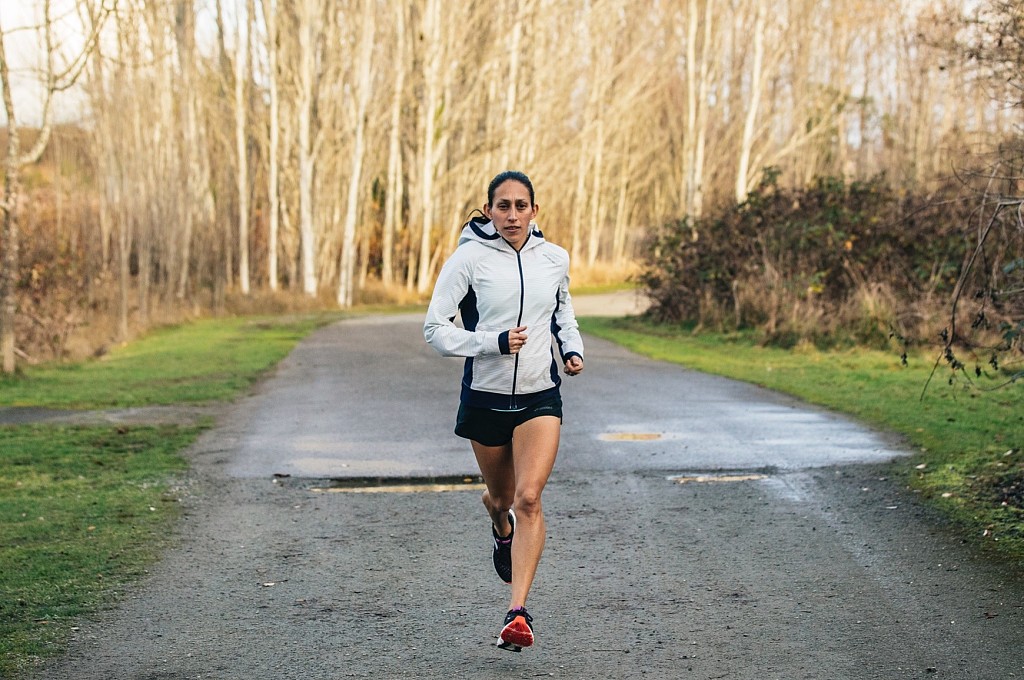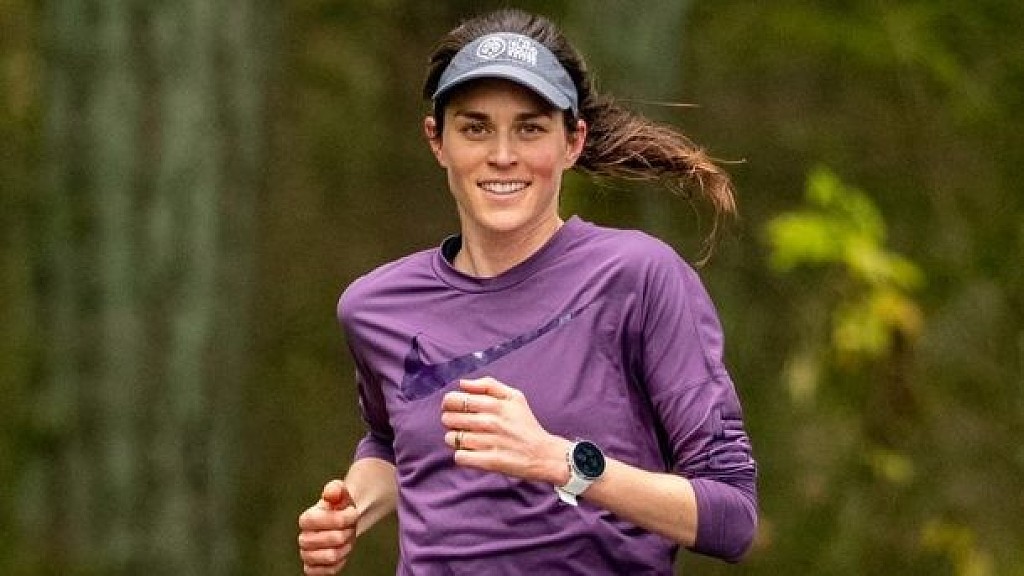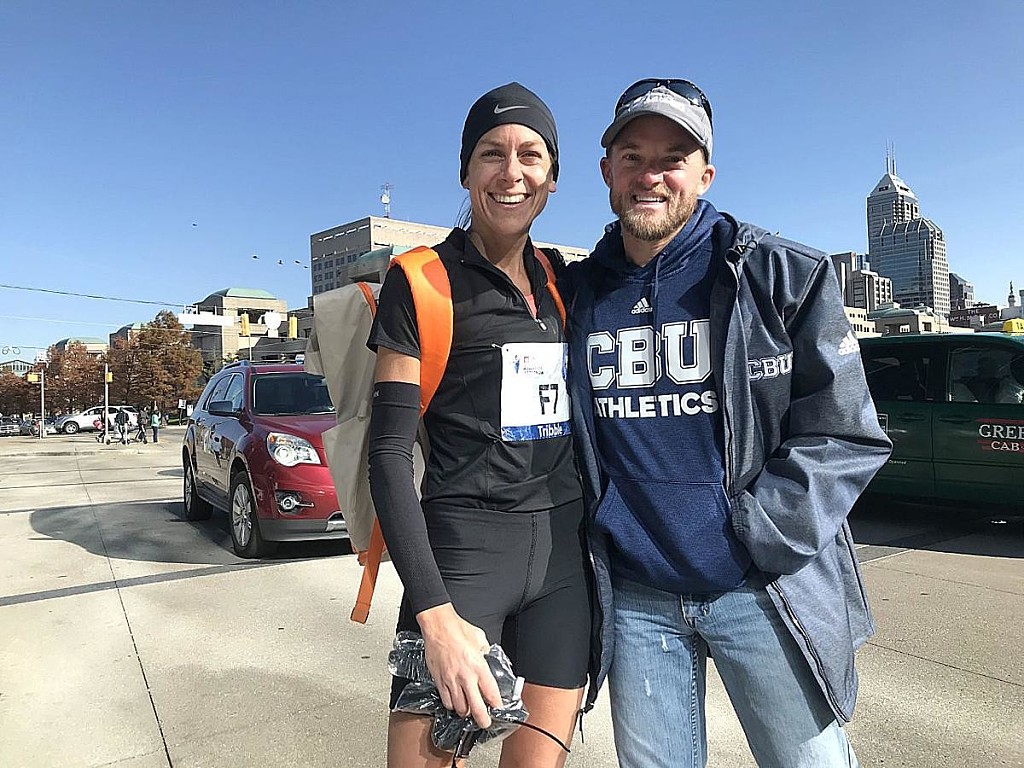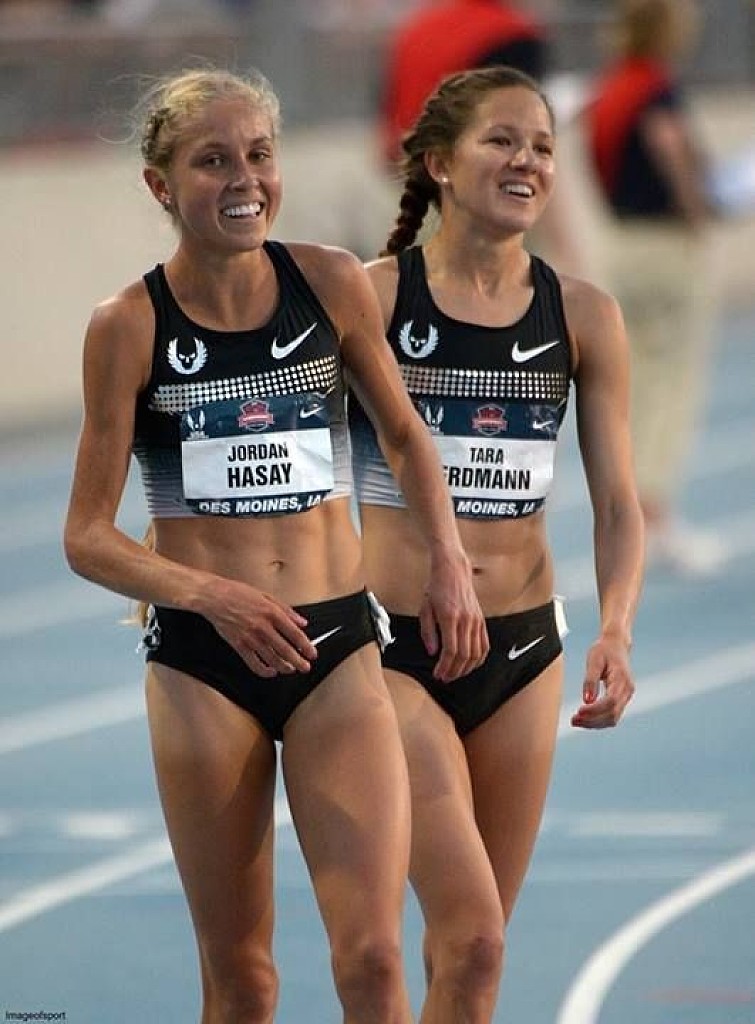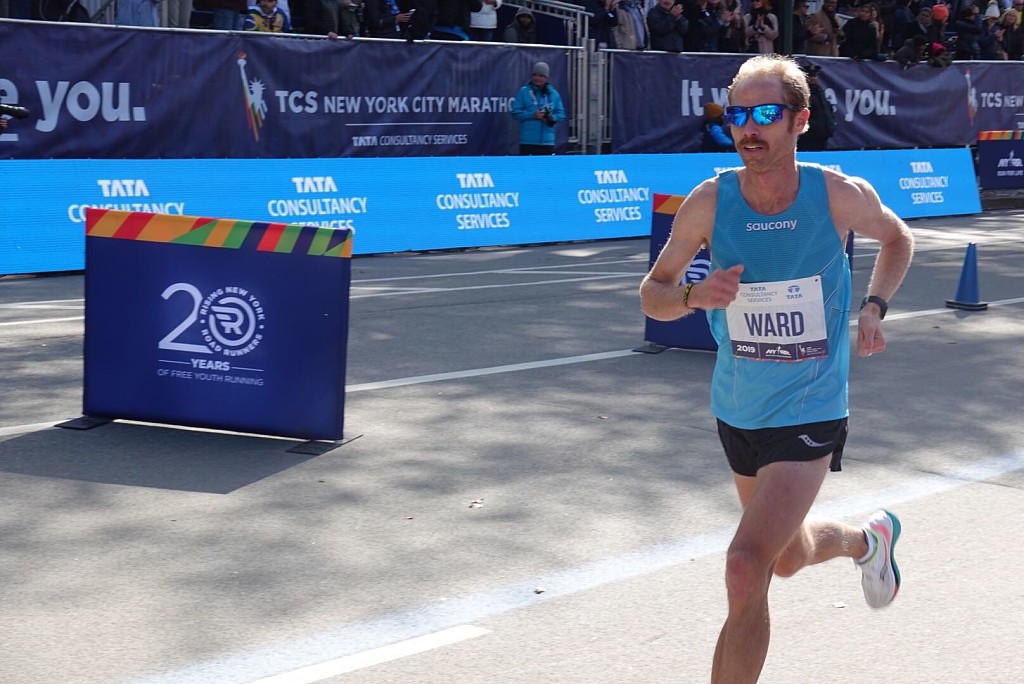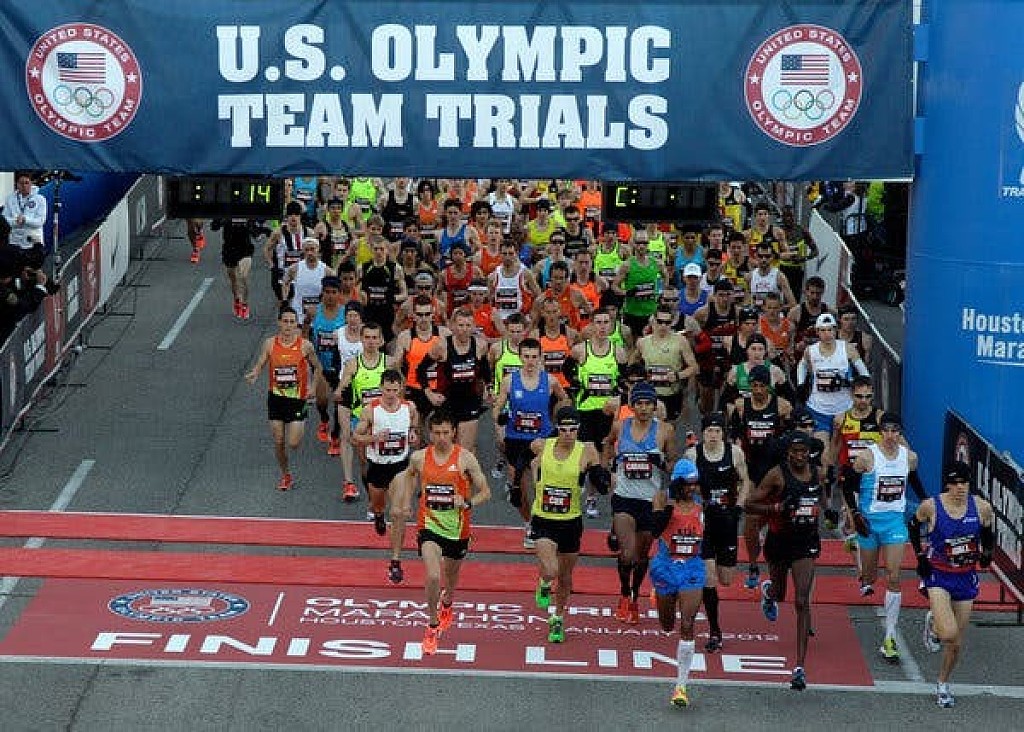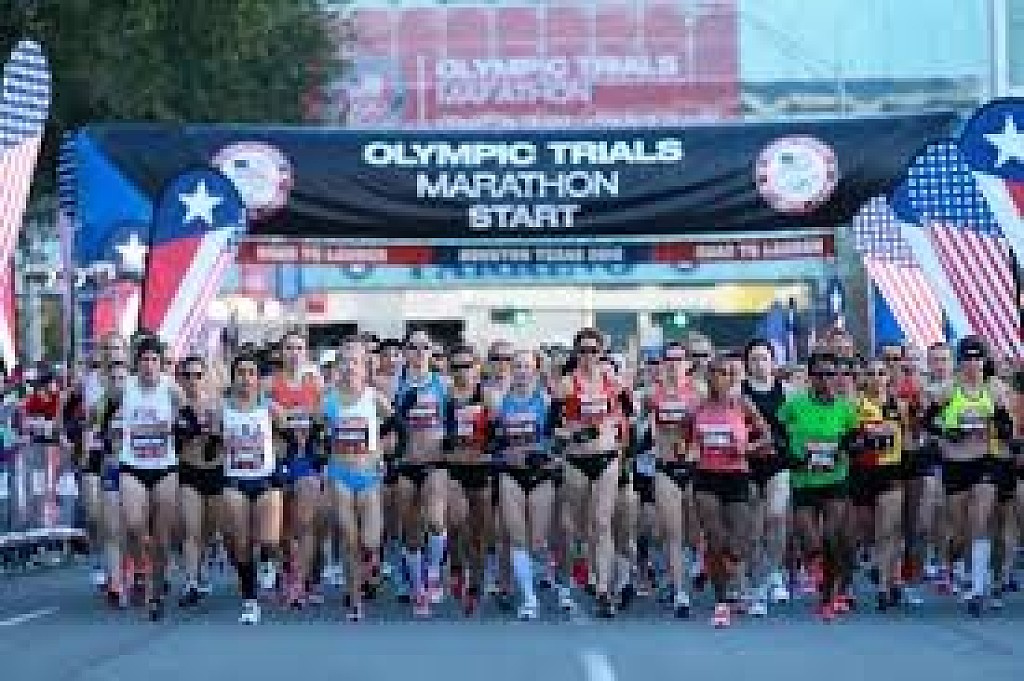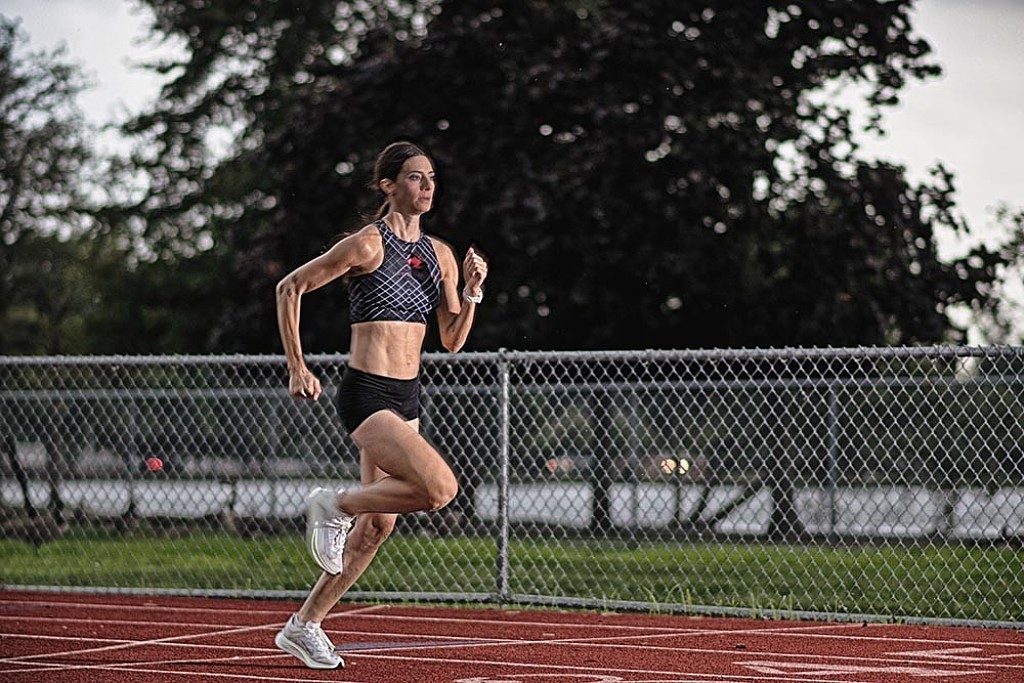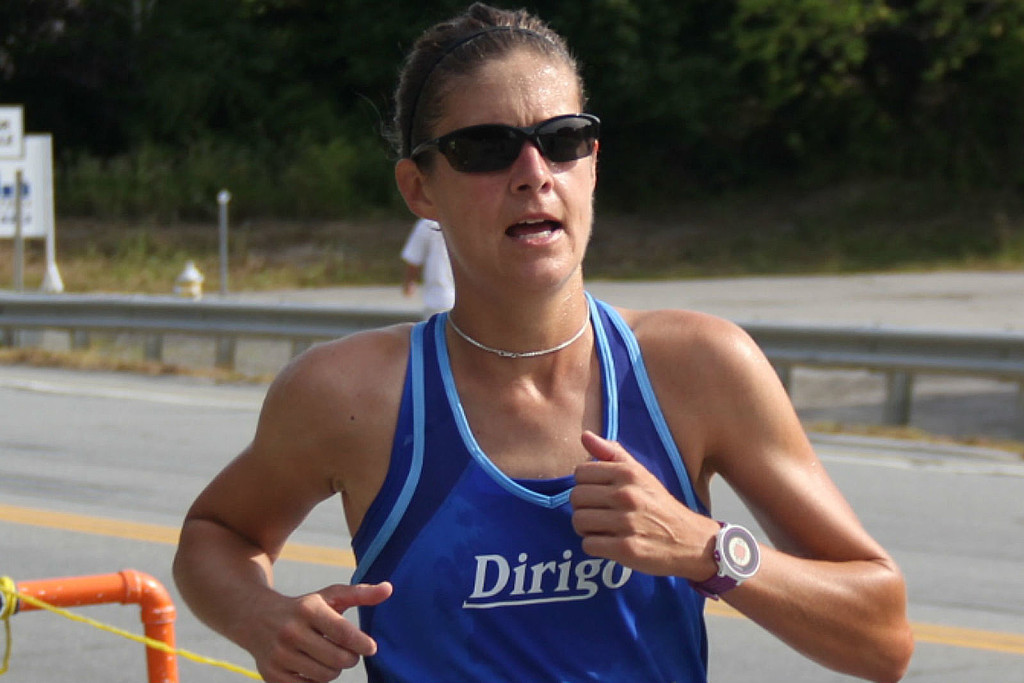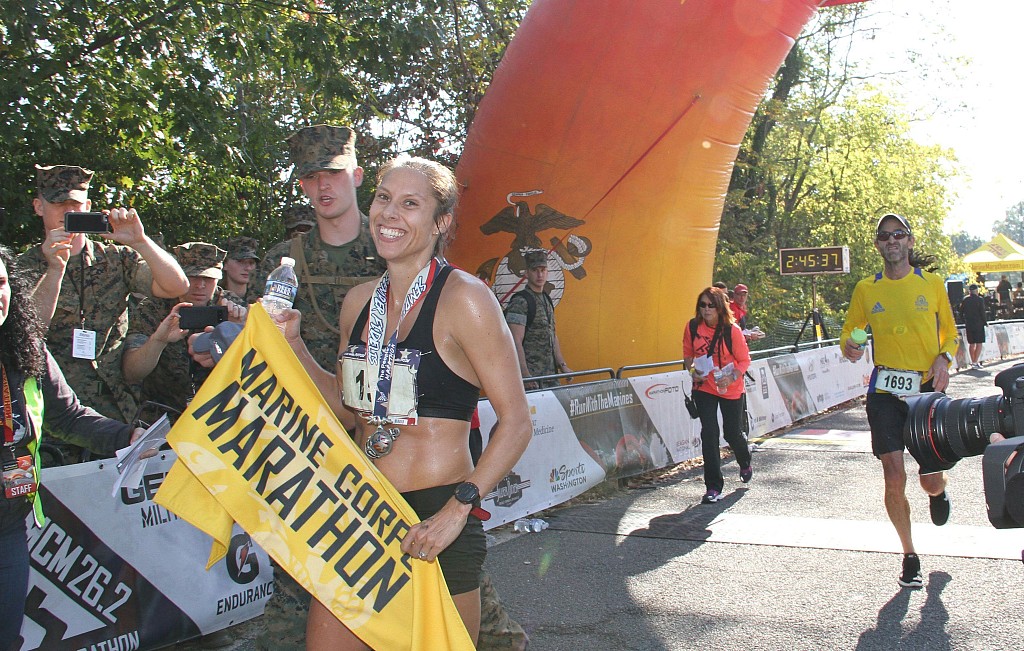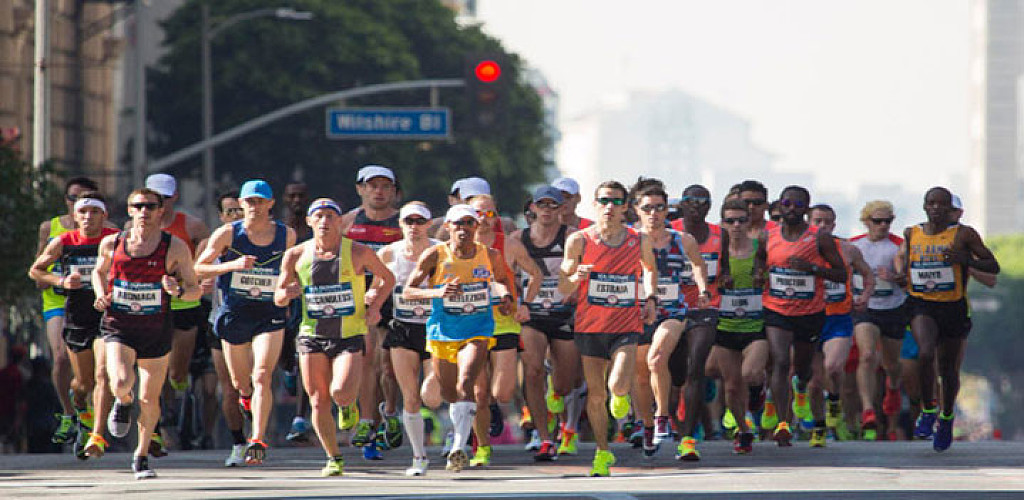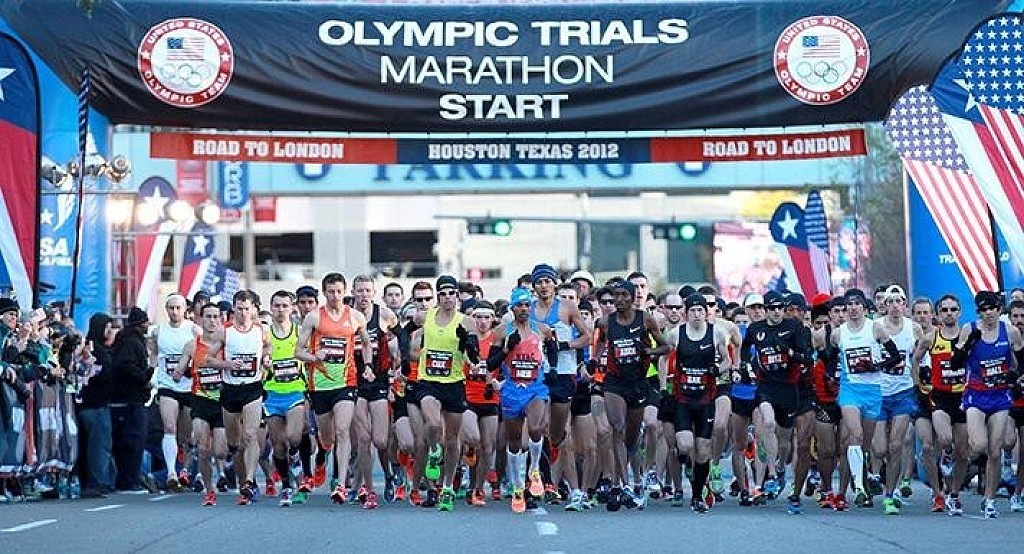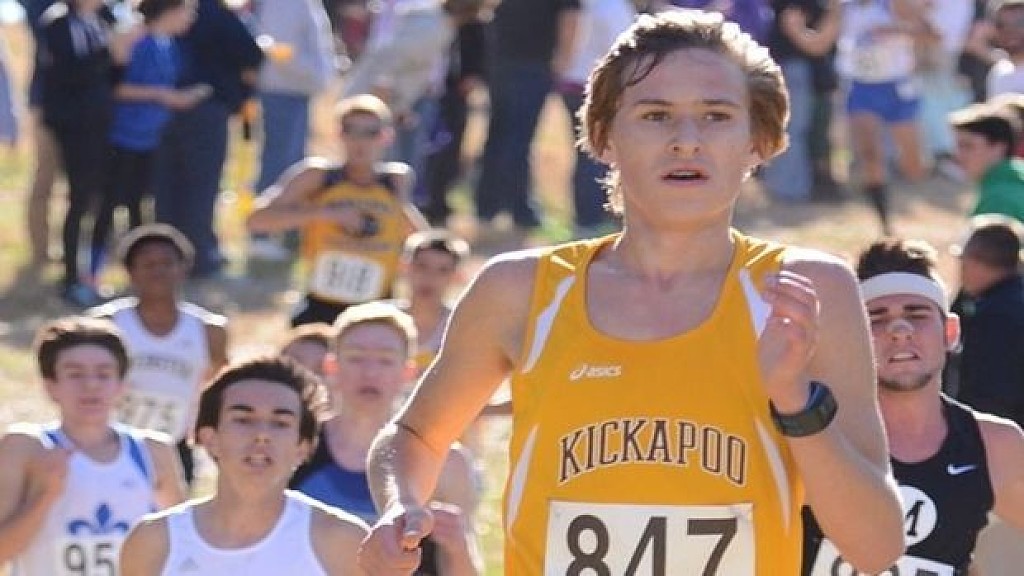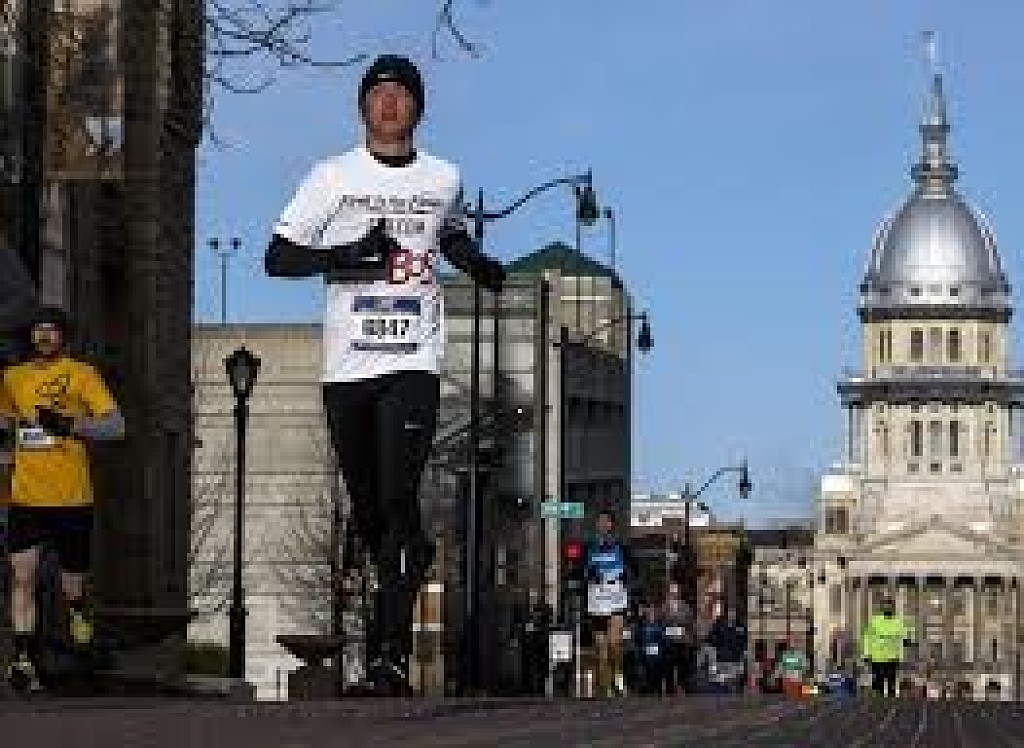Running News Daily
Running News Daily is edited by Bob Anderson. Send your news items to bob@mybestruns.com Advertising opportunities available. Train the Kenyan Way at KATA Kenya and Portugal owned and operated by Bob Anderson. Be sure to catch our movie A Long Run the movie KATA Running Camps and KATA Potato Farms - 31 now open in Kenya! https://kata.ke/
Index to Daily Posts · Sign Up For Updates · Run The World Feed
Sara Hall after finishing 5th at the American marathon Olympic Trials
My heart is broken, but my love for this sport is unchanged. Man I missed doing that and loved being out there flying along again, flanked by an incredible group of women I love and respect so much.
Even when you come up short, there’s no better feeling than going all-in and all-out on something you love.
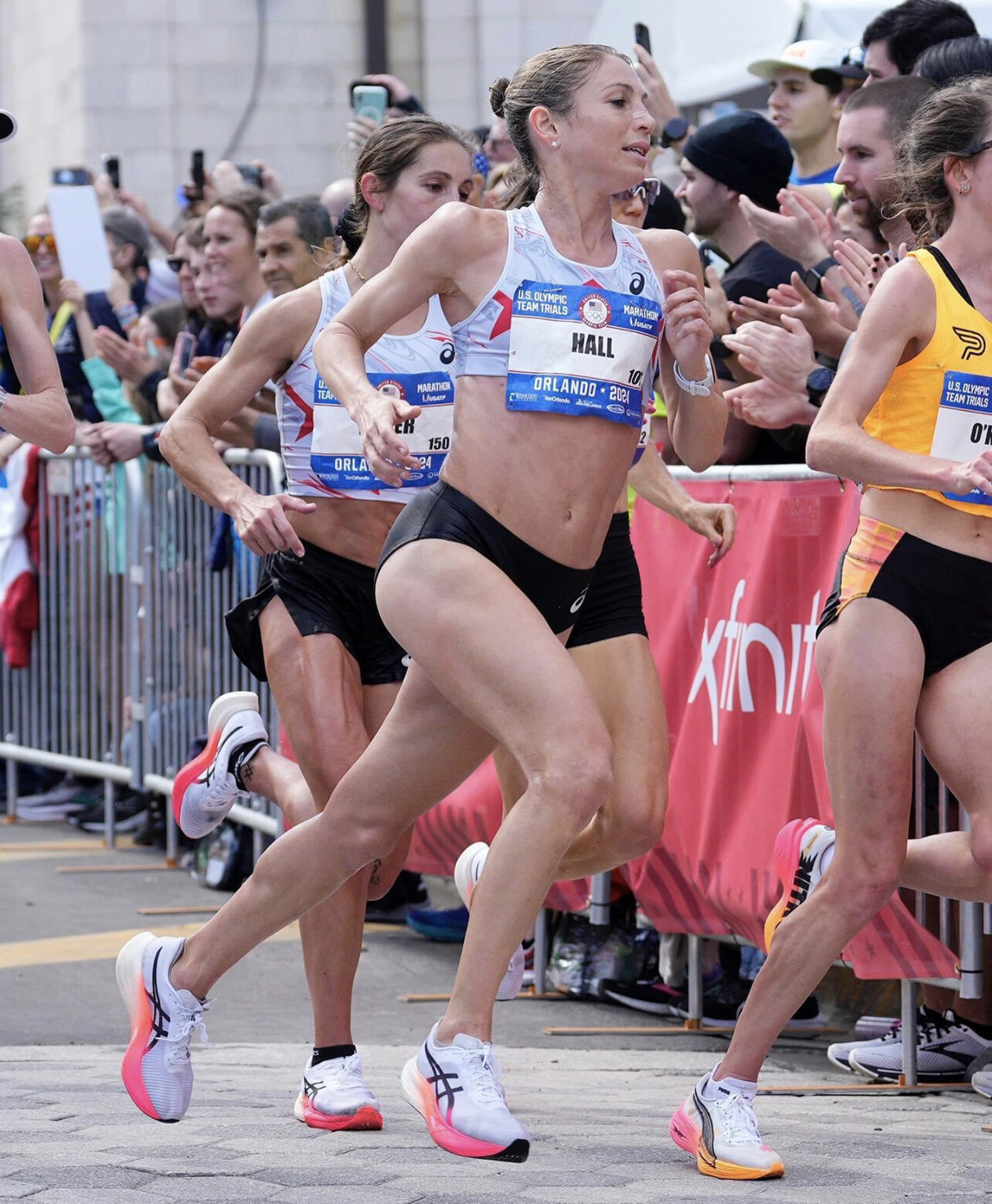
This one hurts more than any of the other 7, and yet I feel proud and have no regrets. Was in 3rd/could see 3rd the whole last lap as I battled through cramps. Never stopped believing, fought every step.
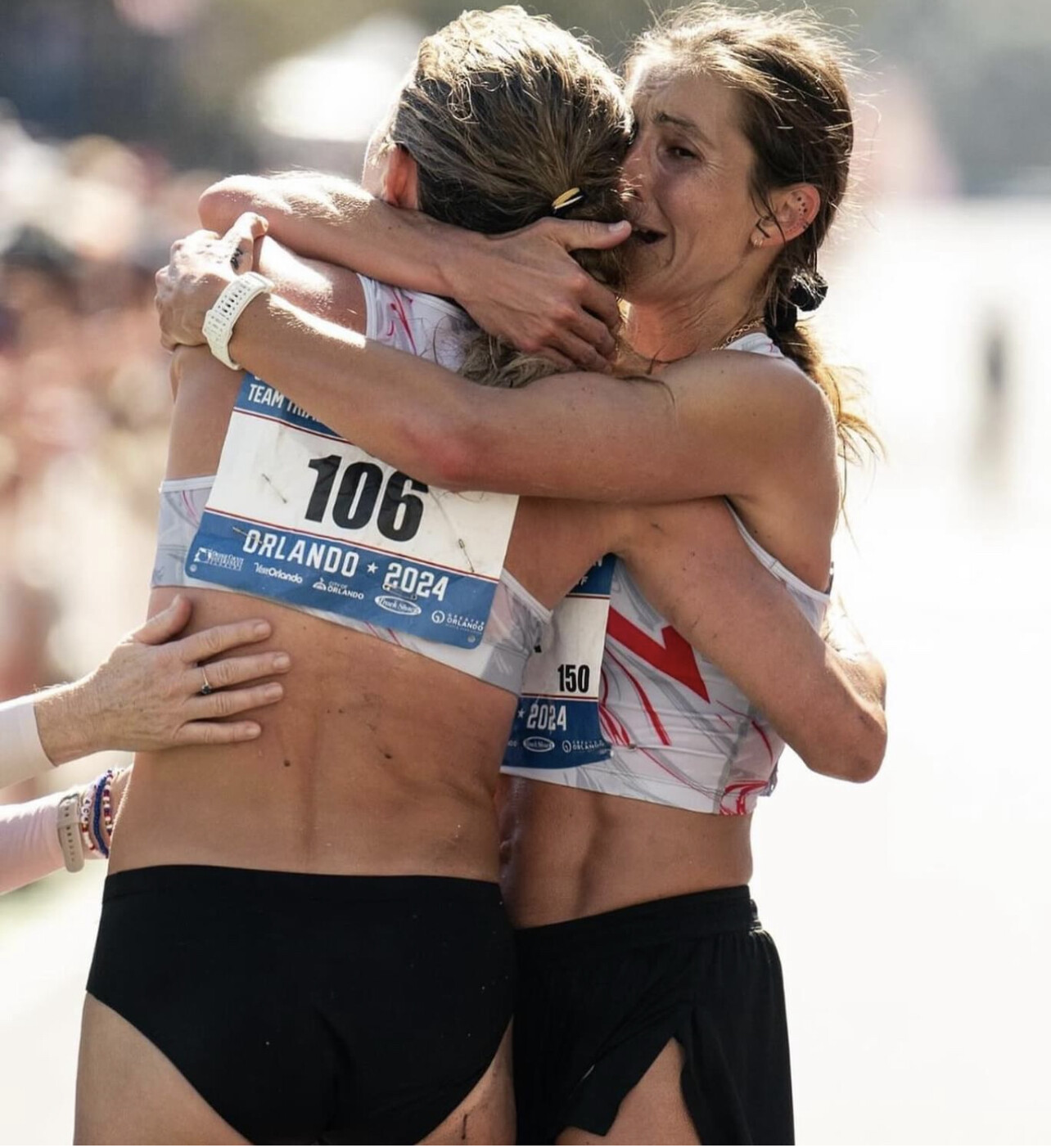
What a privilege to chase your dreams and have others believe in them with you. What incredible relationships I’ve made through this sport. I wouldn’t trade them for anything I’ve accomplished or could have accomplished.
Thanks for believing with me. The story continues.
Congratulations to our amazing team who are going to represent so amazingly in Paris!
by Sara Hall
Login to leave a comment
2028 US Olympic Trials Marathon
Most countries around the world use a selection committee to choose their Olympic Team Members, but not the USA. Prior to 1968, a series of races were used to select the USA Olympic Marathon team, but beginning in 1968 the format was changed to a single race on a single day with the top three finishers selected to be part...
more...Conner Mantz, Clayton Young Finish 1-2 At U.S. Olympic Trials Mens Marathon
Conner Mantz and Clayton Young, the two former BYU teammates and training partners, took the top two spots with Mantz winning in 2:09:05 and Young finishing in 2:09:06 at the U.S. Olympic Marathon Trials in Orlando.
Leonard Korir finished third in 2:09:57.
As of right now, only the Mantz and Young have guaranteed their spots on the team. Mantz, who ran a 2:07:48 at the 2023 Chicago Marathon, and Clayton Young, who tallied a time of 2:08:00 in Chicago, earned their qualifying times prior to the Trials.
Because Korir did not finish under the Olympic qualifying standard of 2:08:10, he can qualify achieving a high enough world ranking on the World Athletics list by May 5, or via that third spot becoming unlocked by a U.S. men's Top 5 finish in any of the remaining platinum-level marathons (Tokyo, Seoul, Boston) within the qualification window.
Zach Panning controlled the race from its early stages. The three-time NCAA Division 2 champion from Grand Valley State took a group of eight men through the half in 64:07. The pack remained tight through 17 miles when things started to string out. Defending champion Galen Rupp was among those who began falling back at this point as a five-second gap formed between the top five and sixth place.
Panning pushed the tempo a bit more at Mile 19 and with Mantz and Young in tow, the trio pulled away from the field and established themselves as the prime contenders for the team. The three ran together for the next three plus miles until Mantz and Young made their move to the front at the 23 mile mark and quickly opened a 20-meter gap on Panning that continued to swell.
With a mile to go in the race, Panning faded badly. Now gapped by Mantz and Young by almost a minute, the chasers had a target to focus on again within striking distance of a shot at the Olympics. Elkanah Kibet and Korir were the first to pass Panning and dueled over the final mile for that third-place spot. With a half mile to go, Korir emerged as the stronger of the two and held position.
Kibet finished fourth in 2:10:02. CJ Albertson moved up in that final mile and finished fifth in 2:10:07 while Panning wound up sixth in 2:10:50.
Rupp, who was attempting to make a fifth Olympic team, placed 16th in 2:14:07.
Scott Fauble, the top American at the last two Boston Marathons, dropped from the lead pack in the eighth mile and pulled out before the half marathon mark.
Five-time Olympian Abdi Abdirahman, 47, dropped out of the race around the same time.
by Flo track by Joe Battaglia
Login to leave a comment
2028 US Olympic Trials Marathon
Most countries around the world use a selection committee to choose their Olympic Team Members, but not the USA. Prior to 1968, a series of races were used to select the USA Olympic Marathon team, but beginning in 1968 the format was changed to a single race on a single day with the top three finishers selected to be part...
more...2024 U.S. Olympic marathon trials: Conner Mantz and Fiona O'Keeffe race to victory
Mantz crossed the finish line just in front of training partner Clayton Young in the men's race. Fiona O'Keeffe dominated the women's race in a record-breaking debut marathon.
Conner Mantz and Fiona O'Keeffe raced to victory at the 2024 U.S. Olympic marathon trials on 3 February in Orlando to secure their spots on this year's Olympic team ahead of the Paris 2024 Games.
In the men's race, Mantz crossed the line in 2:09:05, directly in front of training partner and close friend Clayton Young, who crossed the line in second place just one second later. Young has also secured a quota for Paris having previously run the Olympic entry standard at the 2022 Chicago Marathon. Leonard Korir ran 2:09:57 to finish in third.
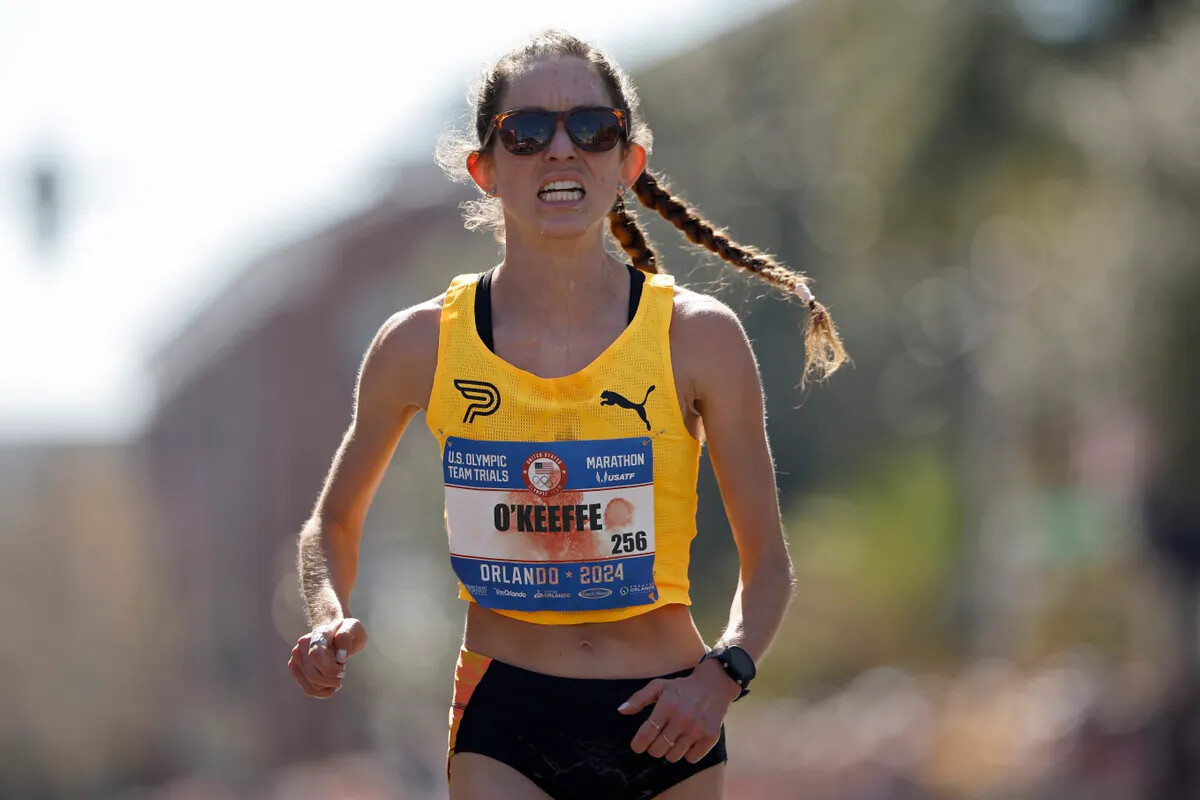
In her first marathon ever, O'Keeffe took a hugely impressive win in the women's race, breaking the U.S. Trials record with a time of 2:22:10.
She was comfortably in front of second-place finisher and American record holder Emily SIsson who ran through the line in a time of 2:22:42.
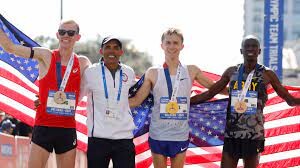
Dakotah Lindwurm couldn't believe her 2:25:31 third-place finish and looked around in shock as she crossed the line.
The largely fat course near Lake Eola Park was made up of an approximately 2.2-mile (five-and-a-half kilometer) loop followed by three eight-mile (12-kilometer) loops to the finish line. It was a sunny but humid 55˚F (13˚C ) at the 10:10 am start.
Women's winner Fiona O'Keeffe: "I'm so excited about this team"
“The goal has always been to make an Olympic team,” Mantz said in a post-race interview.
His mental strategy had been to run each mile for a different person - his mom, his dad, Clayton, with the final lap being for his wife.
“Let’s go to Paris, let’s make this happen,” second-place Young smiled after a close-to-ideal race that unfolded alongside his friend and fellow Utah native Mantz.
Zach Panning had led the way for the majority of the race before Mantz and Young took over the lead and pulled ahead with less than four miles to go. Panning fell back further as Korir took over in the final stretch to secure third.
In the women's race, O'Keeffe detailed the excitement she had felt with eight miles to go, having to remind herself not to "freak out."
"The past couple years I’ve been clawing my way through things," she said, before adding of her victory that she is now "so excited about this team."
Sisson, the women's American record holder in the marathon, has previous experience of the Olympics, having come 10th in the 10,000m at Tokyo 2020.
"I'm elated," she said, reflecting on making her second Olympic team in front of her friends and family.
Lindwurm was still in disbelief as she laughed with the press after the race, revealing ”I’m such an underdog… I was a walk on to my Division II team."
by Sam Peene
Login to leave a comment
2028 US Olympic Trials Marathon
Most countries around the world use a selection committee to choose their Olympic Team Members, but not the USA. Prior to 1968, a series of races were used to select the USA Olympic Marathon team, but beginning in 1968 the format was changed to a single race on a single day with the top three finishers selected to be part...
more...Emily Sisson, Olympic Marathon Trials favorite, is ready for Saturday
Emily Sisson is the American record holder (2:18:29) in the marathon and the pre-race favorite to win the 2024 US Olympic Marathon Trials.
At the time of publication, 64.2% of you are picking her to win the Trials in the LRC $20,024 Prediction Contest Sponsored by Relay.
Sisson talked to LRC this week via video conference, and by all accounts her buildup for Orlando has gone very well.
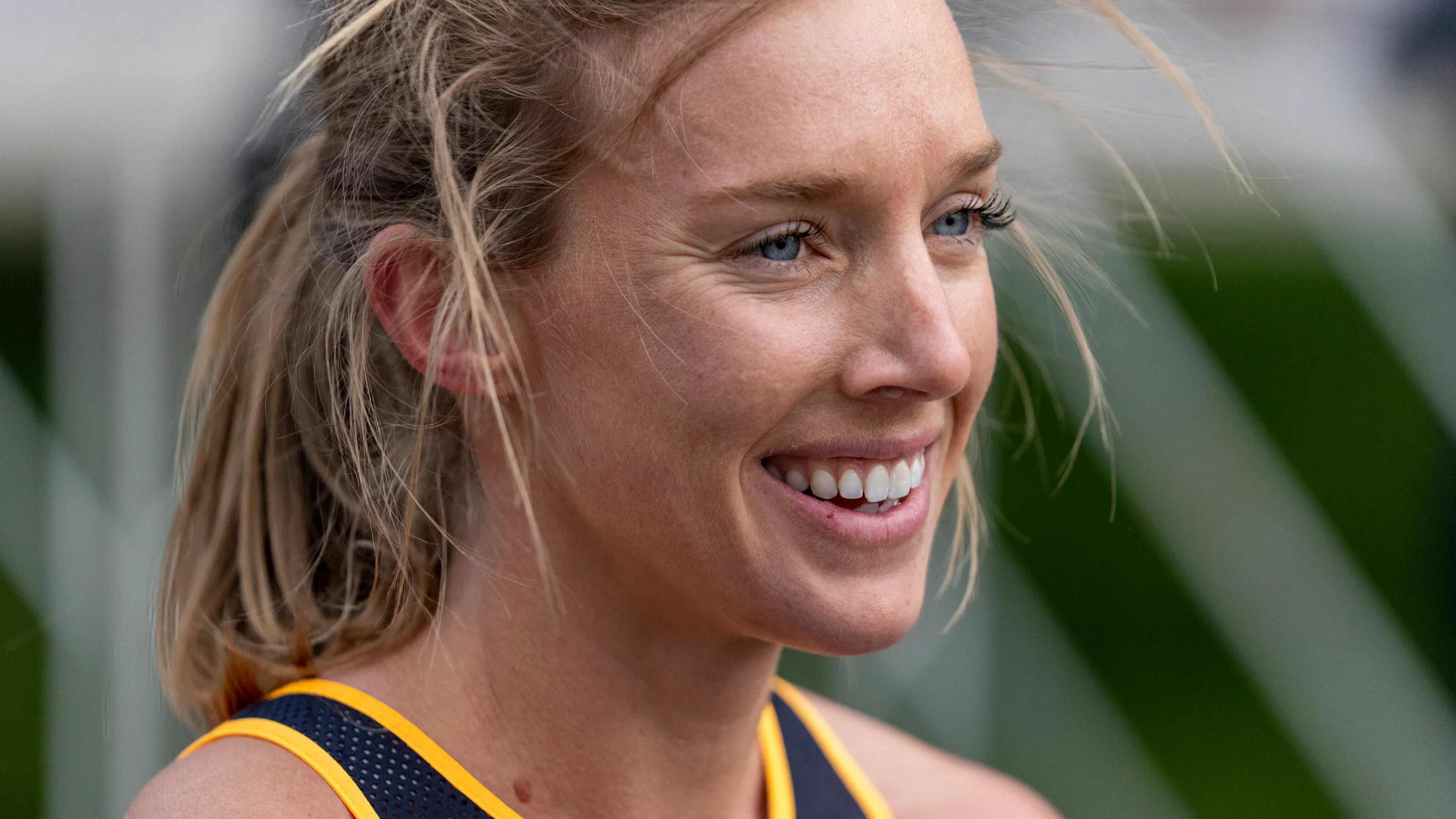
“Everything’s been better, all the long runs, all the tempos, and actually my long interval workouts, those have actually been better than they’ve been before.”
When Sisson was asked to compare her fitness and buildup to the 2022 Bank of America Chicago Marathon where she broke the American record, she said:
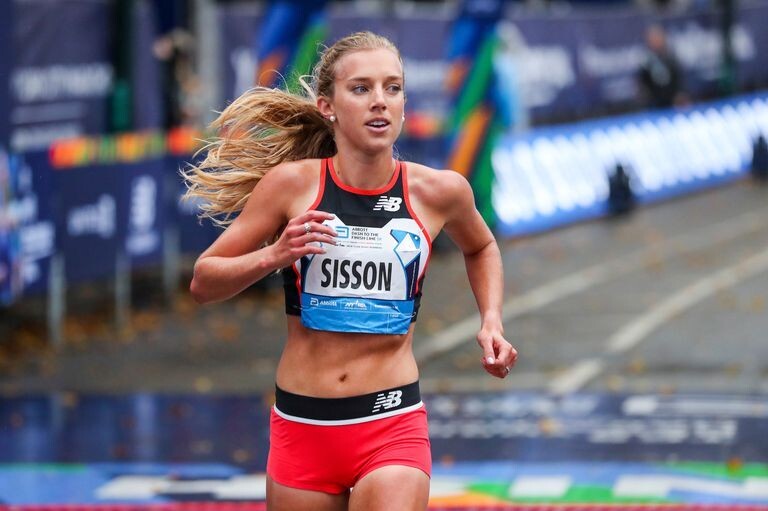
Everything’s been better, all the long runs, all the tempos, and actually my long interval workouts, those have actually been better than they’ve been before.
The workouts like on paper, like the times they’re all better. I think like I get confidence from that, but also just I’m feeling good and I’m feeling strong. So the training’s been good.
Sisson ran a 30:52 time trial on the roads in Arizona, which is just slightly slower than her official track PB of 30:49. Sisson, unlike Trials #2 contender Betsy Saina who ran a workout with 12 male pacers in Kenya, ran the workout all alone although her husband Shane was next to her on a bike. Sisson wasn’t blown away by almost setting a 10k PR in practice, as she said her track PR should be much faster. But she was pleased she could run that pace by herself. “I was happy that I was able to push myself that hard on my own,” she said.
Lessons from Chicago 2023
Chicago 2023 didn’t go as well as Chicago 2022 for Sisson, as she developed a side stitch later in the race and ran 2:22:09 for 7th place.
Sisson now views the Chicago 2023 setback as a positive experience as she learned from it. “We found some videos early on in Chicago and I just looked a little less fluid this past fall than I did in my 2022 Chicago. It was really subtle, like there was a little bit more movement in my upper body. So, we’re trying to like stay on top of that a bit more this time just to make sure nothing like a side stitch or anything else breaks down again,” she said, adding she worked with chiropractor John Ball.
Respect for the competition and the marathon distance
Sisson enters the Trials not only fit but healthy. When asked whether she worries about the other competitors in the race, she said, “It’s not that I don’t worry about my competitors. It’s not that I don’t think about them, but, I just feel like the marathon’s different than like a half marathon or a 10k. When I go into those races, I’m just trying to be as fit as I can and try to be fitter than my other competitors. But in the marathon, you are racing your other competitors, but you’re also racing the marathon itself. So it doesn’t matter, what your competitors are doing.”
“I feel fit and I feel healthy. With a marathon, that’s not everything, but those are two big parts of it. So I am happy with that. I’m happy with how training went,” Sisson said.
Getting a Real Olympic Experience
While Sisson made the 2020 Olympic in the 10,000m, she, like Aliphine Tuliamuk, said she missed out on the traditional Olympic experience because of the Covid protocols. She’d like to get another shot at it. “Being an Olympian is like the biggest dream,” she said of a goal that started when she watched Olympic gymnastics with her mom as a kid.
“I was so thankful they happened in 2021, but it was definitely a different Olympic experience than Olympics prior. So I’d love to get back there.”
Of Sisson’s 5 marathons, the only one that went poorly was the 2020 Olympic Marathon Trials in Atlanta where she dropped out.
Now with some time to reflect, Sisson has a better picture of what she think went wrong. “I think I went too hard in the buildup. I think my body, when I was standing on the start line, I think I was tired and, and I just didn’t realize it at the time because I was so new to the marathon, I thought it was just so normal to be tired, but there were things afterwards that I looked back on and there were signs that maybe I’d pushed it too hard in training.”
Sisson has backed off a little in her training this time. “So we did try to focus this time on getting good training in, getting in a good buildup, but just not overdoing it. I don’t wanna leave my race in training,” she said.
Sisson does believe she can do well in a hilly marathon. If she qualifies for Paris, she’ll get the chance as the Olympic course has a massive uphill heading to Versailles.
by Weldon Johnson
Login to leave a comment
2028 US Olympic Trials Marathon
Most countries around the world use a selection committee to choose their Olympic Team Members, but not the USA. Prior to 1968, a series of races were used to select the USA Olympic Marathon team, but beginning in 1968 the format was changed to a single race on a single day with the top three finishers selected to be part...
more...Molly Seidel withdraws from Olympic Marathon Trials due to injury
Tokyo Olympic bronze medalist Molly Seidel announced she is withdrawing from Saturday’s U.S. marathon trials for the Paris Games due to a knee injury.
Seidel, 29, said in a video posted Thursday that she suffered a knee injury a month ago, couldn’t run on it and got an MRI that revealed a broken patella and a partially torn patella tendon.
“I have done everything in my power over this last month to try and get myself to the (starting) line,” she said. “I’ve had just the most incredible physios and doctors doing everything in their power to help me. I’ve been cross-training my (butt) off, but ultimately I got to this week, and my knee had not healed up enough, and I knew that I could not race a marathon hard on it in its current state without really, really injuring myself.”
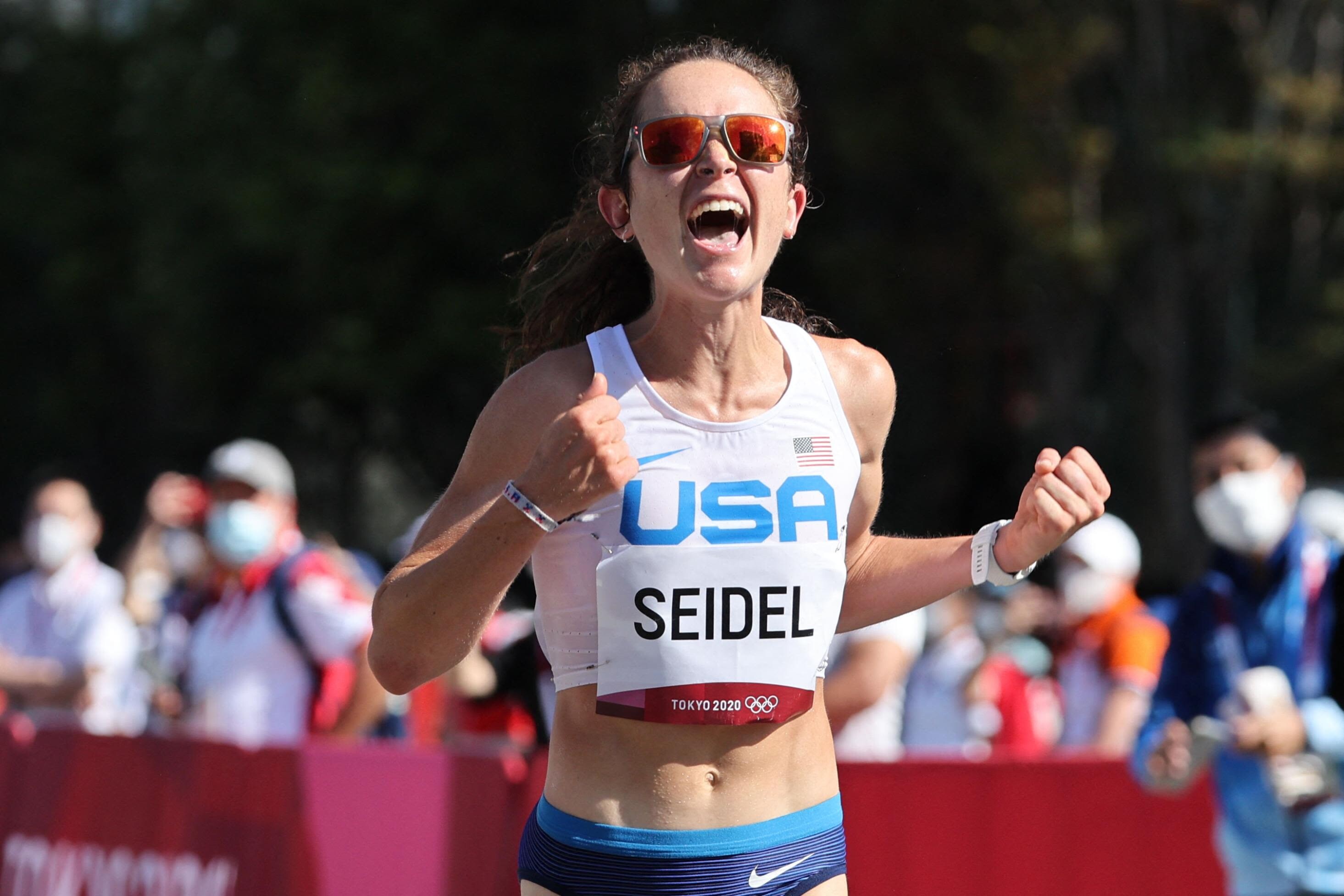
The trials are Saturday at 10 a.m. ET from Orlando, airing live on Peacock with coverage on NBC, NBCSports.com and the NBC Sports app at noon.
Four years ago, Seidel placed second in the trials in her marathon debut to make the three-woman Olympic team.
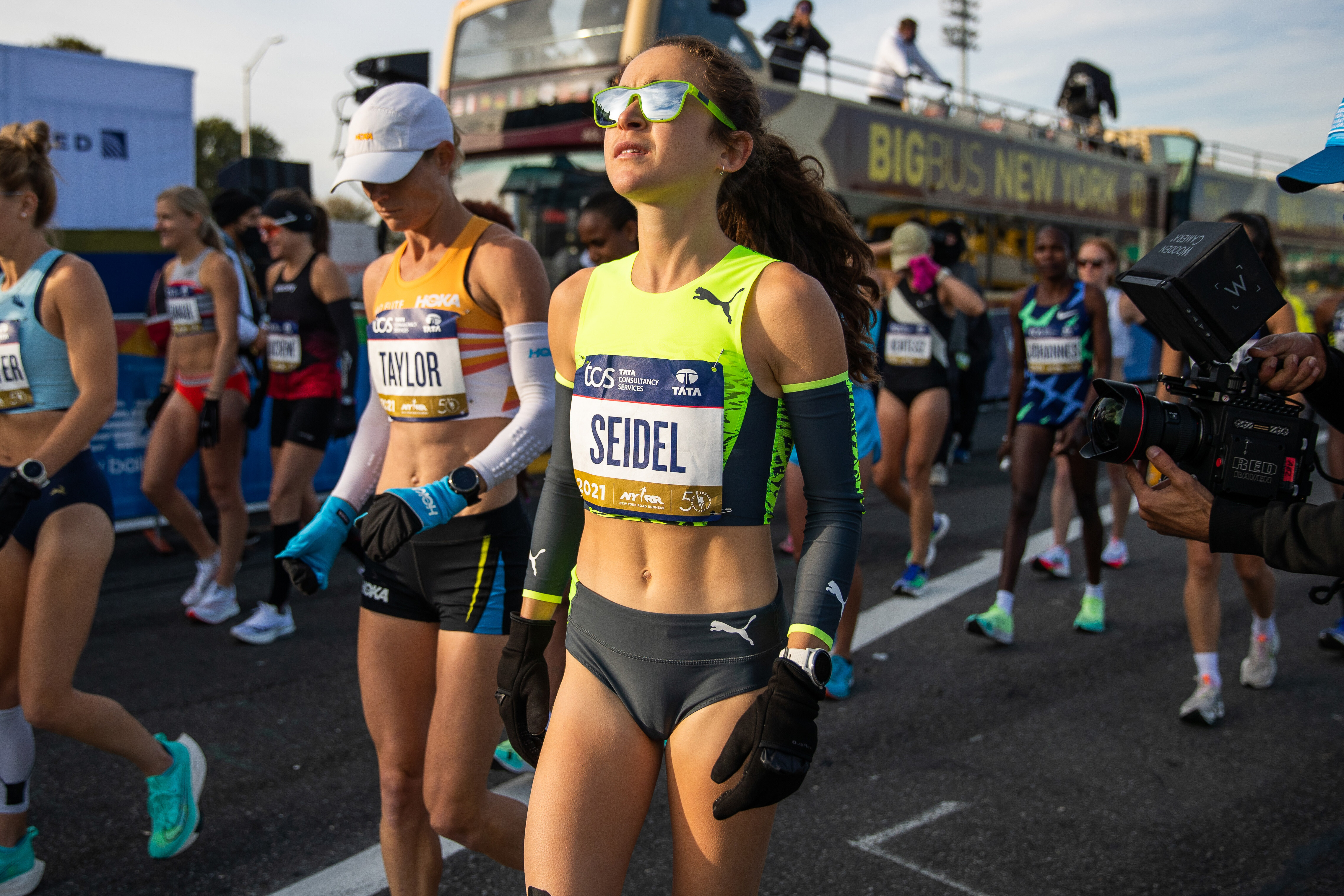
After the COVID-19 pandemic postponed the Tokyo Games by one year, Seidel finished third in the Olympic marathon held in Sapporo.
She became the third U.S. woman to win a marathon medal after Joan Benoit Samuelson, who won the first Olympic women’s marathon in 1984, and Deena Kastor, the 2004 bronze medalist.
After Tokyo, Seidel dealt with a hip injury and anemia, plus took time to focus on mental health after an eating disorder relapse.
Then last Oct. 8, Seidel finished a 26.2-mile race for the first time in two years. She was the second-fastest American woman at the Chicago Marathon, running a personal best and re-establishing herself as a prime candidate to make the Paris team of three at trials.
Seidel is the second contender to withdraw in the lead-up to trials.
Emma Bates, the third-fastest U.S. female marathoner of 2023, bowed out Jan. 7, saying then, “There’s just not enough time to be where I need to be.”
The field still includes three of the four fastest American women in history — American record holder Emily Sisson, former American record holder Keira D’Amato and Sara Hall, No. 4 on the all-time list.
Plus, former Iowa State teammates Betsy Saina (the fastest American in 2023) and Aliphine Tuliamuk (Tokyo Olympic Trials winner).
by Olympic Talk
Login to leave a comment
2028 US Olympic Trials Marathon
Most countries around the world use a selection committee to choose their Olympic Team Members, but not the USA. Prior to 1968, a series of races were used to select the USA Olympic Marathon team, but beginning in 1968 the format was changed to a single race on a single day with the top three finishers selected to be part...
more...U.S. Olympic Marathon Trials unveil huge prize pool
We are less than a week away from one of the most exciting pre-Olympic qualification events: the 2024 U.S. Olympic Marathon Trials (on Feb. 3). Not only will the top three men and women have the opportunity to represent Team USA in the marathon at the 2024 Paris Olympics, they will also share a large portion of the USD $600,000 prize pool.
The winners of the men’s and women’s races will each take home $80,000, while the second and third-place finishers will receive prizes of $65,000 and $55,000, respectively. The total prize purse for Orlando 2024 has increased by $120,000 from the $480,000 that was at stake in the 2020 U.S. Olympic Marathon Trials in Atlanta four years ago.
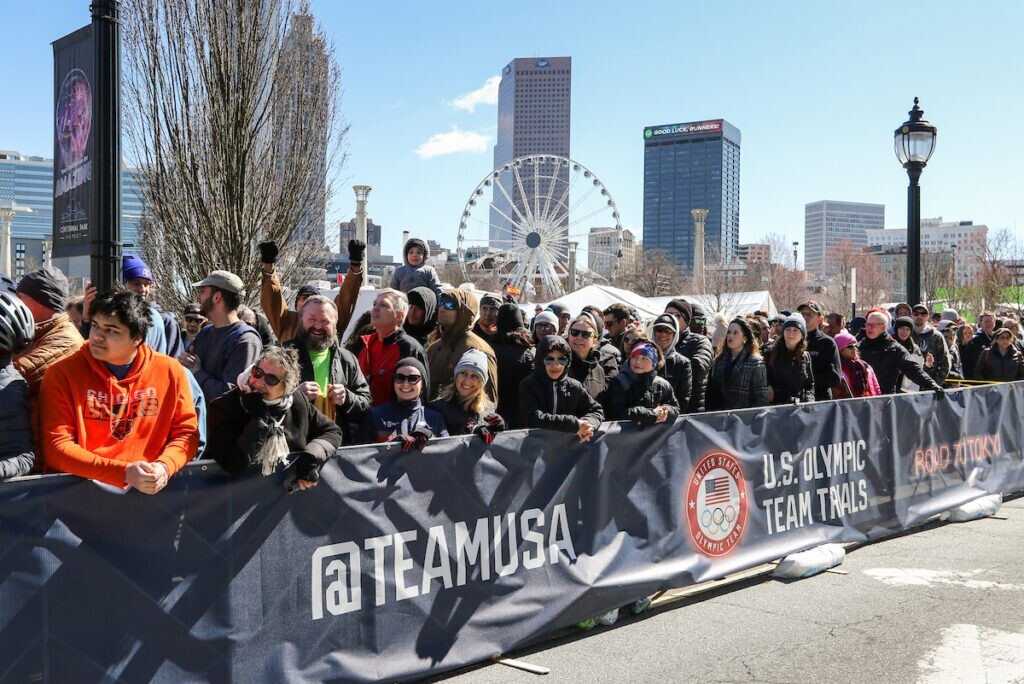
Beyond the top three, the prize money is distributed as follows: $25,000, $20,000, $15,000, $13,000, $11,000, and $9,000 for the fourth through ninth positions. The 10th-place finisher will receive $7,000. The 2024 U.S. Olympic Marathon Trials will be broadcast live on Saturday, Feb. 3, at 10 a.m. ET on Peacock, with additional coverage on NBC at noon from Orlando. The NBC broadcast will also stream on NBCSports.com and the NBC Sports app (subscription required).
Last year, USATF and the City of Orlando organizing committee faced some criticism when they initially announced the race would start at noon. Eventually, after pressure from athletes and coaches who were concerned about the heat, the start time was adjusted to 10:10 a.m. ET for the men and 10:20 a.m. for the women. There was also some scrutiny for not announcing prize money earlier. In previous editions, the prize purse was released at least a year before the event.

According to a Runners World article, agents and coaches had feared that the lack of news about the prize purse indicated a potential reduction in payouts for top finishers compared to previous years, but that proved not to be the case.
More than 225 men and 173 women qualified for the 2024 U.S. Olympic Marathon Trials. However, the total number of participants will be lower, since only 380 have registered. Since the registration deadline, several qualified athletes have withdrawn due to injury or for other reasons.
by Marley Dickinson
Login to leave a comment
2028 US Olympic Trials Marathon
Most countries around the world use a selection committee to choose their Olympic Team Members, but not the USA. Prior to 1968, a series of races were used to select the USA Olympic Marathon team, but beginning in 1968 the format was changed to a single race on a single day with the top three finishers selected to be part...
more...Conner Mantz And Clayton Young Lead Charge At U.S. Olympic Marathon Trials
The months leading up to the U.S. Olympic Marathon Trials have been anxiety-inducing, but race day is nearly upon us.
From the intense back-and-forth exchanges between the Athlete Advisory Board and the Greater Orlando Sports Commission, to the uncertainty on exactly how many American men will be toeing the line this summer in Paris, the build-up to the trials has been nothing short of newsworthy.
That being said, we are just a few days out of the Trials, and there are certainly a few storylines at play.

The Young Guns
Conner Mantz, 27, and Clayton Young, 30, will step to the line on Saturday as the two fastest men in the field during the qualifying window. Mantz, a two-time national champion while at Brigham Young University, finished sixth at the Bank of America Chicago Marathon back in October. He was the top American and crossed in 2:07:47, which is tied for fourth on the all-time U.S. list.
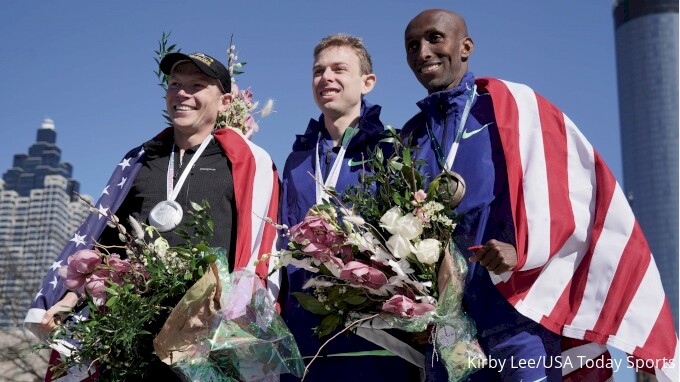
Young, an NCAA champion himself while also attending BYU, was just a few spots behind his former college teammate and training partner, finishing seventh in 2:08:00, which was good enough for a U.S. No. 7 standing all-time among American men.
Both of Ed Eyestone's former studs left the 'Windy City' with lifetime bests, and most importantly, unlocked two American spots for Paris 2024.
Following superb performances in Chicago just months ago, the Provo-based training partners would love nothing more than to claim the spots they earned on Saturday and officially punch their ticket to the Olympics.
However, they are both well-aware that nothing is earned in the sport, especially when the marathon is the distance of choice. Both are looking more than prepared, just check out the workout video:
The Veterans
While some of the field is preparing for their first-ever U.S. Olympic Trials, there are more than a few experienced marathoners that have been here before and are accustomed to the pressure.
One of those men is none-other than Galen Rupp, the two-time Olympic medalist and current/former American record holder.
Rupp has run his fair share of marathons, with the 2024 Trials marking his 15th attempt on the brutal race.
Not only is he a veteran at the distance, but he's also qualified for two Olympic marathons -- Rio 2016 and Tokyo 2020 -- and competed at the 2022 World Athletics Championship.
After battling a nagging back injury, Rupp returned to the marathon in October, was one of four Americans under 2:09 and ran 2:08:48 in his return.
Rupp will see some familiar faces in Orlando, as fellow marathon veterans Sam Chelanga, Scott Fauble and CJ Albertson are all jockeying for a spot as well.
The 38-year-old Chelanga is coming off a 2:08:50 from the 2023 Chicago Marathon, which shaved over six minutes off of his previous best along the way.
Fauble's most recent marathon unfortunately ended with a 'DNF', but a seventh-place finish at Boston last year paired with a 2:08:52 personal best from 2020 says he's in the mix as well.
For Albertson, this will be his fourth marathon since April. After finishing 12th in Boston, he ran and won both the California International Marathon (CIM) and the Baja California California on back-to-back weekends in December, running 2:11:09 and 2:11:08, respectively.
Any of these four men could see themselves in the final three come Saturday, but despite none of them having the Olympic Standard, they could still snag one of two guaranteed spots thanks to their sub-2:11:30 performances during the qualifying window. And a third auto-spot could get unlocked if an athlete runs 2:08.10 or faster on the day.
A few of the many notable names to keep an eye out include Elkanah Kibet, Zach Panning, Leonard Korir, and Futsum Zienasellassie.
The gun goes off for the men at 10:10 a.m. EST on Saturday, with the women following close behind at 10:20 a.m. EST.
You can tune in live on Peacock, with coverage starting at 10:00 a.m. EST, and NBC will begin broadcasting at noon.
by Maxx Bradley
Login to leave a comment
2028 US Olympic Trials Marathon
Most countries around the world use a selection committee to choose their Olympic Team Members, but not the USA. Prior to 1968, a series of races were used to select the USA Olympic Marathon team, but beginning in 1968 the format was changed to a single race on a single day with the top three finishers selected to be part...
more...Paul Chelimo is set to make marathon debut at Olympic Trials
Paul Chelimo, an Olympic 5000m silver and bronze medalist, will make his marathon debut at the U.S. Olympic Trials on Feb. 3 in Orlando.
“Ever since I was a kid, I dreamed of running a marathon… The day has come- this is it!” was posted on his social media Friday.
Chelimo, 33, qualified for the marathon trials by running a 1:02:22 half marathon last April 2, safely quicker than the 1:03:00 minimum to get into the field.
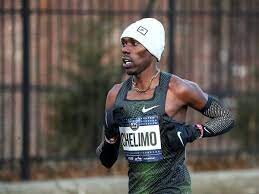
He didn’t publicly commit to racing the marathon trials until now. He could still contest the track trials in June.
“Let’s start by Orlando... then we will see!” Chelimo’s agent wrote in an email when asked about track trials.
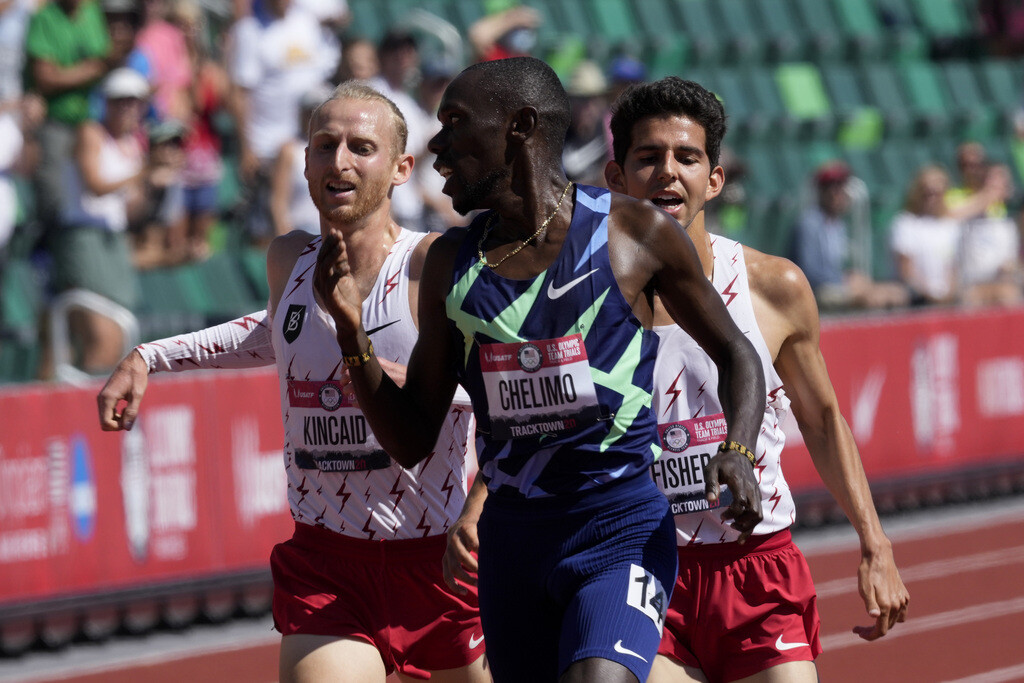
At marathon trials, the top three finishers on Feb. 3 are likely to make up the team for Paris. Since Chelimo has never raced a marathon, he also must run 2:11:30 or faster to hit a minimum qualifying time for Olympic eligibility.
Chelimo made five of the last six Olympic or world outdoor championships teams on the track in the 5000m. He won Olympic silver in 2016 and bronze in 2021, the latter being the lone U.S. men’s distance medal at the Tokyo Games.
Now, he joins a recent list of American global track medalists to move up to the marathon after Kara Goucher (2007 World 10,000m silver), Shalane Flanagan (2008 Olympic 10,000m silver), Galen Rupp (2012 Olympic 10,000m silver) and Bernard Lagat (world 5000m medals in 2007, 2009 and 2011).
Jenny Simpson, a world champion and Olympic bronze medalist at 1500m, also plans to make her marathon debut at the Feb. 3 trials.
Rupp made the 2016 Olympic marathon team in his debut at the distance at those trials. Molly Seidel did the same for the Tokyo Games. Each won a bronze medal in their first Olympic marathon.
Rupp, eyeing a fifth Olympics, headlines the men’s trials field along with Conner Mantz, the fastest American marathoner in 2022 and 2023 going for his first Games.
by Olympic Talk
Login to leave a comment
2028 US Olympic Trials Marathon
Most countries around the world use a selection committee to choose their Olympic Team Members, but not the USA. Prior to 1968, a series of races were used to select the USA Olympic Marathon team, but beginning in 1968 the format was changed to a single race on a single day with the top three finishers selected to be part...
more...Lindsay Flanagan And Her Younger Sister Kaylee Are Both Racing The Marathon Trials
In the past 20 months, veteran marathoner Lindsay Flanagan has cut her personal best by 2 minutes, twice. She won the 2022 Gold Coast Marathon in Australia in a course record of 2:24:43. In August, her 2:27:47 run placed her ninth overall, and first American, at the World Championships marathon in Budapest.
But one of her proudest moments came in the wee hours of December 3. Huddled over her phone in Adelaide, Australia—where she’d traveled for a few months to prepare for the upcoming Olympic Marathon Trials—Flanagan repeatedly refreshed the results of the California International Marathon.
Not long after 4 a.m. Lindsay’s time, her younger sister, Kaylee, crossed the finish line in 2:35:24—a nearly five-minute PR and her first Trials qualifying time. “I did not sleep at all that night,” Lindsay said. As both Kaylee’s sibling and her coach, “I was so invested.”
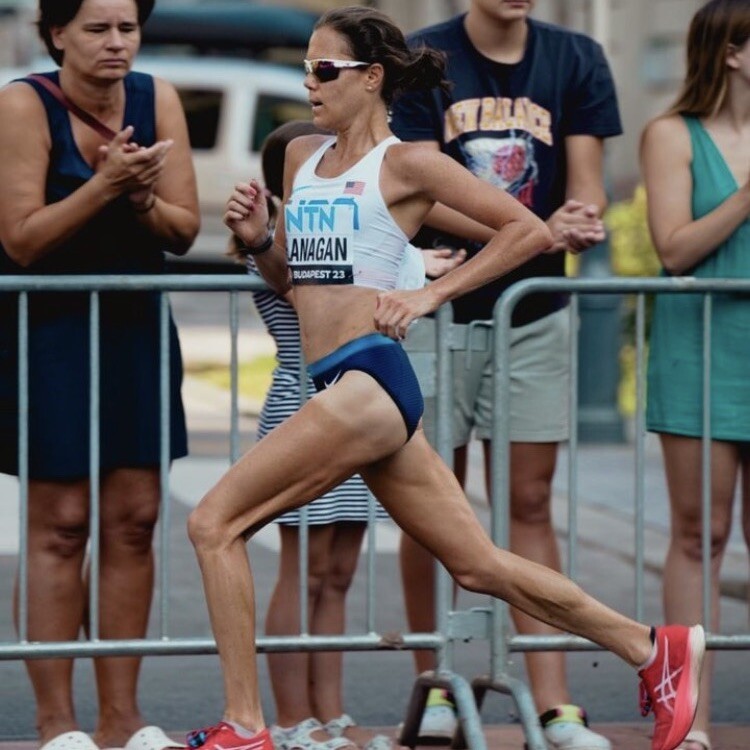
After promising high school running careers in Illinois, both Flanagans (no relation to Shalane) ran at the University of Washington, overlapping for a year. Now, they live across the street from each other in Boulder, Colorado, where they typically share miles at least once if not twice daily. Kaylee cheered Lindsay on in Budapest; afterward, they vacationed in Croatia.
They’ve spent the past few months, uncharacteristically, half a world apart, though Kaylee frequently pops by Lindsay’s house to water plants and make sure the pipes don’t freeze. But they’re reuniting in Florida, lining up together at the Trials.
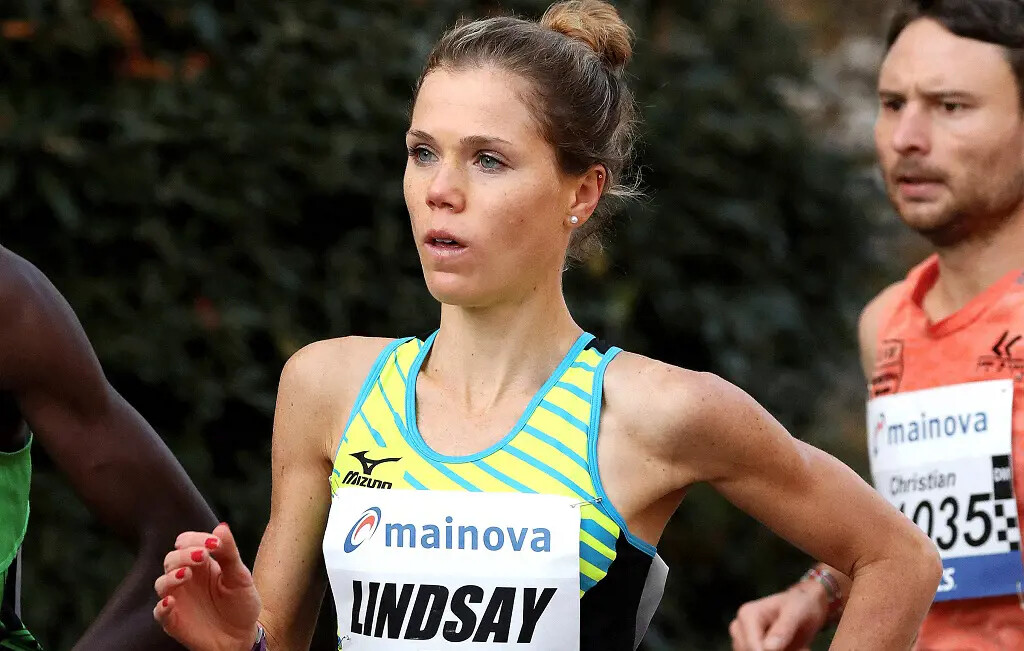
The Flanagans aren’t the only siblings competing in Orlando on February 3; the field also includes brother and sister Kaylee and Austin Bogina and twins Isabel and Monica Hebner. But they’re unique in also being athlete and coach—Lindsay has guided Kaylee’s training for about two years.
And in her third Trials, Lindsay stands out as a top, if under-the-radar, pick to make the U.S. Team.
The Asics-sponsored runner, 33, does most of her workouts alone. Her coach is remote, and she has no training group or partner capturing evidence for Instagram. Yet out of the limelight, Lindsay has spent nearly a decade preparing for a moment just like this one. “Every workout, every season, every race cycle has been meticulously chosen,” Kaylee, 28, said of her sister. “Trust me, she will be one to watch out for in Orlando.”
A steady ascent
As close as they are, the two sisters forged different paths from college to the Trials. Lindsay made her marathon debut the January after graduating. At the 2015 Houston Marathon, she ran 2:33:12, good for ninth place and a slot in the 2016 Trials. On a hot day in Los Angeles the following February, she paused to vomit around the 21-mile mark, then finished 14th in 2:39:42.
Through 20-some marathons since—so many she’s lost count—she’s gradually, if quietly, established herself. Her next breakthrough came at the 2016 Frankfurt Marathon, where she finished fourth in 2:29:28. She notched top-10 finishes in Boston and Chicago in 2019, and headed into the 2020 Trials ranked 12th. That’s exactly where she finished, running 2:32:05.
Post-pandemic, she was coaching herself but seeking mentorship. Her agent connected her with Benita Willis, a four-time Olympian for Australia and gold medalist at the 2004 World Cross Country Championships. After an hour-long conversation, Lindsay realized she wanted Willis to fully take the reins of her training.
The pair became fast friends, and under Willis’s guidance, Lindsay is now even faster. She first lowered her personal best to 2:26:54 in April 2022 at the Paris Marathon. Next, Willis suggested Lindsay make her first Australian trip to run Gold Coast in July.
The race would give the pair the chance to meet in person for the first time, and with her victory, Lindsay had an opportunity that her coach, a 2:22:36 marathoner, had missed. “I ran big races, but I never won a marathon or broke a course record,” Willis said. “I wanted Lindsay to have that sort of experience well before the Olympic Trials.”
by Cindy Kuzma
Login to leave a comment
2028 US Olympic Trials Marathon
Most countries around the world use a selection committee to choose their Olympic Team Members, but not the USA. Prior to 1968, a series of races were used to select the USA Olympic Marathon team, but beginning in 1968 the format was changed to a single race on a single day with the top three finishers selected to be part...
more...For Betsy Saina, the U.S. Olympic Trials Marathon Presents a Chance to Represent Her Son
For much of last year, Betsy Saina had a plan. She would race the Chicago Marathon in October, eager to run alongside Emma Bates (who placed fifth at last year’s Boston Marathon in a new personal best of 2:22:10) in pursuit of breaking Emily Sisson’s American record of 2:18:29, set the previous year at that same race.
Saina, 35, a naturalized U.S. citizen who represented Kenya in the 2016 Olympics in Rio de Janeiro—she placed fifth in the 10,000 meters 30:07.78—had reason to be confident. Last spring, she set a new personal best of 2:21:40 with her fifth-place finish at the Tokyo Marathon, which wound up being the fastest marathon by an American woman in 2023 and made her the eighth-fastest U.S. female marathoner of all-time, solidifying her position as a top U.S. Olympic marathon team contender.
The Chicago Marathon had assured Saina’s agent, Tom Broadbent, that she was in for the race. But when the elite field was announced in August, Saina learned she had not been accepted, which not only threw a wrench in her fall training plans, but made for a lot of stress as she was planning her U.S. Olympic Marathon Team Trials buildup.
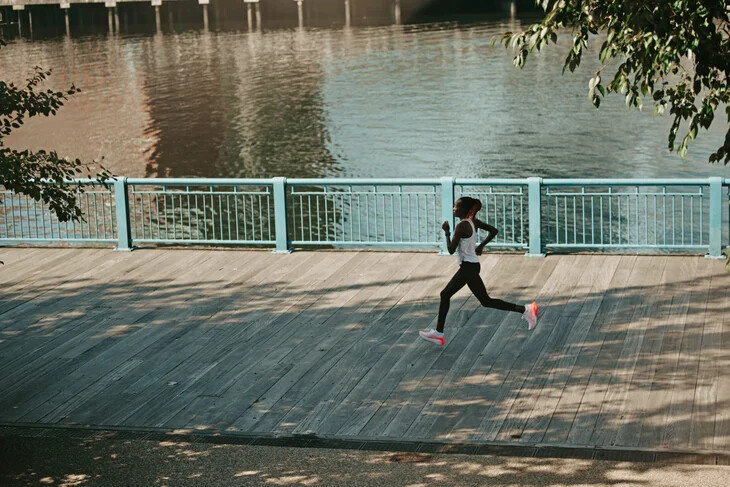
“I was shocked and spent three days looking at myself and trying to find any mistakes I made to not make the field, especially after running 2:21 in Tokyo,” Saina says. “I had never been rejected from a race before, and never got a response or an explanation as to why I didn’t make it. Being denied to run in Chicago honestly was one of the most disappointing things I’ve experienced in my career.”
Saina looked into entering the Berlin Marathon the following month, but had no such luck getting in with it being so late in the game. She was ultimately accepted into the Sydney Marathon (which shares its sponsor, ASICS, with Saina) on September 16. Unlike Chicago—with its fast, flat course that ended up having ideal racing conditions with temperatures in the 40s—Sydney has a hilly course and race-day weather was on the hotter side, with a starting temperature of 68 degrees.
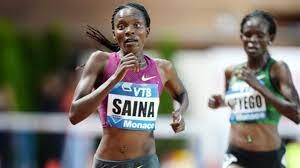
Despite the conditions, Saina proved herself once again, winning the race in 2:26:47. This sealed her confidence as she began to look ahead to the Olympic Trials in Orlando on February 3. If she’s one of the top three finishers in the women’s race in Florida, she’ll earn a spot on the U.S. team that will compete in the marathon at the Paris Olympics on August 11.
“Challenges make people strong, and running a good marathon on a harder course made me come back feeling motivated,” she says. “[Even though it wasn’t the faster time I originally wanted], it didn’t stop me from being a better version of myself.”
Transcendent Transplant
Despite her impressive performances in 2023, Saina has remained largely under the radar in terms of media coverage and fan predictions leading up to the Trials in Orlando, similarly to what fellow Kenyan-born marathoners Aliphine Tuliamuk and Sally Kipyego (both of whom made the last Olympic marathon team) experienced in 2020. The lack of attention relative to her competitors hasn’t fazed Saina, however.
“I know how to deal with pressure, having been in the sport since 2013, so as long as my training is going well, I don’t pay too much attention to what people say,” Saina says. “I’m just more excited to see many of the U.S. women [who are also] my friends, like Emily Sisson, Sara Hall, and Keira D’Amato, and to be racing so many amazing U.S. athletes for the first time.”
Saina’s result in Tokyo was only about a minute faster than her debut at the distance at the 2018 Paris Marathon, which she won in 2:22:56 (after dropping out of the 2017 Tokyo and New York City Marathons). It was also a confidence boost for Saina because it was also her first marathon since giving birth to her son, Kalya, now two, in December 2021, after previously running 2:22:43 and 2:31:51 at the 2019 Toronto Waterfront and Honolulu Marathons, respectively.
Saina—who originally came to the U.S. to attend Iowa State University where she trained alongside Tuliamuk and was a three-time individual NCAA champion and 11-time NCAA All-American—has remained in her hometown of Iten, Kenya, for the majority of the time since having her son, as her husband, Meshack Korir, is a doctor completing his postgraduate education there.
Although Saina became a U.S. citizen in late 2020 and has a home base in Colorado Springs, she made the decision to return to Kenya to have additional family support and childcare as she worked to come back from pregnancy and childbirth to prepare for the Olympic Trials, which she’ll return for just a few days before the race. Saina also keeps busy managing a couple of guesthouses, which she regularly rents out to visiting athletes and tourists. She also works with Cross World Africa, a nonprofit that sponsors underprivileged children in pursuing secondary and higher education.
“Before I came from Kenya, my family was struggling and we had to fundraise for my flight ticket to come to the U.S. Being here has changed my family in a different way—I have two sisters who are now nurses in the U.S., and my parents can now more easily fly to visit us, and while it is not where I began running, the U.S. where I began competing at such a high level,” she says. “My son also gives me so much motivation and is my inspiration. When I see him, I see beauty in myself and see myself getting better when I’m running. So I am excited both to compete and represent my son, and to hopefully wear the U.S. uniform because it has so much meaning for me.”
Back in Iten, Saina has been training in a group with personal pacemakers alongside 2019 New York City Marathon champion Joyciline Jepkosgei, which she describes as game-changing for her progress in the marathon. Both Saina and Jepkosgei, who is also the former world-record holder in the half marathon and Saina’s best friend from high school, are coached by Jepkosgei’s husband, Nicholas Koech.
“Sometimes you will train with people who don’t want to help someone else get better, but [Jepkosgei], who has run 1:04 [in the half marathon] and 2:17 [in the marathon] is unique in that she has sacrificed a lot, which I don’t think a lot of women will ever do for each other, and I don’t think I would either,” Saina says. “But she has been pushing me a lot since the first day I joined her, and I think that’s the reason I came back and I’ve had better races. I have someone to chase and it’s like competition in training, but in a good way.”
American Original
Saina returned to the U.S. twice last year, to race the USATF 25K Championships in Grand Rapids, Michigan, (where she took the win in 1:24:32 for her first U.S. title, narrowly beating D’Amato) and to be inducted into Iowa State’s Athletics Hall of Fame in September. Saina had planned to do some shorter U.S. races, including the Bolder Boulder 10K in May and the NYRR Mini 10K in June, following her national championship title in the 25K. However, she ultimately decided she couldn’t bear to be away from her son any longer.
“As a mom, when you’re away, you are so worried because you’re like, ‘How is he doing right now? How can I handle the pressure, being away from him?’” Saina says. “This year, it’s really different for me because the only race I want to travel to without Kalya is the Olympic Trials. He is growing now and getting better, so I want to travel with him afterward to compete in the USATF circuit. That’s the biggest goal for 2024, to travel with my son.”
Later this year, Saina hopes to also run the April 7 Cherry Blossom 10-Miler in Washington, D.C., the Mini 10K on June 8 in New York City, and a fast spring half marathon to pursue the current American record (which was broken yet again by Weini Kelati on January 14 in Houston), before running another marathon in the fall. In the meantime, she noted that she is especially eager to compete in one of the deepest fields ever assembled for the Trials.
Although Bates withdrew from the Trials, Saina figures to be one of the favorites in Orlando along with Sisson, Hall, Tuliamuk, D’Amato, and Seidel. However, Lindsay Flanagan (ninth in last summer’s world championships), Sara Vaughn, Susanna Sullivan, Gabriella Rooker, Dakotah Lindwurm, and Nell Rojas are all sub-2:25 marathoners, and thus top contenders, too.
“The U.S. is no longer small and non-competitive. Look at Molly Seidel. She got bronze at the Tokyo Olympics, and I remember when Amy [Cragg] was a bronze medalist at the 2017 World Championships. If you put that in perspective, it has changed even more right now compared to that time,” she says. “The competition [to make the U.S. team] is no longer as easy as the way some people [thought], and I’m super excited to be competing with a lot of solid women. There is no difference between the U.S. and other countries right now—it’s not just to go compete at the Olympics; they’re going to compete for the medals, just like other countries.”
by Emilia Benton
Login to leave a comment
2028 US Olympic Trials Marathon
Most countries around the world use a selection committee to choose their Olympic Team Members, but not the USA. Prior to 1968, a series of races were used to select the USA Olympic Marathon team, but beginning in 1968 the format was changed to a single race on a single day with the top three finishers selected to be part...
more...Emma Bates Withdraws from Olympic Marathon Trials 2024
Emma Bates was widely considered a top contender to make the U.S. Olympic team in the marathon this year. But over the weekend, she announced she won’t be lining up at the Olympic Marathon Trials in Orlando, Florida, on February 3.
Bates, 31, tore her plantar fascia during October’s Chicago Marathon. On December 12, she posted that she had been healing well and was back to running on the ground for an hour at a time when she developed another injury, posterior tibial tendonitis.
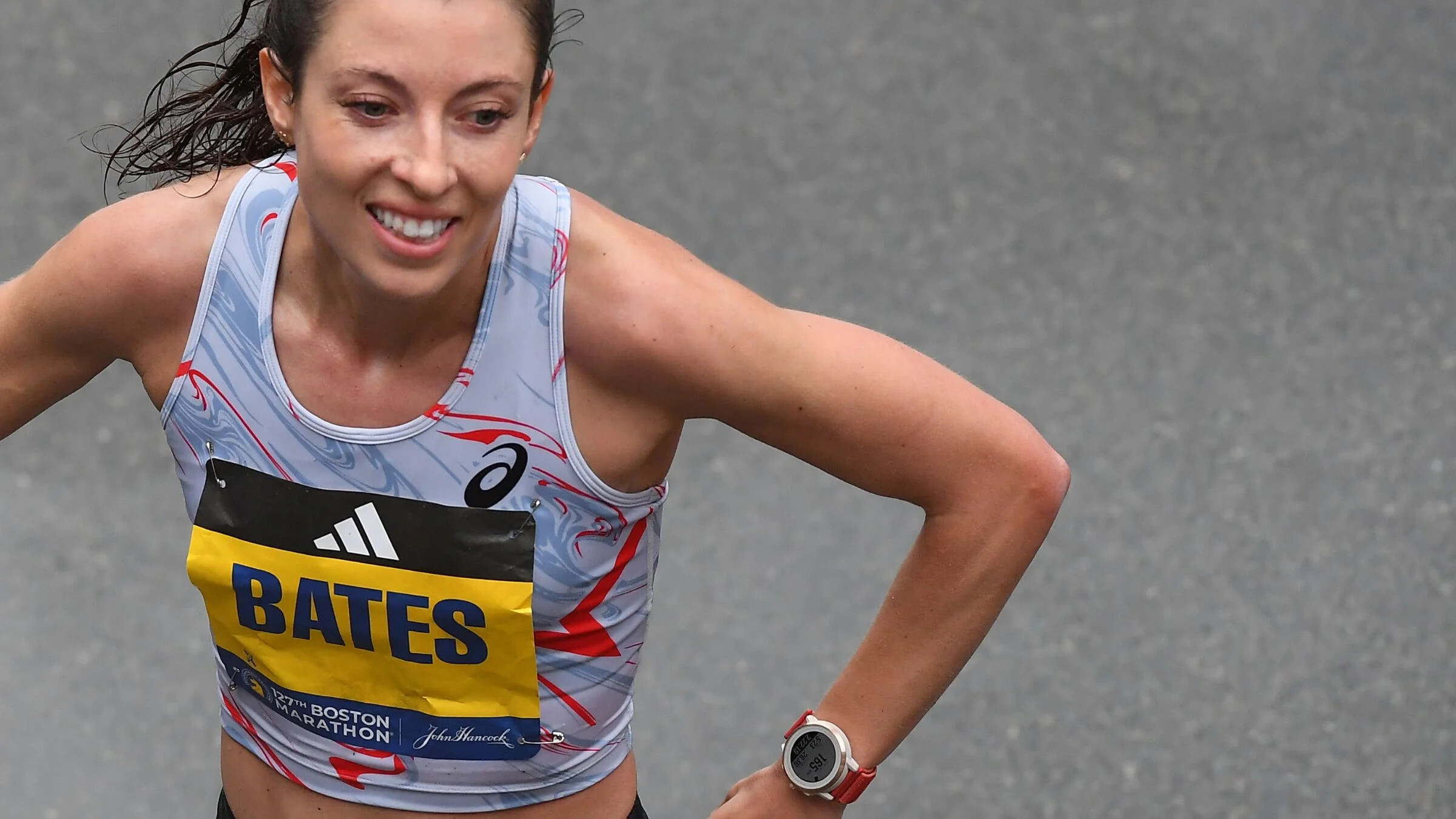
And in a tearful Instagram video posted Saturday night, Bates said that while she had returned to workouts with her Boulder-based training group, Team Boss, “we just know that there’s not enough time to be where I need to be.”
Bates’ personal best of 2:22:10 at the 2023 Boston Marathon, where she placed fifth, was the third-fastest time by an American last year.
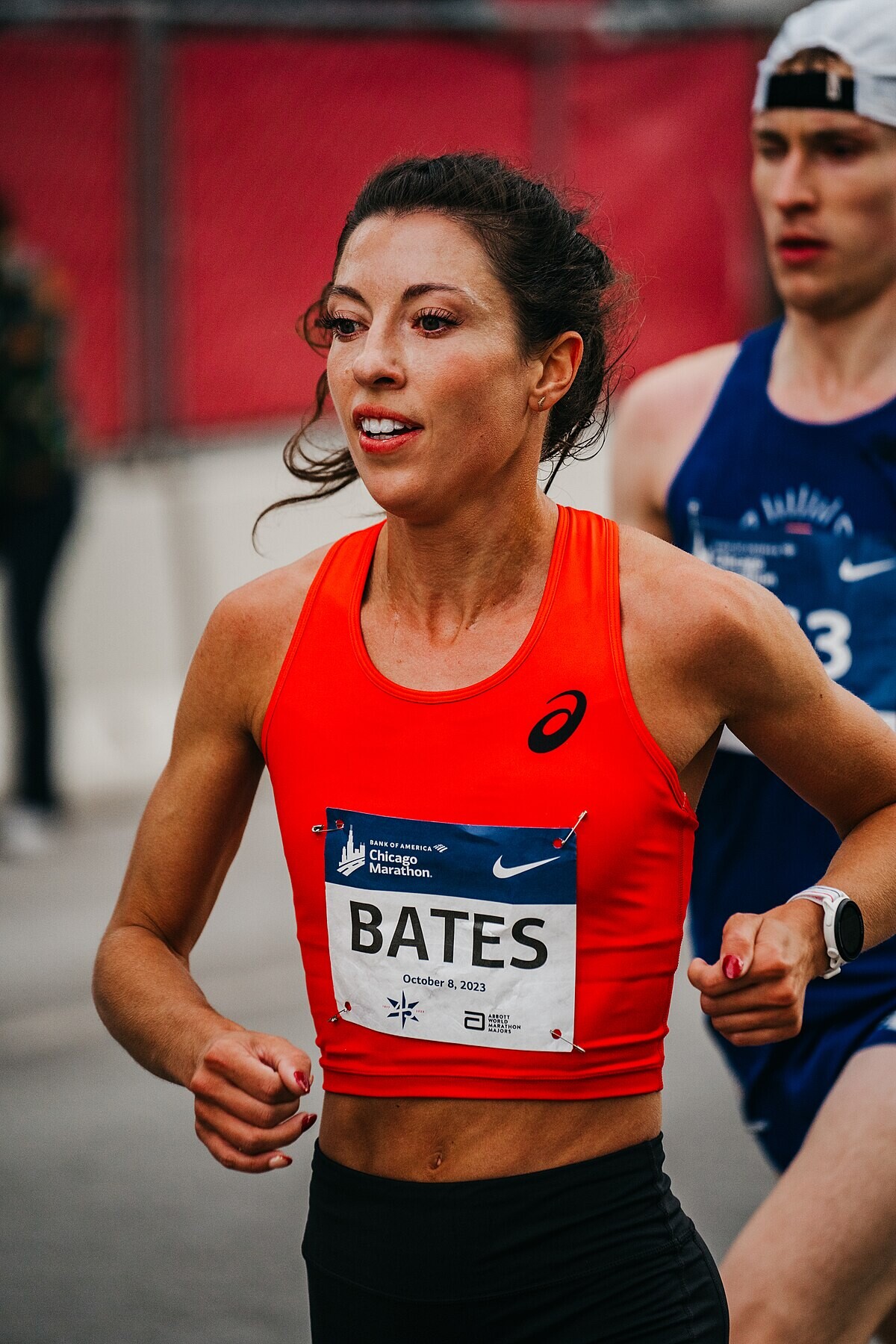
She headed into Chicago in the fall with high hopes—saying she was in shape to run 2:18 to 2:19 pace—but stepped in a pothole around mile 14. She finished 13th in 2:25:04 and left the finish line in a wheelchair. A week after the race, an MRI revealed a torn plantar fascia.
She put on a boot and began cross-training on the bike, knowing the buildup to the Trials wouldn’t be easy. With the new setback last month, she and coach Joe Bosshard decided it simply wouldn’t be possible.
Bates, a 2014 NCAA champion in the 10,000 meters at Boise State University, won her marathon debut and the USATF Marathon Championships with a 2:28:18 at the 2018 California International Marathon and has steadily improved since. In her second marathon, the 2019 Chicago Marathon, she finished fourth in 2:25:27.
Those performances made her a contender for the 2020 Olympic Marathon Trials, where she ran 2:29:35 to place seventh. But her next big breakthrough was around the corner. On a hot, humid day at the 2021 Chicago Marathon, she ran a personal-best 2:24:20 to place second.
And in 2022, she was part of a trio of Americans who produced top-10 finishes at the World Athletics Championships in Eugene, Oregon—she was seventh in 2:23:18, between Sara Hall (fifth in 2:22:10) and Keira D’Amato (eighth in 2:23:34).
Bates was clearly disappointed not to line up with the likes of Hall and D’Amato again in Orlando; “this one hurts a lot,” she wrote.
“It’s another four years to wait for another Olympic team,” she said in the accompanying video. “I’ll be OK. I’ll be OK.”
by Cindy Kuzma
Login to leave a comment
2028 US Olympic Trials Marathon
Most countries around the world use a selection committee to choose their Olympic Team Members, but not the USA. Prior to 1968, a series of races were used to select the USA Olympic Marathon team, but beginning in 1968 the format was changed to a single race on a single day with the top three finishers selected to be part...
more...U.S. Olympic Trials marathon start time moved over heat concerns
The start time of the 2024 U.S. Olympic Trials marathon in Orlando has been moved to 10:00 a.m. local time from its original noon schedule over runners' heat concerns, the organizers said on Wednesday.
Some of the United States' top marathon runners met with USA Track and Field (USATF) CEO Max Siegel in October in hopes of changing the noon start time over concerns about the heat in host city.
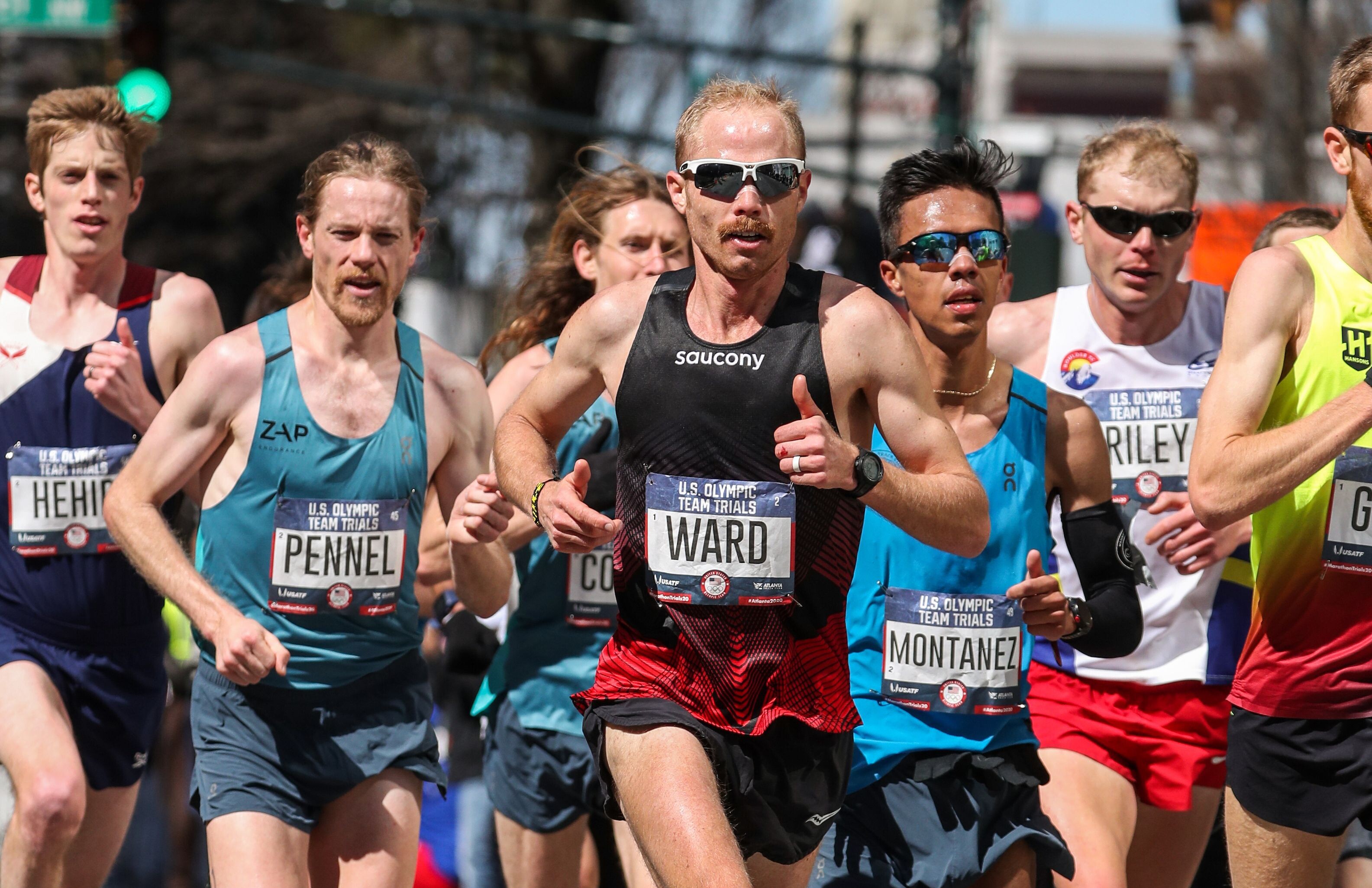
"In collaboration and consultation with feedback from the athletes regarding concerns around weather conditions, it has been agreed that the start time for the event will be moved to 10:00 a.m. ET," the statement read.
"The earlier start time will help provide an improved experience for athletes, spectators, and event staff, ensuring the comfort and safety of all involved."
Nearly 100 runners signed a Sept. 15 letter to USATF that outlined concerns for the increased risk to athletes' health prompted by a noon start time.
The race will take place on Feb. 3, 2024 and will welcome elite male and female long-distance runners to compete for the chance to represent Team USA at the 2024 Summer Olympics in Paris.
by Reuters
Login to leave a comment
2028 US Olympic Trials Marathon
Most countries around the world use a selection committee to choose their Olympic Team Members, but not the USA. Prior to 1968, a series of races were used to select the USA Olympic Marathon team, but beginning in 1968 the format was changed to a single race on a single day with the top three finishers selected to be part...
more...Jenny Simpson, U.S. mile legend, to race Olympic marathon trials
Jenny Simpson, the most decorated U.S. female miler in history, is moving up in distance and plans to race the 2024 Olympic Marathon Trials on Feb. 3 in Orlando, near where she grew up.
“It’s an easy decision for me to run the marathon Trials in Orlando,” she wrote in an email after making the announcement in an Instagram live video with the Orlando Track Shack. “For a long time I’ve flirted with the idea of going the full distance and with Orlando hosting the Trials, I just can’t miss the chance to go back home.”
Simpson, 36, announced last October that she was shifting focus from the track, where she was a world champion and Olympic bronze medalist in the 1500m, to longer races on the roads.
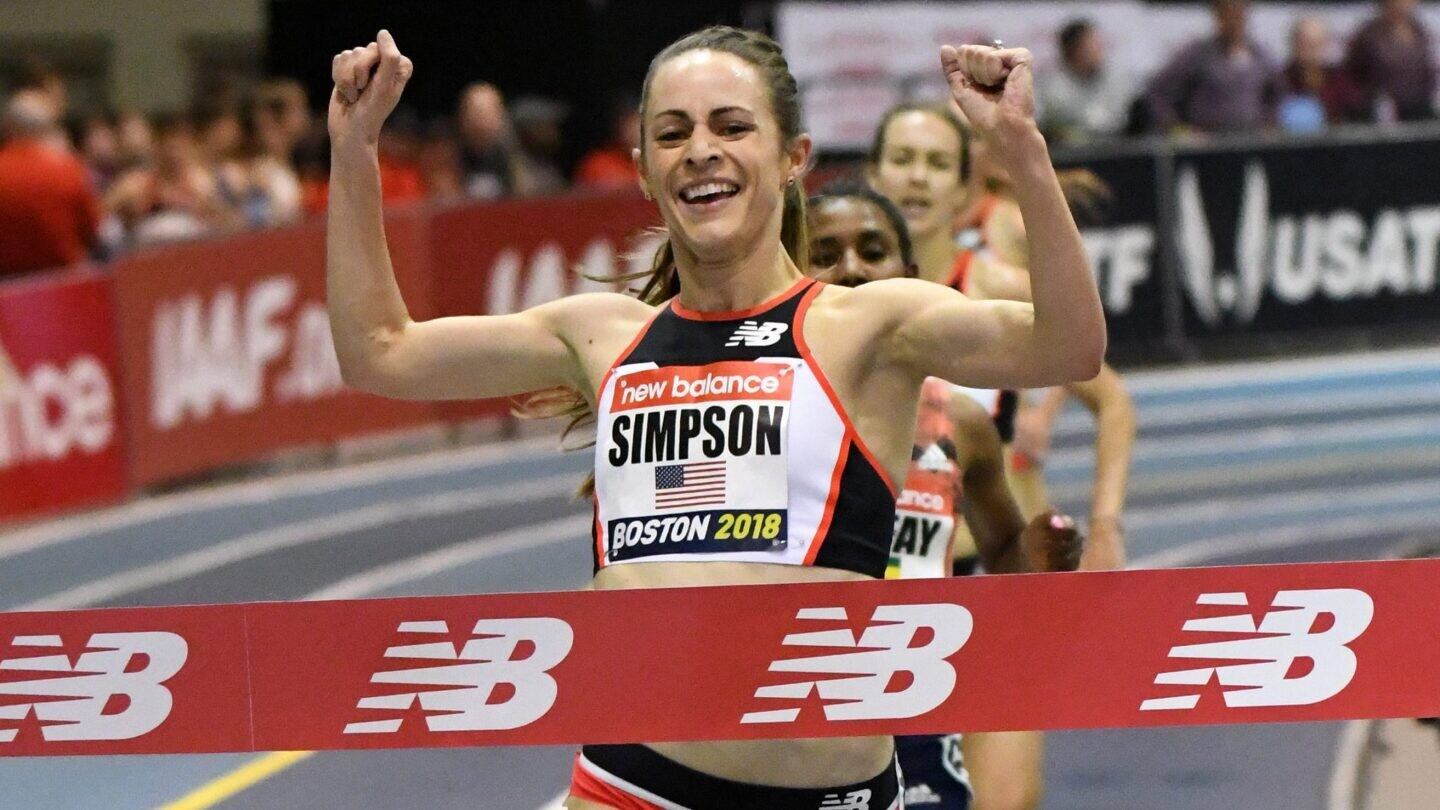
Typically for distance runners that accomplished, it means an eventual move all the way up to the marathon. Simpson messaged then that her chances of racing over 26.2 miles were “51% :).”
A month later, Orlando was announced as the host of the 2024 Olympic Marathon Trials. Simpson’s family moved to Florida when she was in third grade, and she went to high school in Oviedo, which is 15 miles northeast of Orlando.
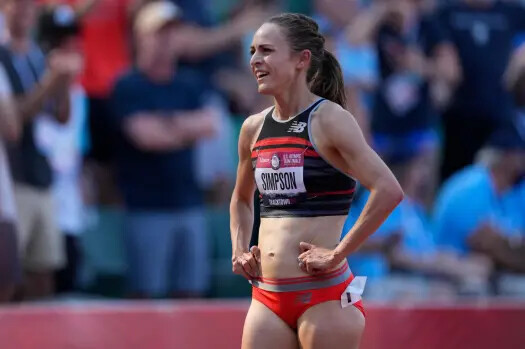
“It’ll be fun to literally come back to the beginnings of my running and take in the scenery of the place where I ran my first few races,” Simpson said in Tuesday’s video.
Simpson’s last track race was at the Tokyo Olympic Trials, where she was 10th in the 1500m final. It was her first time not placing in the top three at a U.S. outdoor championships since 2006 and first time not being on an Olympic team since 2004.
In September 2021, Simpson ran the Cherry Blossom 10-mile road race in Washington, D.C., nearly three times as long as the farthest distance she had raced as a pro up to that point.
She then focused much of her time in 2022 helping her Colorado community heal and rebuild from a late December 2021 fire.
She ran 5km and 10-mile road races late in 2022, then on Jan. 15 of this year placed ninth in the Houston half marathon in 70 minutes, 35 seconds to beat the Olympic Trials qualifying time of 72 minutes. That was her most recent race, according to World Athletics.
Simpson attended the 2020 marathon trials to watch husband Jason run. Jason has not qualified for next year’s trials yet but is still hopeful.
One U.S. woman has made Olympic teams in both the 1500m and the marathon in her career -- Francie Larrieu-Smith, who made her first team in the 1500m at age 19 and her last in the marathon at 39, according to Olympedia.org.
Simpson hasn’t said whether she will race a marathon in the fall or if the trials will be her debut at the distance, “but the next six months will be all about getting ready to go the extra 25.2 miles,” she wrote.
The list of marathon trials qualifiers already includes nine of the 15 fastest American women in history. The top three finishers on Feb. 3 will likely make up the Olympic team.
“As I get older, I didn’t want to run out of really good years to give to something that was so intriguing to me for so long,” Simpson said of the marathon. “I’ve accomplished a lot already, and now I can do something that I want to do, not necessarily something that’s going to just objectively, absolutely pay off.”
by Nick Zaccardi
Login to leave a comment
2028 US Olympic Trials Marathon
Most countries around the world use a selection committee to choose their Olympic Team Members, but not the USA. Prior to 1968, a series of races were used to select the USA Olympic Marathon team, but beginning in 1968 the format was changed to a single race on a single day with the top three finishers selected to be part...
more...2024 U.S. Olympic Marathon Trials to start at 12 noon
USA Track and Field (USATF) caused a stir on social media on Tuesday after announcing in an email addressed to athletes that the 2024 Olympic Marathon Trials would begin at 12 noon, due to broadcasting rights. The marathon trials are scheduled to take place in Orlando, Fla., on Feb. 3, 2024.
The late start time has already caused worry for many coaches and athletes due to the potential for high temperatures. In February, the average temperatures in Orlando range from a low of 13 C to a high of 23 C, but in recent years, it has not been uncommon for temperatures to soar to 30 C–which would be detrimental to performance and potentially unsafe for elite marathoners.
According to Runners World, the email sent to athletes mentions that the Local Organizing Committee (LOC) in Orlando has extensive experience in planning and executing high-level events and has contingencies in place for any potential challenges, including weather-related ones.
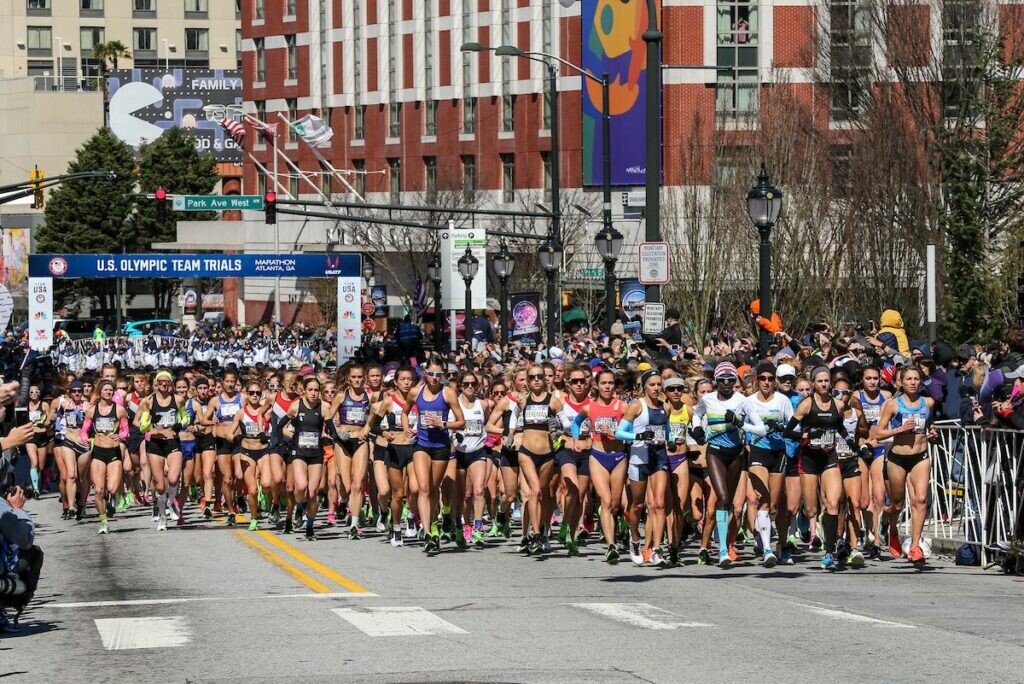
The decision to set the start time at noon is believed to be influenced by executives at NBC, the network broadcasting the event. The email highlights that the race will be televised live on NBC for three hours, providing coverage of the men’s and women’s runners and races.
The Paris Olympic marathon, which is also expected to be warm, is scheduled for Aug. 10–the middle of summer in the French capital. But both the men’s and women’s races are set to begin at 8 a.m. local time. This disparity in start times has added to the concerns raised by the late start for the U.S. Trials in Orlando.
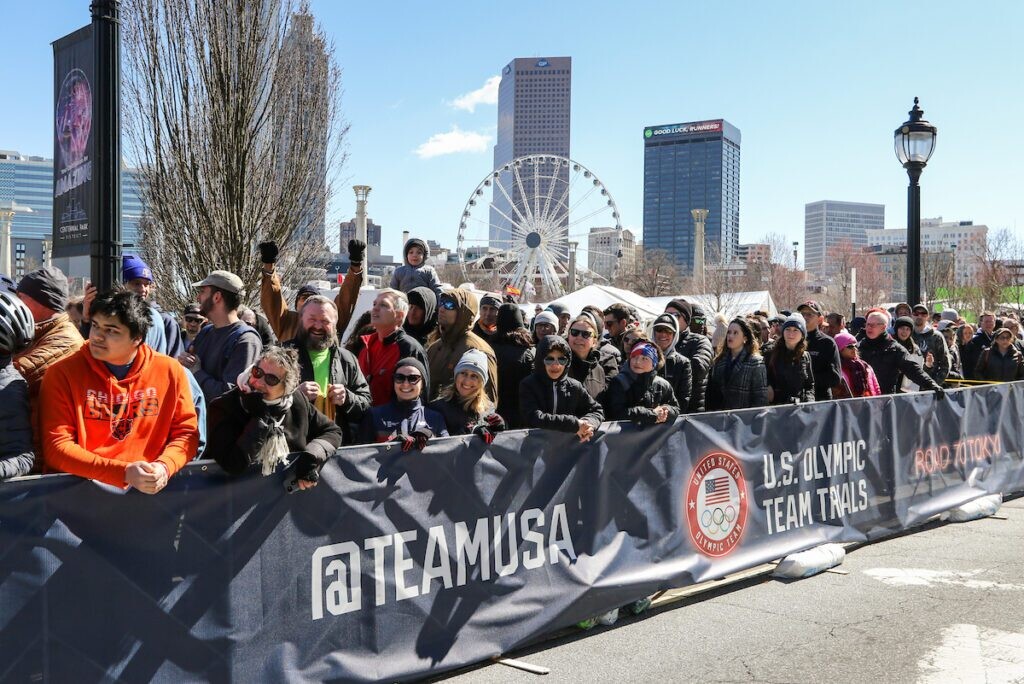
The U.S. Olympic Marathon Trials serves as the selection race for the men’s and women’s Olympic teams that will compete at the Summer Games in Paris. The top three finishers who also meet World Athletics’ qualifying standards will go on to represent Team USA at the Olympics.
Some athletes and coaches have expressed concern, while others seem to be looking forward to it. 2018 Boston Marathon champion Des Linden tweeted: “Warmer temps should slightly minimize the pace of super shoes and reward smarter racing. Count me in!”
U.S. ultrarunner Camille Herron said “We are seven months out from the Olympic Marathon Trials. No excuses to not be prepared for a potentially hot day in Florida.”
Renowned U.S. marathon coach Kevin Hanson, who currently has 13 athletes (eight women and five men) qualified for the U.S. Trials, stressed his disappointment that athletes’ health is not taken into consideration. “There is no amount of TV coverage that is worth the health of our athletes,” Hanson tweeted.
This isn’t the first time USATF has faced criticism for its handling of extreme heat during events. At the 2021 Olympic Track and Field Trials in Eugene, Ore., where temperatures were forecasted to reach highs of 40 C, several events were rescheduled for safety. However, the heptathlon was not, and athlete Taliyah Brooks collapsed on the track due to the heat and later filed a lawsuit against USATF.
In the 2016 Olympic Marathon Trials in Los Angeles, which began at 9 a.m., some athletes struggled on an unusually warm day, with temperatures reaching the mid-70s Fahrenheit. Shalane Flanagan, who placed third in 2:29:19, collapsed at the finish line, and the organizing committee and USATF later faced criticism for not providing adequate water on the course for the athletes.
by Marley Dickinson
Login to leave a comment
2028 US Olympic Trials Marathon
Most countries around the world use a selection committee to choose their Olympic Team Members, but not the USA. Prior to 1968, a series of races were used to select the USA Olympic Marathon team, but beginning in 1968 the format was changed to a single race on a single day with the top three finishers selected to be part...
more...Sara Hall is transitioning to 5K/10K training with some help from her kids
At 37, marathoner Sara Hall is still at the top of her game. Though the Olympic Marathon Trials in Atlanta did not go her way and she ultimately dropped out of the race, she ran her personal best of 2:22:16—the sixth-fastest time in American history—less than a year ago at the Berlin Marathon.
Hall is now using the quarantine period to transition into 5K and 10K training in preparation for the 2021 Olympic Trials on the track.
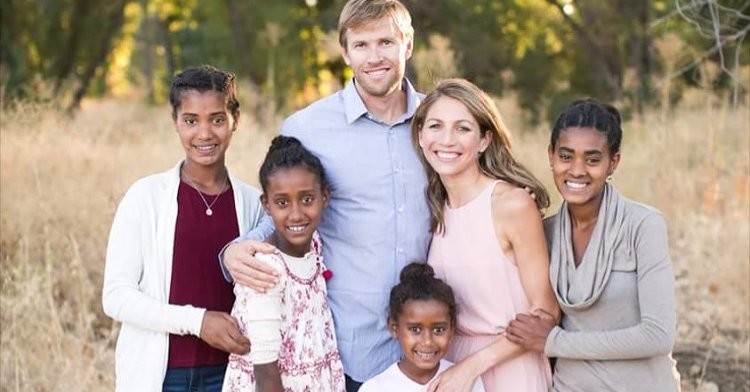
The shift to speed work comes with an added bonus: Hall can do workouts with her two high school age daughters, Hana and Mia, who are training to break five minutes in the mile. That’s about 10K pace for Sara.
“They will often hop in and out of my workout and it pushes them, which is fun to be able to be more actively involved in their training and goals,” she told PodiumRunner.
by Johanna Gretschel
Login to leave a comment
2028 US Olympic Trials Marathon
Most countries around the world use a selection committee to choose their Olympic Team Members, but not the USA. Prior to 1968, a series of races were used to select the USA Olympic Marathon team, but beginning in 1968 the format was changed to a single race on a single day with the top three finishers selected to be part...
more...Aliphine Tuliamuk still remembers the day she received her first pair of running shoes
Nearly twenty years ago, the future 2020 U.S. Olympic Marathon Trials champion was just another promising young runner in the Rift Valley province of her native Kenya. Only 11 years old, she was selected to compete in the state meet in the 10,000m after outracing older girls in the arduous event.
On their way to the competition, her coach—Geoffrey Ptormos, a distant relative of Tuliamuk’s—arranged for Tegla Loroupe to come meet the team. The local Kapenguria legend was training for the 2000 Olympic Games as the favourite for the marathon and the 5000m, and by then had captured two New York City Marathon titles, three World Championship half marathon titles, and was the world record holder in the marathon twice over, with her best effort of 2:20:43 standing until September 2001.
But Tuliamuk didn’t know any of that quite yet. Instead, it was Loroupe who was quite taken with the young runner’s abilities.
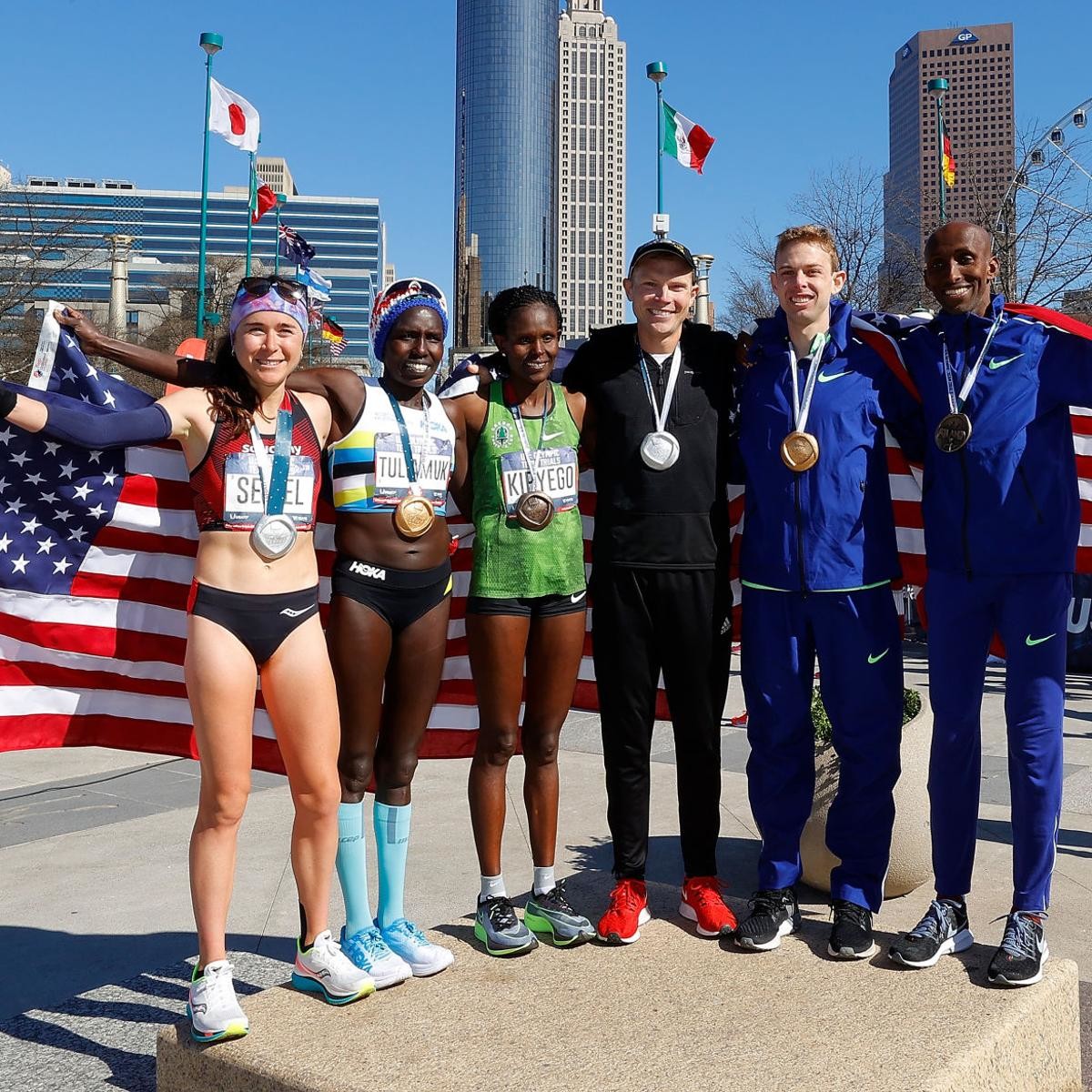
“The athletes I had beaten in the 10,000 were way older than me, so Tegla was very impressed by my performances,” Tuliamuk remembers. “She ended up giving me a pair of shoes and she became my hero instantly.”
Tuliamuk didn’t race in the brand-new flats right away— “no way, I wasn’t used to wearing shoes and racing, I thought they would hold me back” —but she treasured the gift, saving the new shoes for special occasions.
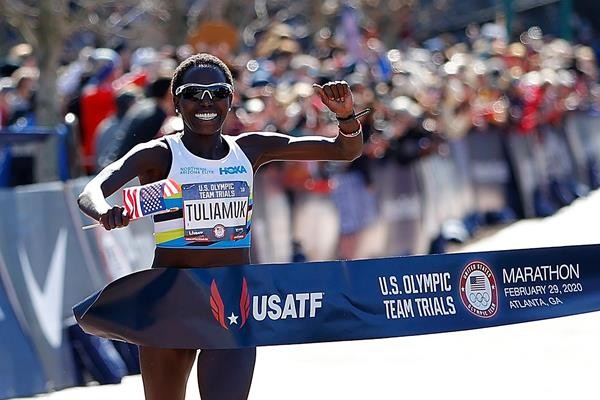
“It meant the world to me,” she says. “I was barefoot at the time, so to get this really beautiful, clean pair of shoes from her was awesome.”
Modest roots.- Tuliamuk shrugs off her humble upbringing as normal.
She and her 31 siblings, all born to the same father from four different mothers under the culturally accepted practice of polygamy, ran two miles, barefoot, to and from school everyday, as did her friends. Running is so ingrained in everyday life that those with natural abilities in the sport are easily spotted. But of Tuliamuk’s immediate community, she was the only one to pursue competitive running.
Ptormos noticed Tuliamuk’s burgeoning talent and invited her to come live with his family in a neighboring village after the state competition in 2000 so he could coach her. She lived with them on and off for eight years, until she finished high school.
Her best performance during that time came in 2005, when she placed ninth in the World Junior Cross Country Championships as a 15-year-old. The 6km race was held in Saint-Galmier, France, where the beds were the size of three beds back home and the travel van was outfitted with mini TVs. At the race after party, runners danced to music and chowed down on fancy French pastries.
The event opened Tuliamuk’s mind to the vast opportunities that running could afford her.
But as the idea of running professionally and competing in the Olympic Games lodged itself in her brain, Tuliamuk also wanted to succeed in the classroom. Athletics were not a big priority at her high school and by her last year, she had stopped running entirely.
by worl Athletics
Login to leave a comment
2028 US Olympic Trials Marathon
Most countries around the world use a selection committee to choose their Olympic Team Members, but not the USA. Prior to 1968, a series of races were used to select the USA Olympic Marathon team, but beginning in 1968 the format was changed to a single race on a single day with the top three finishers selected to be part...
more...Ultrarunner Jim Walmsley runs 2:15:05 marathon debut at U.S. Olympic Trials
Jim Walmsley, one of the world’s best ultrarunners, ran his marathon debut at the 2020 U.S. Olympic Trials. On Saturday, Walmsley finished in 22nd and crossed the line in 2:15:05.
A year ago, we looked at Walmsley’s training as the Houston Half-Marathon approached. At Houston he nailed a 1:04:00, exactly the time he needed (down to the second) to qualify for the marathon trials. Following his 2019 Houston race, he went on to win a 50-mile race in Hong Kong and take 43 seconds off the 50-mile world record before shattering his own course record at Western States.
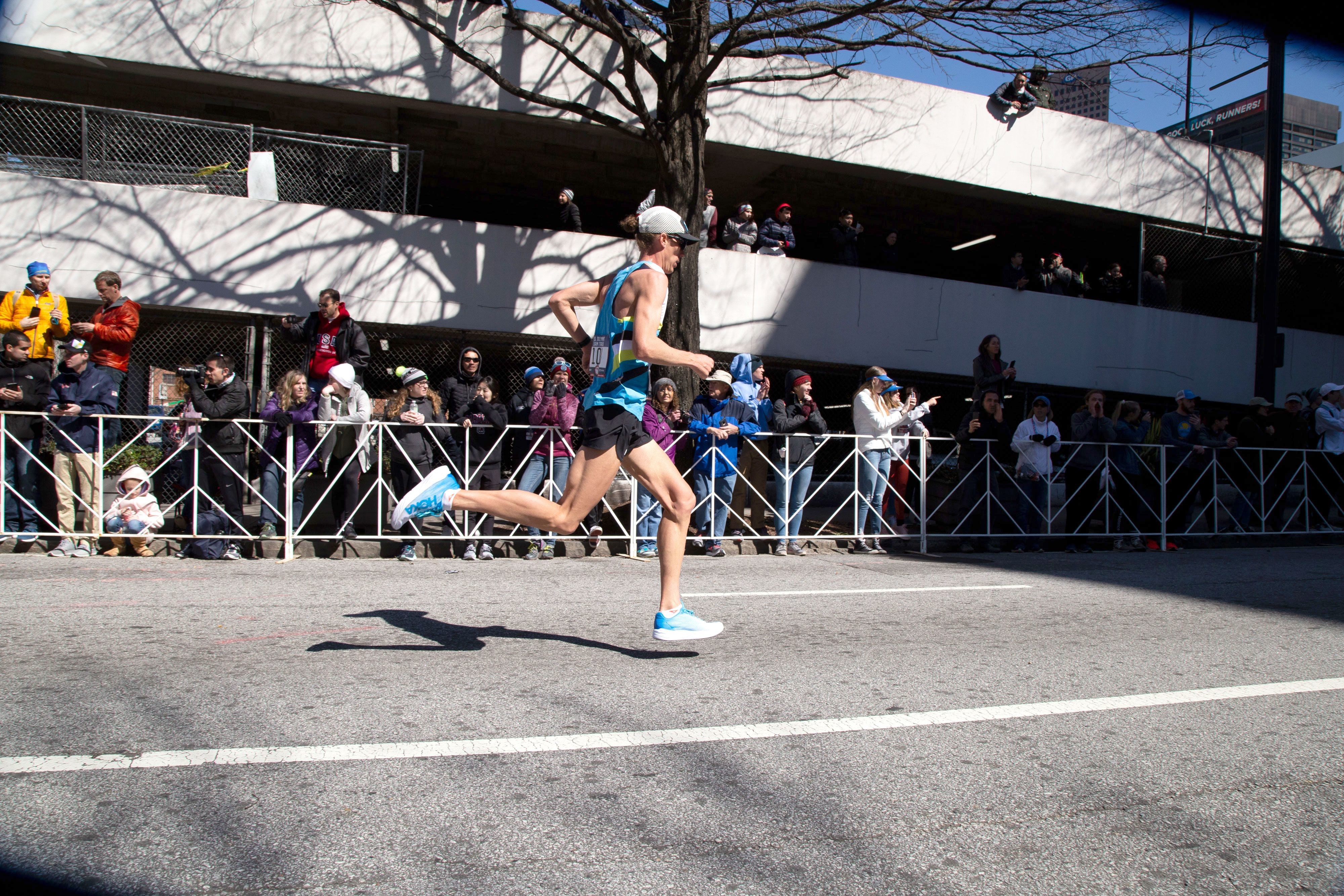
There’s no doubt Walmsley is a tough racer, but this was his first time racing a road marathon, and he didn’t quite have the chops to make the 2020 Olympic team. With that said, he ran an extremely impressive debut, on a windy day and on a hilly course.
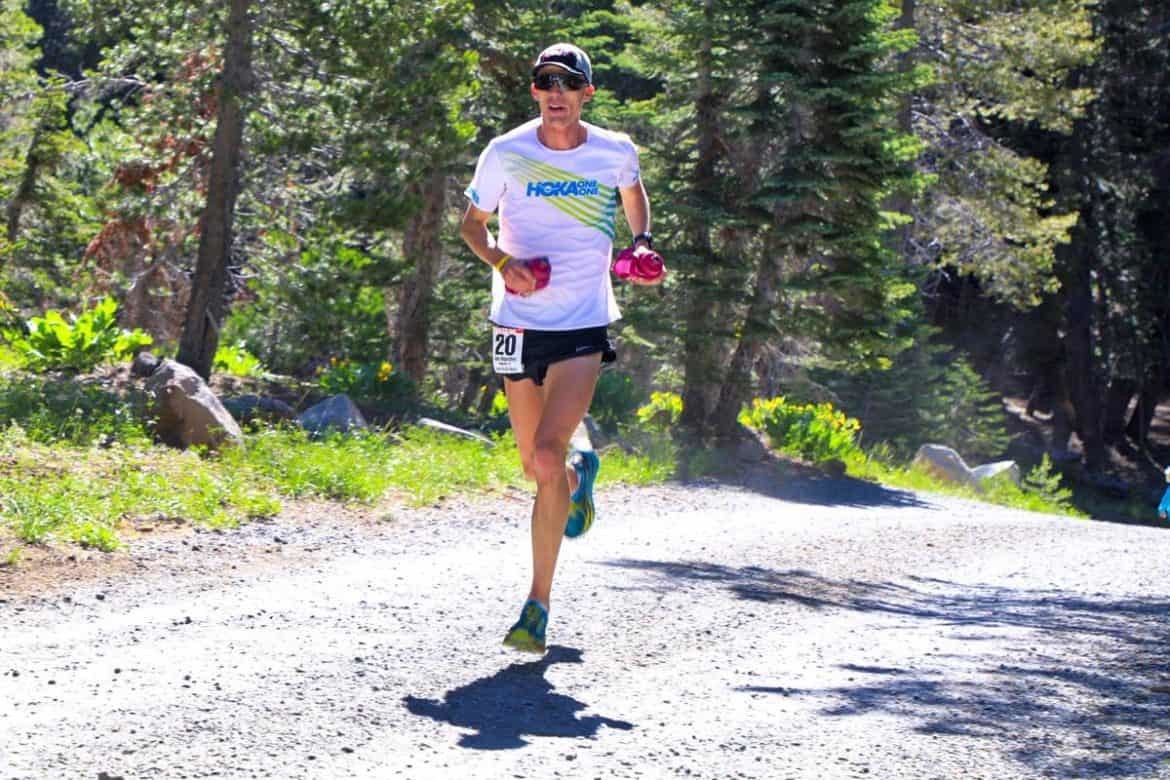
The runner sat in the chase group (which included Galen Rupp, the eventual winner) for the first half of the race. That group was on pace for a sub-2:10 marathon, am ambitious pace for most of the runners.
Walmsley would fade, but not too much, averaging 5:10 miles and closing in 5:17. He finished ahead of some very impressive names like Jared Ward and Connor McMillan.
On Saturday, Rupp has made his fourth Olympic team, winning the 2020 U.S. Olympic Marathon Trials in 2:09:20. Second place went to first-time Olympic qualifier Jake Riley, and third to five-time Olympic qualifier, masters runner Abdi Abdirahman. At 43, Abdirahman is also the oldest American ever to qualify for the Olympic marathon.
by Madeleine Kelly
Login to leave a comment
2028 US Olympic Trials Marathon
Most countries around the world use a selection committee to choose their Olympic Team Members, but not the USA. Prior to 1968, a series of races were used to select the USA Olympic Marathon team, but beginning in 1968 the format was changed to a single race on a single day with the top three finishers selected to be part...
more...Babies Don’t Wait for Running
At the back of the Trials pack, two pregnant women and one mom who gave birth four weeks ago are thankful they’re healthy enough to run.
Four weeks after giving birth, Stefanie Slekis finished the Olympic Marathon Trials in 3:14:00. Lauren Philbrook, who is 33 weeks pregnant, stepped off the course after 8 miles in 1:06:20 (8:18 pace). Her friend Rachel Hyland, who is 27 weeks pregnant, stopped at halfway in 1:47:07 (8:11 pace).
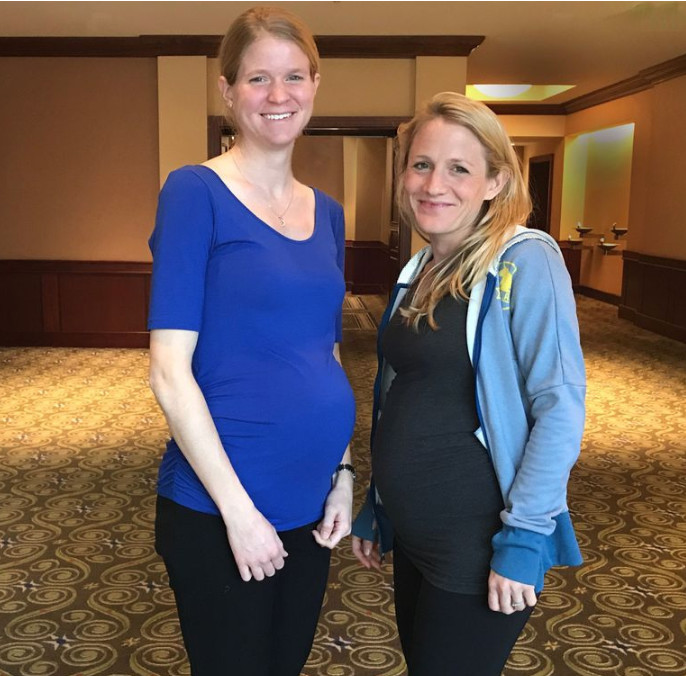

There were 511 women who hit the qualifying standard for the Trials. They range in age from 16-year-old Tierney Wolfgram to 48-year-old Perry Shoemaker. They come from a variety of professions and motivations.
Only three will make the Olympic team. But the others see the value in being at the start line, adding to the masses, showing what women are capable of at different stages of life.
Login to leave a comment
2028 US Olympic Trials Marathon
Most countries around the world use a selection committee to choose their Olympic Team Members, but not the USA. Prior to 1968, a series of races were used to select the USA Olympic Marathon team, but beginning in 1968 the format was changed to a single race on a single day with the top three finishers selected to be part...
more...Aliphine Tuliamuk is the women’s U.S. Olympic Marathon Trials champion
Rio 2016 marathon bronze medallist Galen Rupp and Kenyan-born Aliphine Tuliamuk have won the U.S. Olympic Marathon Trials in cold and windy conditions in Atlanta, Georgia, to confirm their spots on Team USA at Tokyo 2020.
Rupp won in two hours, nine minutes 20 seconds, repeating his feat from four years ago in Los Angeles.
There was a three-way race to the end for the second and third places, taken by Jacob Riley and Abdi Abdirahman.
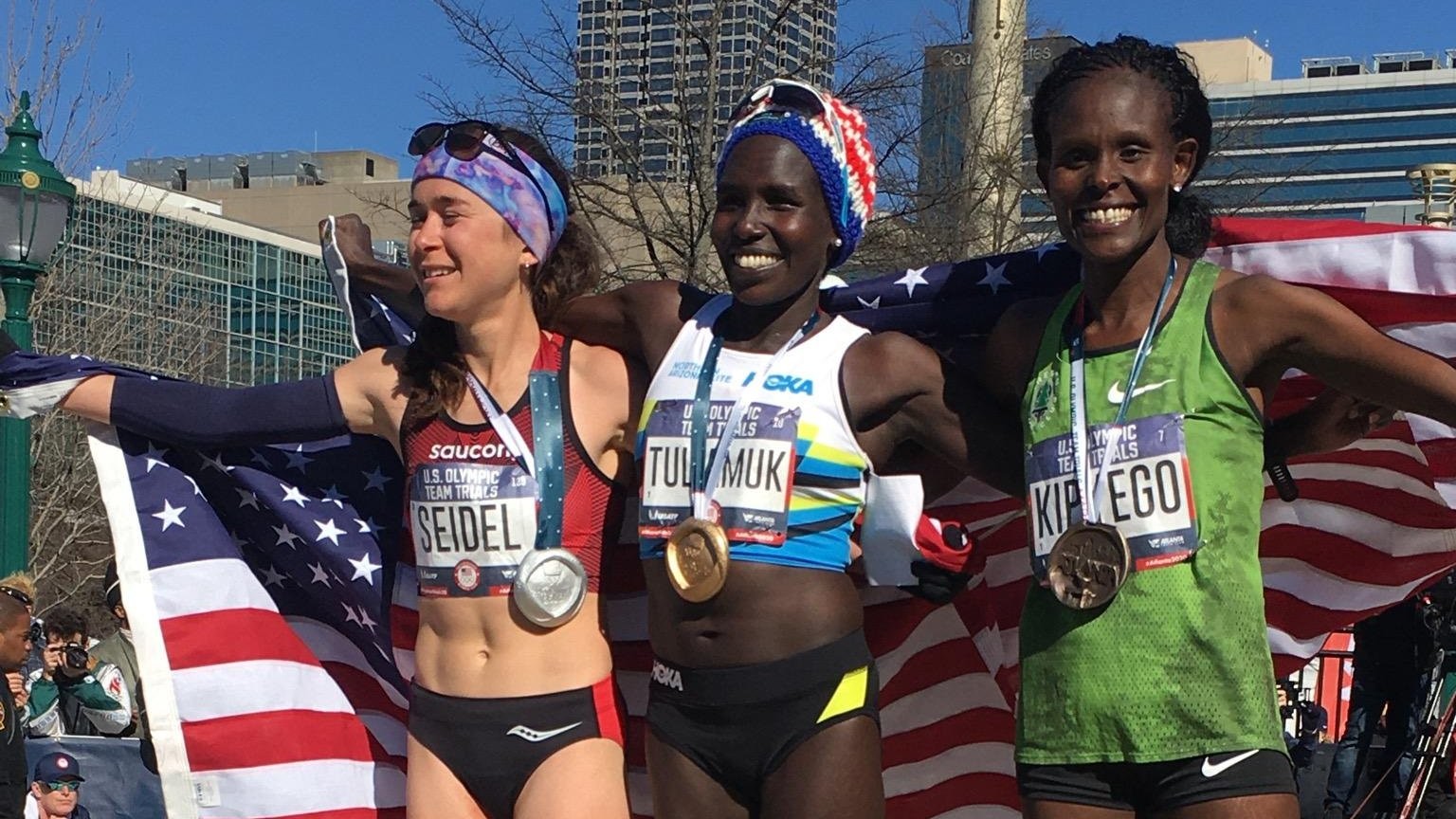
Abdirahman will become the oldest Team USA runner in Olympic history at 43 when he attends his fifth Olympic Games this summer. He made his debut at Sydney 2000.

Tuliamuk finished in two hours, 27 minutes 23 seconds.
In her first-ever marathon, Molly Seidel finished second. Sally Kipyego, the marathon silver medallist for Kenya at London 2012, took the final spot.
Rupp has had to deal with a turbulent last 18 months or so.
His last finished marathon was the Chicago Marathon in October 2018, and has had Achilles surgery since. Rupp also retired from last year's Chicago race through injury.
"I feel relief, almost, more than anything," Rupp said after crossing the finish line.
"It's been a really long year and a half."
Tuliamuk said: "It was amazing, I actually still don't believe it happened. When we pulled away, Molly and I, I said 'Molly let's go' because I knew I wasn't going to finish it by myself.
"I thought I had went too early. This is just a big day for me and I am so grateful to have won the trials."
Login to leave a comment
2028 US Olympic Trials Marathon
Most countries around the world use a selection committee to choose their Olympic Team Members, but not the USA. Prior to 1968, a series of races were used to select the USA Olympic Marathon team, but beginning in 1968 the format was changed to a single race on a single day with the top three finishers selected to be part...
more...Galen Rupp won the U.S. Olympic Marathon Trials for a second straight time
Galen Rupp won the U.S. Olympic Marathon Trials for a second straight time, returning from a coaching change and major injury to repeat as champion. The trials were held Feb 29 in Atlanta Georgia.
Rupp, a two-time Olympic medalist, clocked an unofficial 2:09:20 to win by about 42 seconds and qualify for his fourth Olympics. He is joined on the Olympic team by second- and third-place finishers Jacob Riley and Abdi Abdirahman.
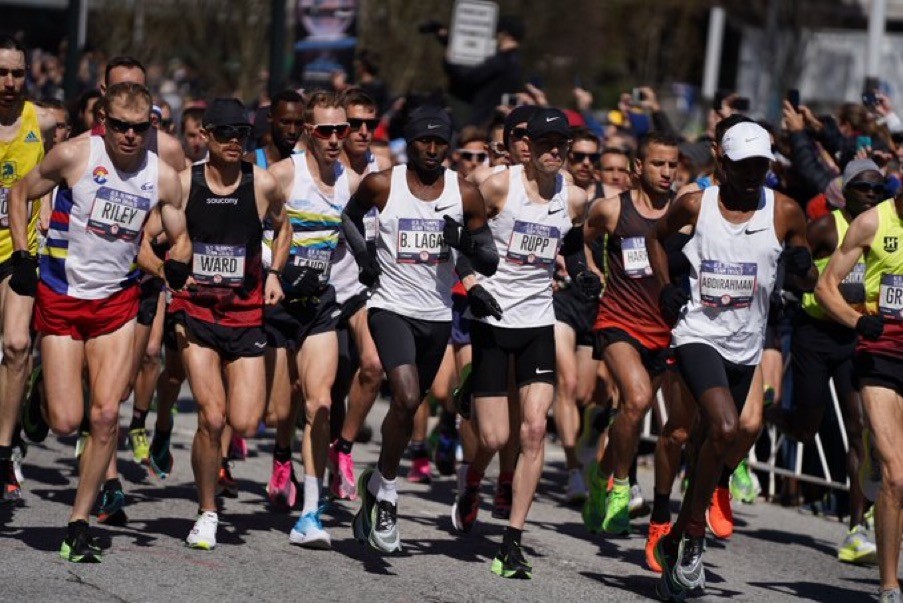
Rupp was the 2016 Olympic Marathon Bronze Medalist. The 33-year-old Galen is from Portland Oregon. At the 2012 Olympics Galen was the 10,000m Silver Medalist.
Today was a bit challening. The wind was very strong but the temp was perfect being 50 degrees at the start.
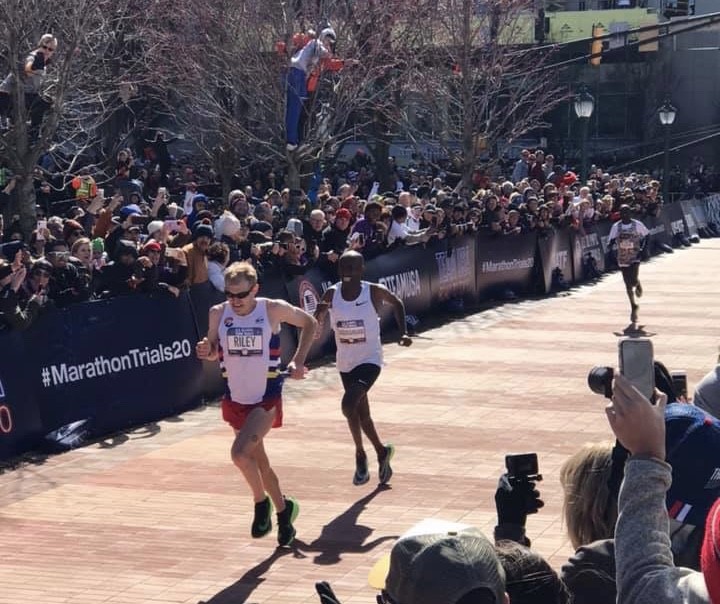
After 20 miles Galen was in total control. The big question of the day was who was going to place second and third. At 25 miles Abdirahman, Maiyo, Korir and Riley were within two seconds of each other with Jacob Riley leading them. 31-year-old Riley best time before today was 2:10:36.
Jacob Riley finished second clocking 2:10:02 a new personal best for him. Abdirahman, 43, will break Bernard Lagat‘s record as the oldest U.S. Olympic runner in history. He will become the second American runner to compete in five Olympics, joining Gail Devers, according to Olympic historian Bill Mallon.
Jared Ward, who was sixth in the Rio Olympic marathon, began fading from a chase pack soon after Rupp surged to the lead in the 16th mile.
Rupp finished a marathon for the first time since October 2018. In between, he underwent Achilles surgery and dropped out of the 2019 Chicago Marathon with a calf injury. He also lost career-long coach Alberto Salazar to a doping suspension last fall.
Rupp was not implicated by the U.S. Anti-Doping Agency and has a clean drug-testing record.
“I feel relief, almost, more than anything,” Rupp told Lewis Johnson on NBC. “It’s been a really long year and a half.”
by Nick Zaccardi
Login to leave a comment
2028 US Olympic Trials Marathon
Most countries around the world use a selection committee to choose their Olympic Team Members, but not the USA. Prior to 1968, a series of races were used to select the USA Olympic Marathon team, but beginning in 1968 the format was changed to a single race on a single day with the top three finishers selected to be part...
more...Four-time Olympic Trials Marathon qualifier Patrick Rizzo, will run his last race tomorrow in Atlanta
It will all come to an end next Saturday, Leap Day. Patrick Rizzo, one of the most decorated and versatile distance runners in the United States, will run his last professional race at the Olympic Marathon Trials in Atlanta. A testament to his longevity, it will be Rizzo’s 4th Olympic Trials race (NYC 2008, Houston 2012, LA 2016, and now Atlanta); a remarkable achievement which solidifies his running legacy.
Over his stellar 15-year pro career, the 36-year-old Rizzo notched numerous top 10 finishes at U.S. Championship distances from 8K to the marathon. He earned victories in the half-marathon in major races throughout the U.S. including Denver, Seattle, and his native Chicago. Internationally, he’s had top finishes in London (11th), the Ohme 30K in Tokyo (3rd), and in representing the USA at the Pan American Games in Guadalajara, Mexico (8th).
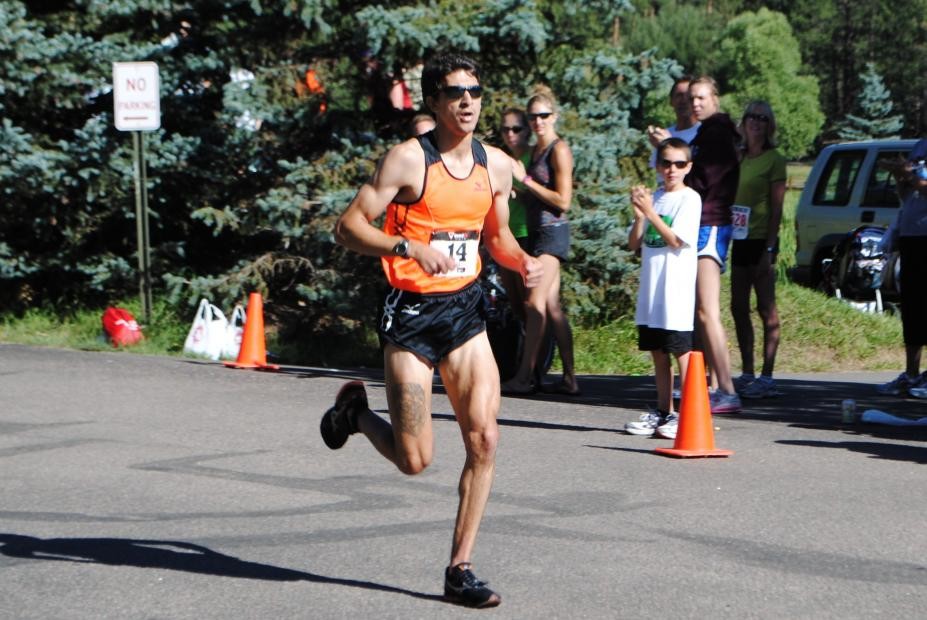
He set his marathon personal best of 2:13:42 at the U.S. Olympic Trials in Houston, finishing 13th.
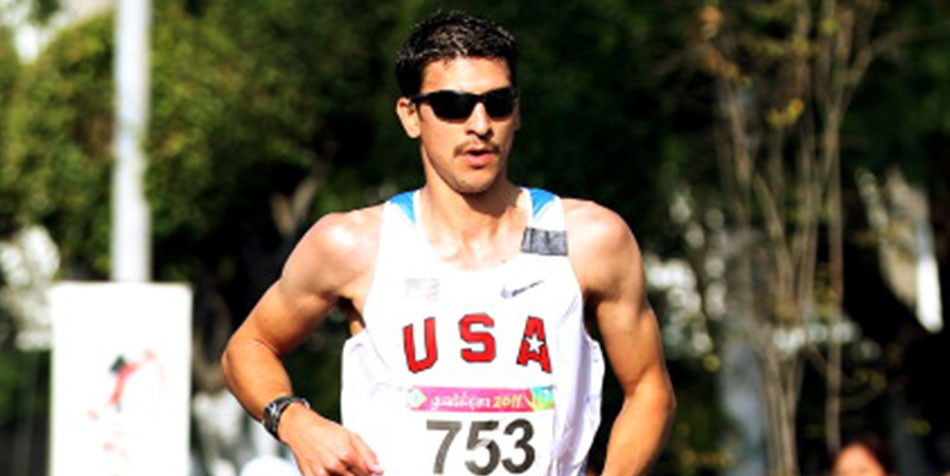
As recently as this past November, Rizzo finished on the podium at the Rock ‘N Roll Half Marathon in Las Vegas and followed that up in December by running 2:17:53 at the California International Marathon in Sacramento. During his career, Rizzo was sponsored by Brooks, Mizuno, and Skechers.
“I’ve had the privilege of being Patrick’s agent for the past 3 years and we have been friends since he started his career here in Michigan with the Hansons – Brooks Distance Project back in 2006,” said Chris Mengel of Elite Runner Management. “Coming from North Central College, an NCAA Division 3 school in his native Illinois, Patrick was a fearless runner who was never afraid to compete against the best athletes in the country and the world on the biggest stages. He loved being a pro runner and undoubtedly, will miss it. Frankly, I think we will miss him even more. The sport needs more Rizzos.”
Rizzo recently took a job as an account compliance manager with VF Corporation and moved from Colorado Springs to Nashville, Tennessee. He resides there with his wife, Emily, and their children Judah and Bonnie.
Login to leave a comment
2028 US Olympic Trials Marathon
Most countries around the world use a selection committee to choose their Olympic Team Members, but not the USA. Prior to 1968, a series of races were used to select the USA Olympic Marathon team, but beginning in 1968 the format was changed to a single race on a single day with the top three finishers selected to be part...
more...Galen Rupp and Jared Ward, who placed first and third at the 2016 U.S. Olympic Team Trials – Marathon lead the way Saturday, headlining a deep and talented men’s field that brings together the best of the best
The U.S. Olympic Team Trials – Marathon are the second stop on the 2020 USATF Running Circuit. The top three finishers Saturday will represent the United States as the Olympic Games in Tokyo this summer. Fans can tune-in for the live broadcast beginning at 12:00pm ET on NBC or NBC Sports Gold, with the men’s race beginning at 12:08pm ET and the women’s race starting at 12:20pm ET.
While Rupp had to drop out of the Bank of America Chicago Marathon in October, he still enters Saturday’s race as the prohibitive favorite. Rupp ran the top qualifying mark at the Prague Marathon in 2018, finishing in 2:06:07, while earning fifth at the Bank of America Chicago Marathon that fall in 2:06:21. In addition to earning bronze in the marathon at the Olympic Games in Rio, finishing second at the Boston Marathon in 2017 and winning in Chicago in 2017, Rupp has unmatched big-race experience against the field.
The Portland-based runner recently ran a tune-up half marathon in Arizona, finishing in 1:01:19, proving he’s in excellent shape. Not to be outdone, Ward also has some impressive finishes to his name after finishing third in Los Angeles four years ago.
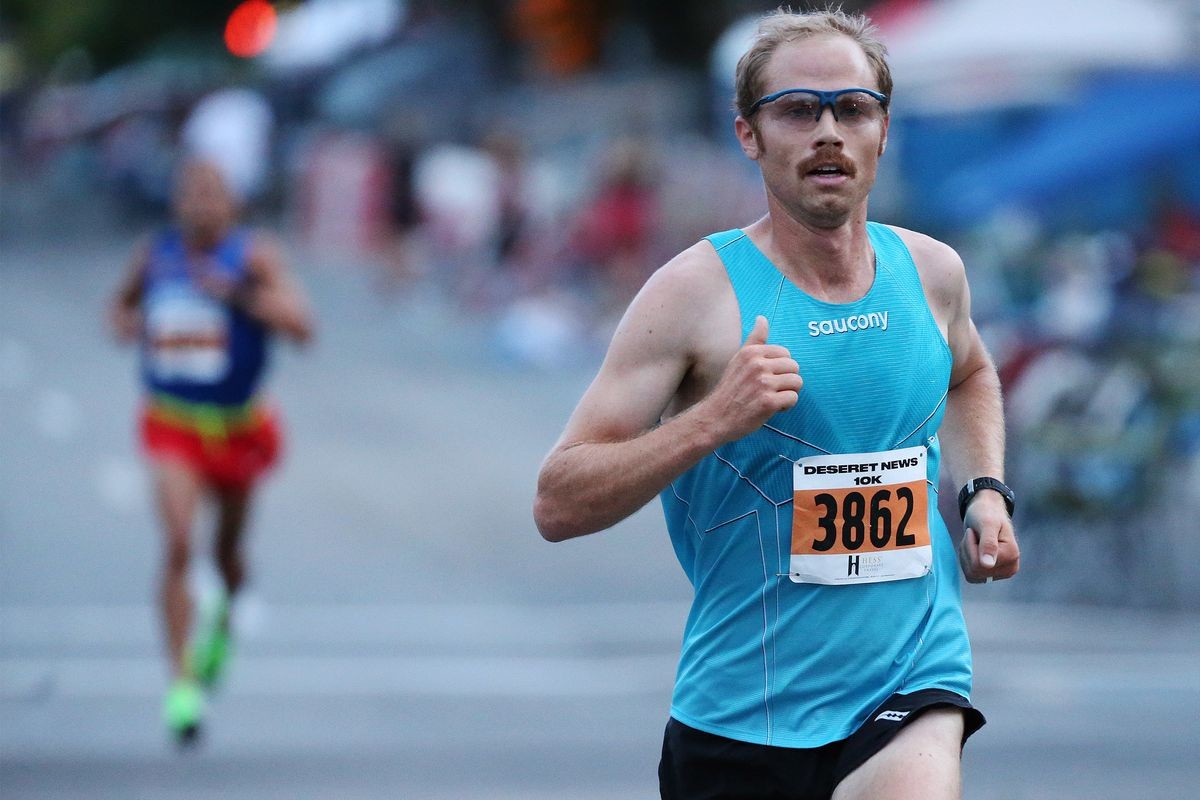
The Utah-based standout placed sixth at the Olympic Games in Rio and has consistently shown his ability to finish well up the results at major events.
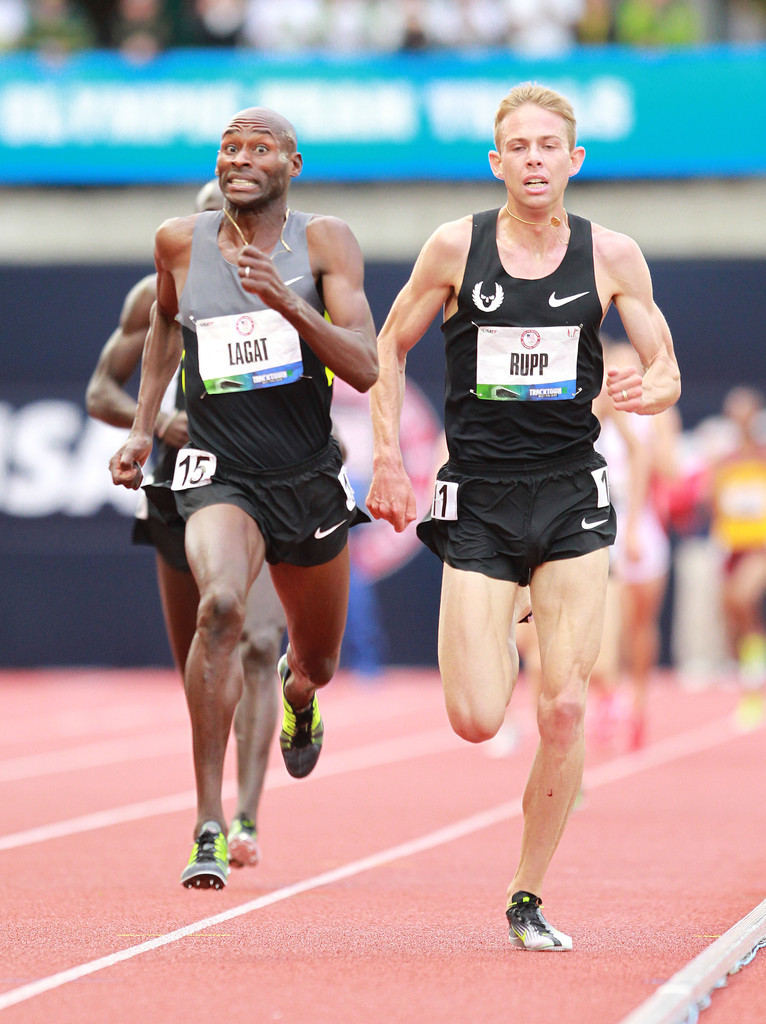
Ward ran to an eighth-place effort at the Boston Marathon last spring, finishing in 2:09:25, while earning top American status at the TCS New York City Marathon in November with a sixth-place effort. Recently running 1:01:36 at the Aramco Houston Half Marathon and finishing as the top American gives Ward plenty of momentum heading into Atlanta. On paper, Leonard Korir is the next top challenger.
While Korir has only run one marathon, it was a great performance. At the Amsterdam Marathon last fall, Korir ran the second fastest qualifying mark of Saturday’s field, placing 11th overall in 2:07:56, making him the top American performer over the distance in 2019. Along with his success on the USATF Running Circuit, as well as on the track, Korir certainly has the ability to push for the win. Next up is Scott Fauble.
The HOKA ONE ONE Northern Arizona Elite star has proven himself time and time again the past two years, quickly rising the ranks of American marathoning. Fauble placed seventh at the TCS New York City Marathon in 2018, finishing only four seconds behind Ward, while placing as the top American at the Boston Marathon in 2019 in 2:09:08, while beating Ward.
The trio of Jacob Riley, Jerrell Mock and Parker Stinson are also prime to put themselves in contention over the final miles, pushing for a spot on the Olympic team. The trio finished ninth, tenth and eleventh at the 2019 Bank of America Chicago Marathon. Riley has the most experience of the group and his 2:10:53 effort in Chicago rank him as one of the top five fastest in the field Saturday.
Two other notable top contenders are Elkanah Kibet and Shadrack Biwott. Kibet has quietly become one of America’s best marathoners, having placed 11th at the Boston Marathon in 2019 and eighth at the 2018 Boston Marathon. Owning a personal best of 2:11:51, he ranks well in Saturday’s field.
The trio of Matt Llano, Andrew Bumbalough and Chris Derrick are also looking to make an Olympic-sized result Saturday. Bumbalough enters with a 2:10:56 best coming at the 2019 Bank of America Chicago Marathon.
Another trio of incredibly experienced veterans are also entered and will be looking to make one more push for an Olympic berth. Bernard Lagat, Abdi Abdirahman and Dathan Ritzenhein are all American distance running legends. Each has qualified for at least three Olympics and represented the United States extremely well on the world stage.
by Scott Bush
Login to leave a comment
2028 US Olympic Trials Marathon
Most countries around the world use a selection committee to choose their Olympic Team Members, but not the USA. Prior to 1968, a series of races were used to select the USA Olympic Marathon team, but beginning in 1968 the format was changed to a single race on a single day with the top three finishers selected to be part...
more...Aliphine Tuliamuk represents the American dream and she hopes she caps that dream by making the 2020 US Olympic Team
Born in Kenya, Aliphine Tuliamuk grew up in the small village of Posoy where running was a part of life. She was given her first pair of racing shoes by a female pioneer in marathon running Tegla Laroupe.
Aliphine placed 9th at the 2005 World Junior Cross Country Championships. She’d actually take a break from running after that success but eventually got the attention of American colleges. She first came to Iowa State, and then transferred to Wichita State where she was an NCAA star, finishing NCAA runner-up at 10,000m twice, and nabbing a fourth place finish at the 2012 NCAA Cross Country Championships, one spot behind Jordan Hasay. Aliphine was the first woman from her village and her family of 32 kids to graduate from college with a major in Public Health and turned pro in 2013.
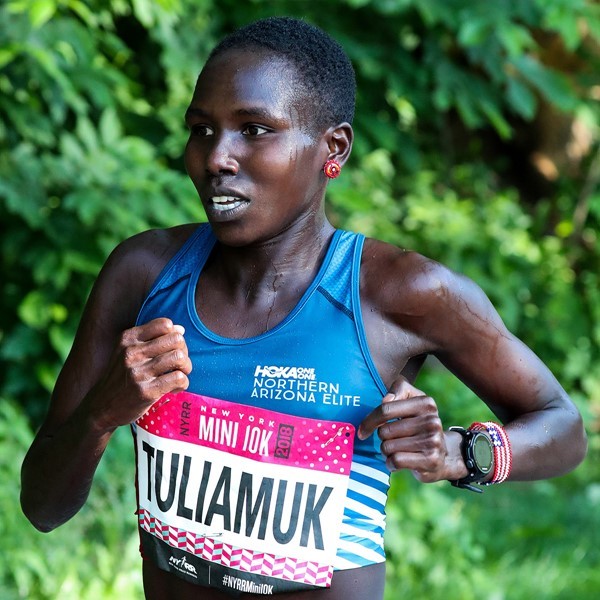
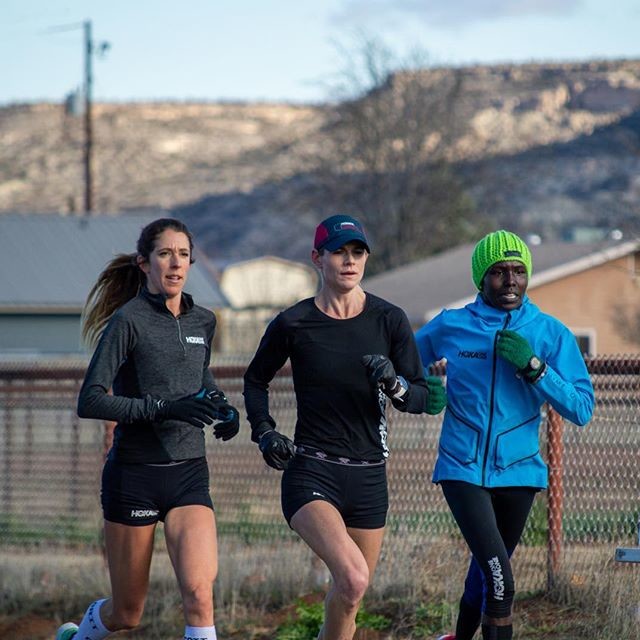
After getting her US citizenship in 2016, Tuliamuk went on a tear winning US titles. All-in-all she has won 9 US National titles from the 5k to 25k on the roads, and has won US cross country. She joined HOKA NAZ Elite in 2018, and won US titles at the half marathon and 25k and set a PB of 2:26:50 in the marathon while a member of the club.
The one big goal remaining for Aliphine is to make the US Olympic Marathon team, and she shares that goal with her fellow HOKA NAZ Elite pros, Stephanie Bruce (2:27 PB) and Kellyn Taylor (2:24 PB).
I started running as a little kid growing up in rural Kenya, running was a way of lie. I fell in love with running in 4th grade and made it to what’s equivalent to the state meet. As an adult now, running is not only my job but a way to escape the world, it gives me so much joy and fulfillment. It’s my way of letting out stresses if everyday life. I have been dreaming of making the Olympics since 2010. She said.
My training had gone well so far, we have had a few workouts on some rolling terrains, most of the pressure I feel is from within, I want to make the team, fulfill my dreams, make my country proud and continue to be a positive role model to kids especially girls from my village.
Login to leave a comment
2028 US Olympic Trials Marathon
Most countries around the world use a selection committee to choose their Olympic Team Members, but not the USA. Prior to 1968, a series of races were used to select the USA Olympic Marathon team, but beginning in 1968 the format was changed to a single race on a single day with the top three finishers selected to be part...
more...Starla Garcia is looking forward to being part of the US Olympic marathon trials this weekend
Starla Garcia ran in circles during a part of her life.
It could have killed her.
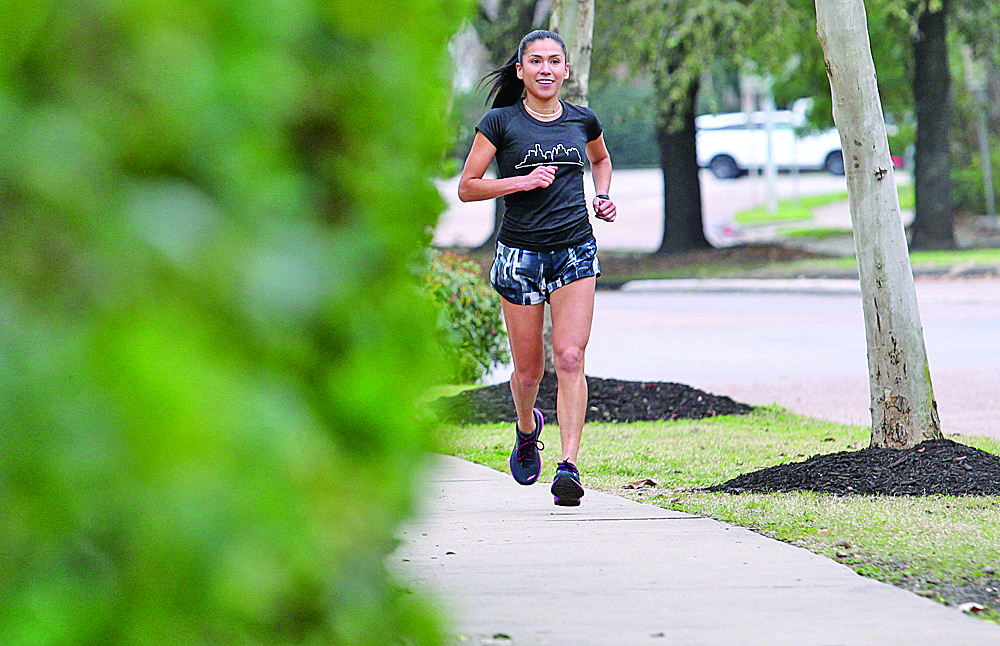
After battling with herself as well as anorexia and osteopenia, a weakening of the bones, she’s back. Now, she runs when she wants instead of when she thinks she has to. And she wants to run, especially Saturday, Feb. 29, when she will be one of more than 500 runners competing at the Olympic Marathon Trials in Atlanta.
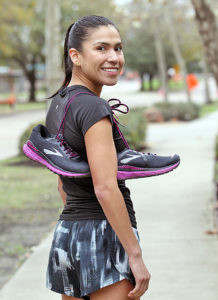
She qualified by coming in under the 2-hour, 45-minute mark at the Houston Marathon, where she now lives. Garcia has no false beliefs that she will be among the top three runners to qualify for the games; she still has goals.
“A lot of people are like ‘you can make it to the Olympics,’ that’s so nice and supportive,” she said. “But imagine the talent. I already had a ticket to go and watch it in real time and was so pumped up. My goal is to be as close as to what I did in Houston.
“I knew I was on pace, sitting behind the pacer. Maybe two or three of us went for it near the end and I was one of those girls. When you stress your body, your mind just shuts off and you stop telling yourself that you’re tired and you start trusting your body to do what it’s supposed to do.”
The former PSJA North and University of Houston cross country runner fell into a pattern in high school that female runners can fall prey to. She would run, have a little better race time, lose a half pound of pound of body weight and run with the results being even a little faster.
“I would be told great job with my time and friends and others would tell me I was looking good and it was just a pattern I couldn’t stop,” Garcia said. “I started restricting foods and it wasn’t a good time.”
A self-described “Type A, overachieving kid,” Garcia said her junior year in high school she had several AP classes and had put a lot of pressure on herself, all while still trying to run at a high level, a level that brought her a regional championship in cross country her senior year and a state appearance in the 3,200.
It was what she described as the “golden days of PSJA North Cross Country. It was so fun to be there,” she said.
“I used to run because I thought I had to. Now I run because I love to.”
by Henry Miller
Login to leave a comment
2028 US Olympic Trials Marathon
Most countries around the world use a selection committee to choose their Olympic Team Members, but not the USA. Prior to 1968, a series of races were used to select the USA Olympic Marathon team, but beginning in 1968 the format was changed to a single race on a single day with the top three finishers selected to be part...
more...So what US marathoners are going to come out on top at next weekend’s Olympic Trials
The three Olympic women’s berths from next Saturday’s US marathon trials in Atlanta look to be up for grabs among at least five challengers. Besides Desiree Linden, who placed seventh in Rio, there are Jordan Hasay, who was third in Boston last year, Emily Sisson, who was sixth in London in her 26-mile debut, Molly Huddle, a two-time track Olympian, and Sara Hall.
Amy Cragg, who placed ninth in Rio and would have been a contender, has been battling Epstein-Barr virus and withdrew this week.
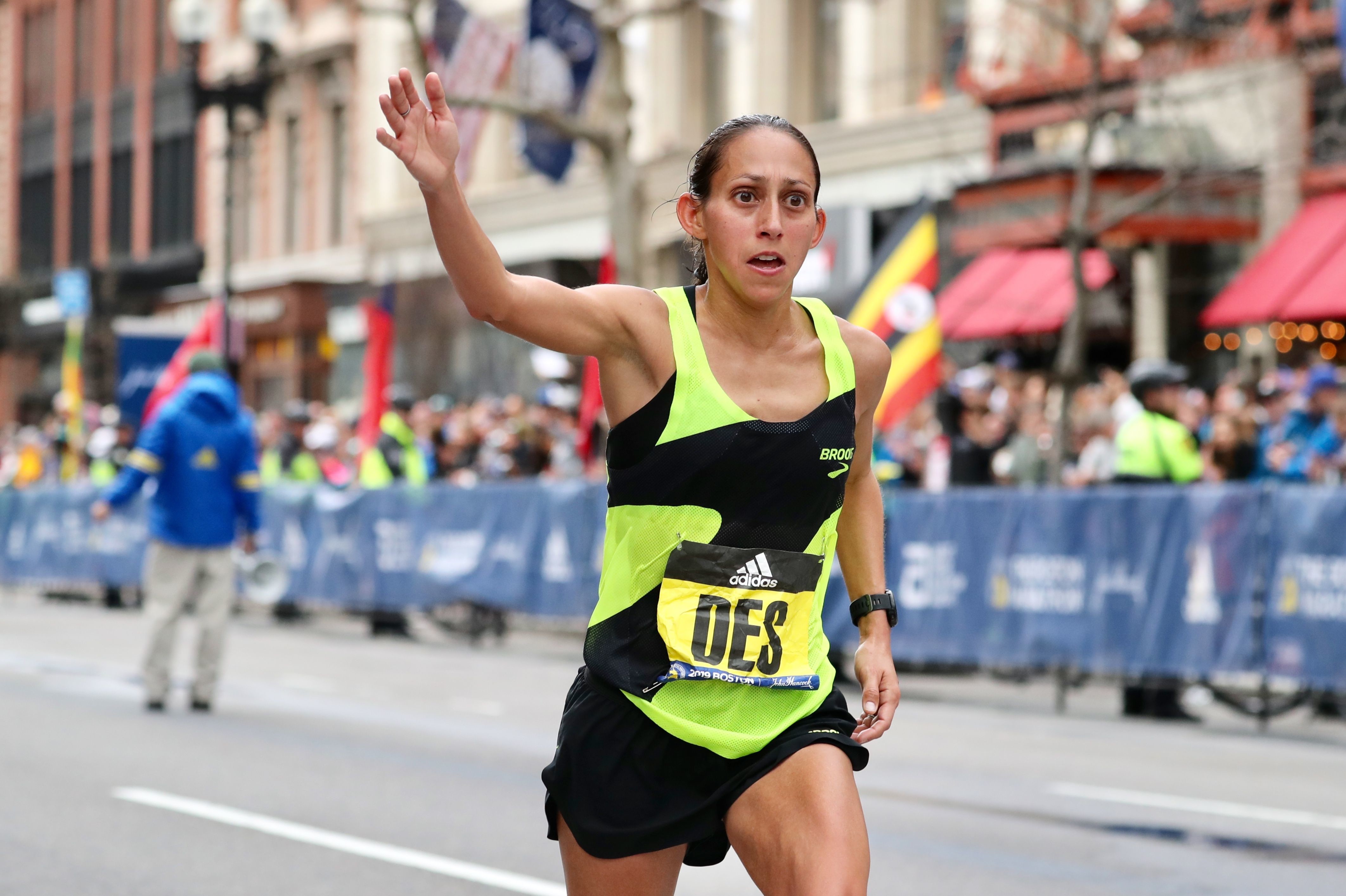
Linden, the former Boston Marathon victor who’s bidding to make her third team, already has committed to competing here in April. If she qualifies for the Games, she’ll be running three marathons in just over five months.
On the men’s side, Galen Rupp, who won bronze in 2016, is the decided favorite, with Jared Ward (sixth in Rio), Leonard Korir, and Scott Fauble, last year’s top domestic finisher in Boston, also in the mix.
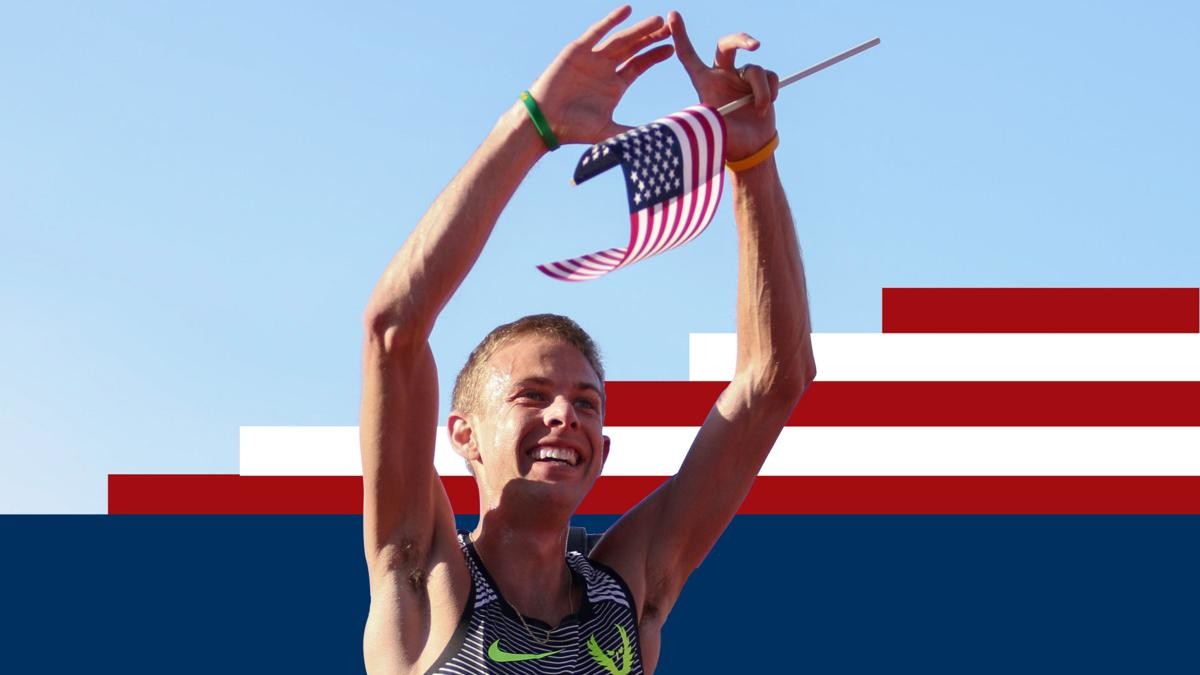
The Atlanta loop course, which will finish in Centennial Olympic Park, is a hilly challenge and will be more so if the midday temperature is in the 70s, as it often is on that date. That’s still cooler than it’s likely to be in Sapporo (average temperature 78), the former Winter Games site where the races were moved to avoid Tokyo’s sauna (87).
Login to leave a comment
2028 US Olympic Trials Marathon
Most countries around the world use a selection committee to choose their Olympic Team Members, but not the USA. Prior to 1968, a series of races were used to select the USA Olympic Marathon team, but beginning in 1968 the format was changed to a single race on a single day with the top three finishers selected to be part...
more...Galen Rupp says he is ready for the US Olympic Marathon Trials
Portland's Galen Rupp will attempt to make his fourth U.S. Olympic team in next weekend's marathon trials in Atlanta.
After a turbulent 16 months Galen Rupp is in a better place now physically and emotionally, and just in time.
The former University of Oregon star and Portland resident will attempt to make his fourth U.S. Olympic team in next Saturday’s marathon trials in Atlanta.
“I’ve had a great last week and a half of training,” Rupp says. “I got some good speed work in. I did a really long run that went longer than marathon distance. I’m feeling really good about where I’m at.”
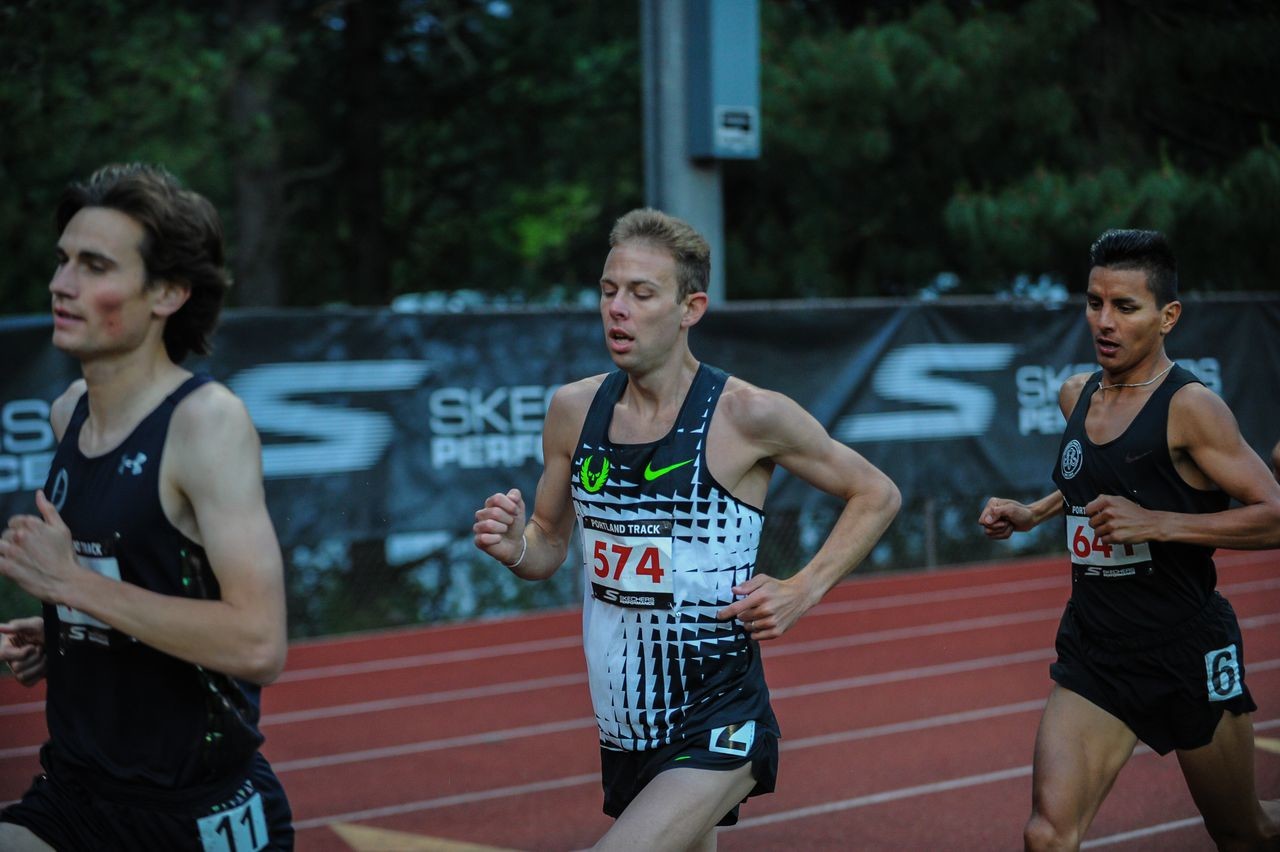
Rupp, 33, is the reigning men’s trials champion and the 2016 Olympic marathon bronze medalist. But in some ways that was in another lifetime.
He last completed a marathon in October of 2018, when he came across fifth in Chicago. The next day his left foot was so swollen he barely could walk.
Doctors determined the problem was a bony protrusion on his heel that was causing the Achilles tendon to fray. It required surgerythat kept him out of action for months.
Rupp’s left leg still wasn’t right when he returned to competition a year later for last fall’s Chicago Marathon. He was forced off the course late in the race with a calf strain.
“I told myself, ‘This is going to hurt like crazy. You’re just going to have to suck it up and get through it,’” Rupp says of his pre-race mindset. “Unfortunately, my body didn’t allow me to do that.”
By then, Rupp was without his coach, Alberto Salazar. Salazar had been given a four-year ban two weeks earlier for violating doping rules. Nike disbanded the Oregon Project, the distance team which Salazar coached and of which Rupp was a member.
None of the violations for which Salazar was banned were for intentionally doping athletes. None of Salazar’s athletes were implicated in violations that led to the ban, nor have any failed drug tests. Salazar is appealing the ban.
But the upshot was, Rupp was without the man who had been his primary coach since high school. It was a tough time.
“I’m pretty religious, a strong Catholic,” Rupp says. “I truly believe God has this big plan for each and every one of us. Even if it doesn’t make sense at the time, or you’re struggling to see some good in it, you have to just keep pushing through it. It’s about having faith that it’s going to be all right.”
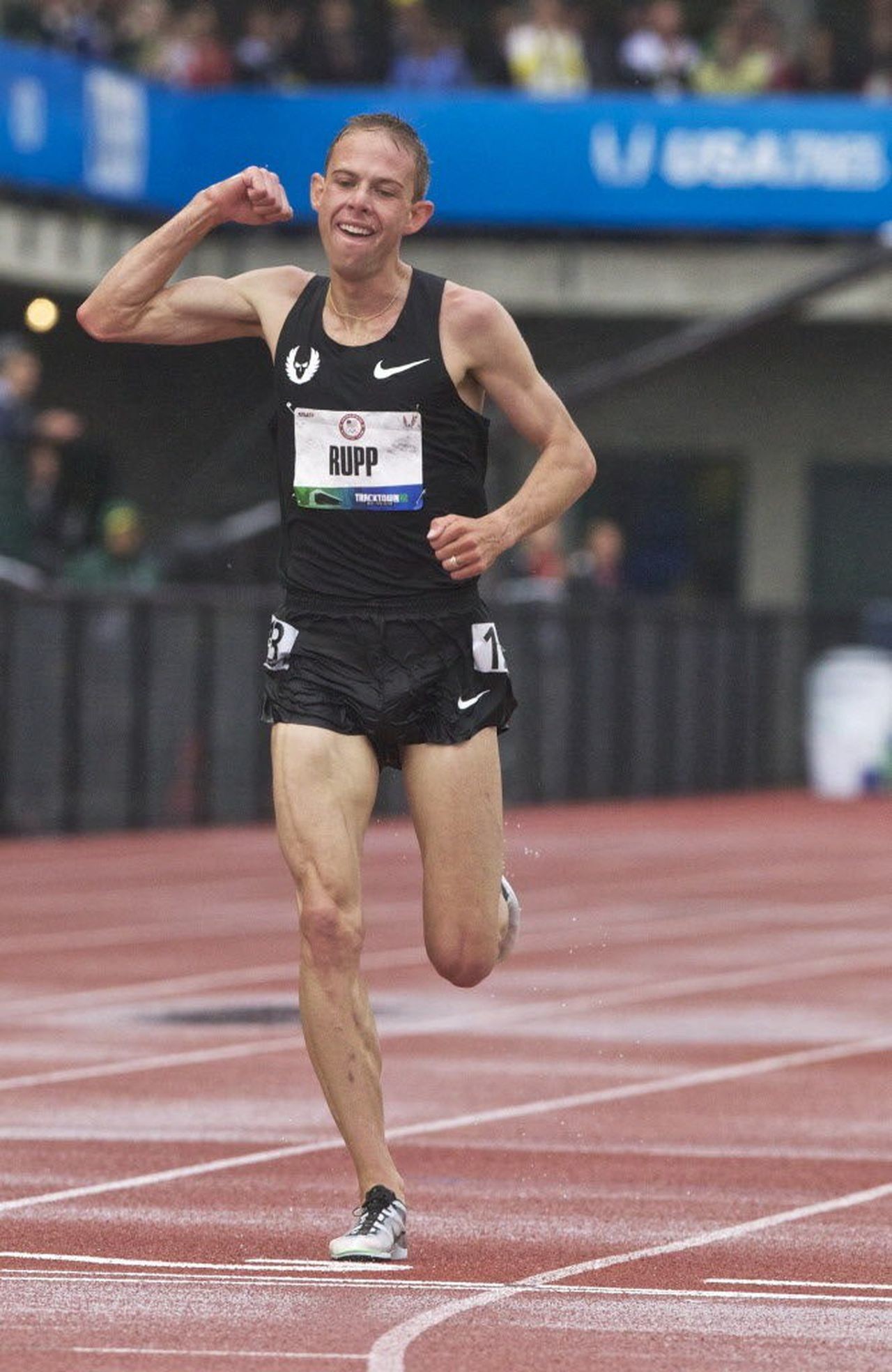
The philosophy has allowed him to put the pain, the injury setbacks, the coaching upheaval aside and turn his attention inward.
“All I can do is try to be the best athlete, the best person, the best husband, the best father I can be.” Rupp says. “Obviously, none of us is perfect. I would rather focus on what I can do to keep making myself better than worry about things I can’t control.”
He studied Tai Chi, which has helped him zero in on what matters most to him, being fully present for his wife, Keara, and their four children and getting race-ready for Atlanta.
At long last, Galen Rupp is within reach of the mountain top
He hired Northern Arizona coach Mike Smith to oversee his training. Smith has flown up from Flagstaff a few times to supervise workouts. But for the most part, former Oregon Project assistant Tim Rowberry has served as Smith’s eyes in Portland.
Rupp says the new coaching arrangement has worked well. Smith kept much of the training Rupp had been doing with Salazar, but not all.
“I wasn’t looking for someone who just wanted to replicate things and be a yes man,” Rupp says. “I think that would have been almost the worst thing. I wanted someone who was going to continue to challenge me.”
Rupp tested himself three weeks ago while winning the Sprouts Mesa Half Marathon in Mesa, Arizona in 1 hour, 1 minute, 19 seconds.
He looked good, felt good and came back from Arizona with renewed confidence. His left leg held up.
“There were a few little thoughts, like, ‘What if it does start to hurt again?’” Rupp says. “Obviously, the last year hasn’t gone all that great.
“That stuff certainly was running through my head. But running the race and feeling as good as I did and as strong as I did on that leg — I wouldn’t say it’s completely back to where it was before the surgery, but it’s pretty darn close.”
Rupp says he has driven himself hard to be prepared for anything he might see in Atlanta — the weather, the hills, the competition and the physical discomfort.
“It’s how I’ve always looked at training,” he says. “You put yourself in extremely uncomfortable situations. You make yourself hurt. You make yourself suffer. That’s how you get better.”
by Ken Goe (Oregon Live)
Login to leave a comment
2028 US Olympic Trials Marathon
Most countries around the world use a selection committee to choose their Olympic Team Members, but not the USA. Prior to 1968, a series of races were used to select the USA Olympic Marathon team, but beginning in 1968 the format was changed to a single race on a single day with the top three finishers selected to be part...
more...Wilkerson Given is Making Another Trial Run for Olympics
On Leap Day, Wilkerson Given hopes to take an Olympic leap – although an Olympic run might be a better description.
The former Mountain Brook high school distance runner will be competing in the 2020 U.S. Olympic Team Trials marathon on Feb. 29 in Atlanta. The course runs through the heart of Atlanta and past monuments from the 1996 Olympic Games.
The 2020 event has one of the largest Olympic Trials field ever, with 261 men and 511 women having run qualification standards. The top three finishers in both men’s and women’s races will make up the U.S. marathon team for the 2020 Summer Games, being held in Tokyo July 24 to Aug. 9.

“I think there’s a group of 15-20 guys who all have a legitimate shot of making the team, but it just depends on the day,” Given said. “Marathons are hard to predict because a lot can happen in the course of a race.”
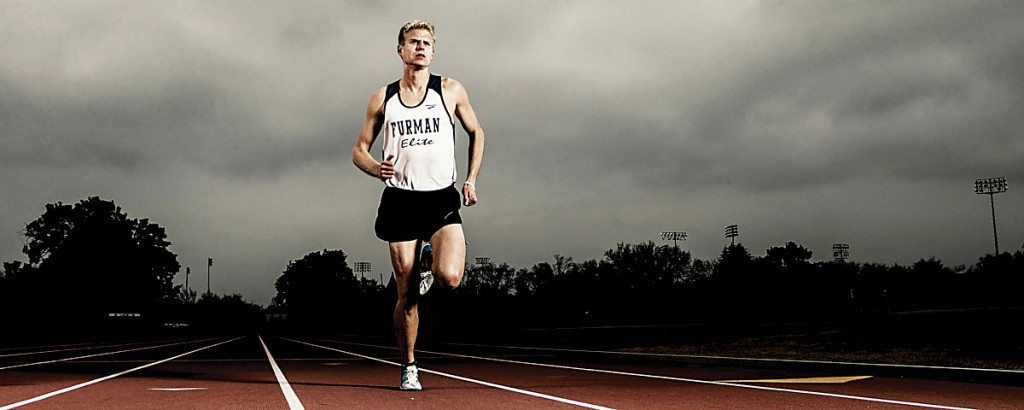
The race starts at 11 a.m. CST and will be televised by NBC.
This will be Given’s second time running in the Olympic Trials marathon. He competed in the 2016 trials in Los Angeles and finished 54th with a time of 2:27.50.
Given, 28, qualified for the 2020 trials by running 2:11.44 in the Bank of America Chicago Marathon last fall.
“It’s going to be a tough race, but I wouldn’t say there’s any pressure on me,” Given said. “I’m more excited about the opportunity.”
Given will be competing in his backyard, so to speak. He moved to Atlanta from The Woodlands, Texas, in 2018 and is a professional runner with the Atlanta Track Club Elite.
“The Atlanta track club was definitely part of my decision to move to Atlanta,” Given said. “The job I had in Texas had flexible relocation.
“Being from the Southeast, Atlanta is close to home, close to where I went to college. I have college friends and some high school friends who live in the Atlanta area.”
Shortly after joining Atlanta Elite, Given won the 2018 Rock ‘n’ Roll Las Vegas Half Marathon in 1:02.48. He also finished seventh in the USATF Half Marathon Championships in May 2018.
by Rubin E. Grant
Login to leave a comment
2028 US Olympic Trials Marathon
Most countries around the world use a selection committee to choose their Olympic Team Members, but not the USA. Prior to 1968, a series of races were used to select the USA Olympic Marathon team, but beginning in 1968 the format was changed to a single race on a single day with the top three finishers selected to be part...
more...Laura Kaulen is a mother, wife, an intervention specialist at Central Crossing High School and she’s been an avid runner since the seventh grade, and is set to challenge the 2020 U.S. Olympic Marathon Trials
Kaulen has a lot going on.
She is a mother, wife, an intervention specialist at Central Crossing High School and she’s been an avid runner since the seventh grade.
“Running; it brings me happiness,” Kaulen said. “It brings me peace. It brings me time to think. It gives me time to analyze my day and what’s going on.”

Running also brings Kaulen challenges – challenges like the 2020 U.S. Olympic Marathon Trials in Atlanta, which will take place at about 12:15 p.m. on Sunday, February 29.
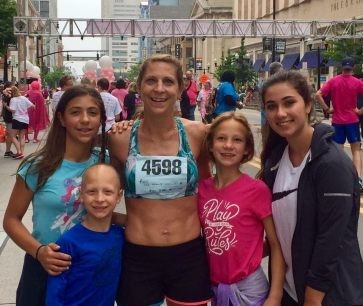
“To qualify for the Olympic Trials you had to either run a 2:37, which gets you in the A qualifier or B qualifier is under 2:45 flat,” she said. “And I ran a 2:42:48 at the Chicago Marathon this past October.”
That race pushed Kaulen into the Olympic Trials for the second time.“I feel good, she said. “I feel like my training has gone really, really well. I’m hitting a lot of hard workouts; running at marathon pace or under marathon pace, which will help me in Atlanta.”
That training, which averages about 75 miles each week, also runs over and into Kaulen’s role as an educator.“Running gives me time to think, so I’ve come up with some great lesson plans while running because it gives me time to think about this and that and how well this student is doing or what I need to do for this student.” She said.
Kaulen tells 10TV she hopes it can inspire her students along the way.
“There’s so many obstacles and not every day you’re going to feel good to be able to run and not every day are you going to set a goal to do something and you’re going to achieve it,” she said. “So I feel like I can relate to my students who have many obstacles.”The top three men and women finishers at the Olympic Trials will be eligible to represent the country at the summer Tokyo Olympic Games.
by Molly Brewer
Login to leave a comment
2028 US Olympic Trials Marathon
Most countries around the world use a selection committee to choose their Olympic Team Members, but not the USA. Prior to 1968, a series of races were used to select the USA Olympic Marathon team, but beginning in 1968 the format was changed to a single race on a single day with the top three finishers selected to be part...
more...28-year-old Megan Youngren will be the First Openly Transgender Athlete to Compete at the U.S. Olympic Marathon Trials
Megan Youngren became one of 63 women at the California International Marathon to officially qualify for the 2020 U.S. Olympic marathon trials, the race that will determine the team for Tokyo. Her 40th-place finish in 2:43:52 came as both a relief and a reward, after four months of intense training. But it also marked another significant moment: With her qualification, Youngren is set to make history on Feb. 29 as the first openly transgender athlete to compete at the U.S. Olympic marathon trials.
“I’m open to talking about it to people because that’s the only way you make progress on stuff like this,” says Youngren, who first started taking hormone medication as a college student in 2011. She came out publicly as transgender in ’12 and finalized paperwork for her transition in ’19.
“To my knowledge, and that of other staff who have been with USATF for many years, we do not recall a trans competitor at our Marathon Trials,” spokesperson Susan Hazzard says. Just last month, Chris Mosier was interviewed by The New York Times as the first transgender athlete to qualify for and participate in an Olympic trials in the gender with which he identifies. Mosier is the first trans man to compete with cisgender men at the 50-kilometer race walk in Santee, Calif. “For me, it’s all about making a pathway for all the trans athletes that come after me,” he told the Times.
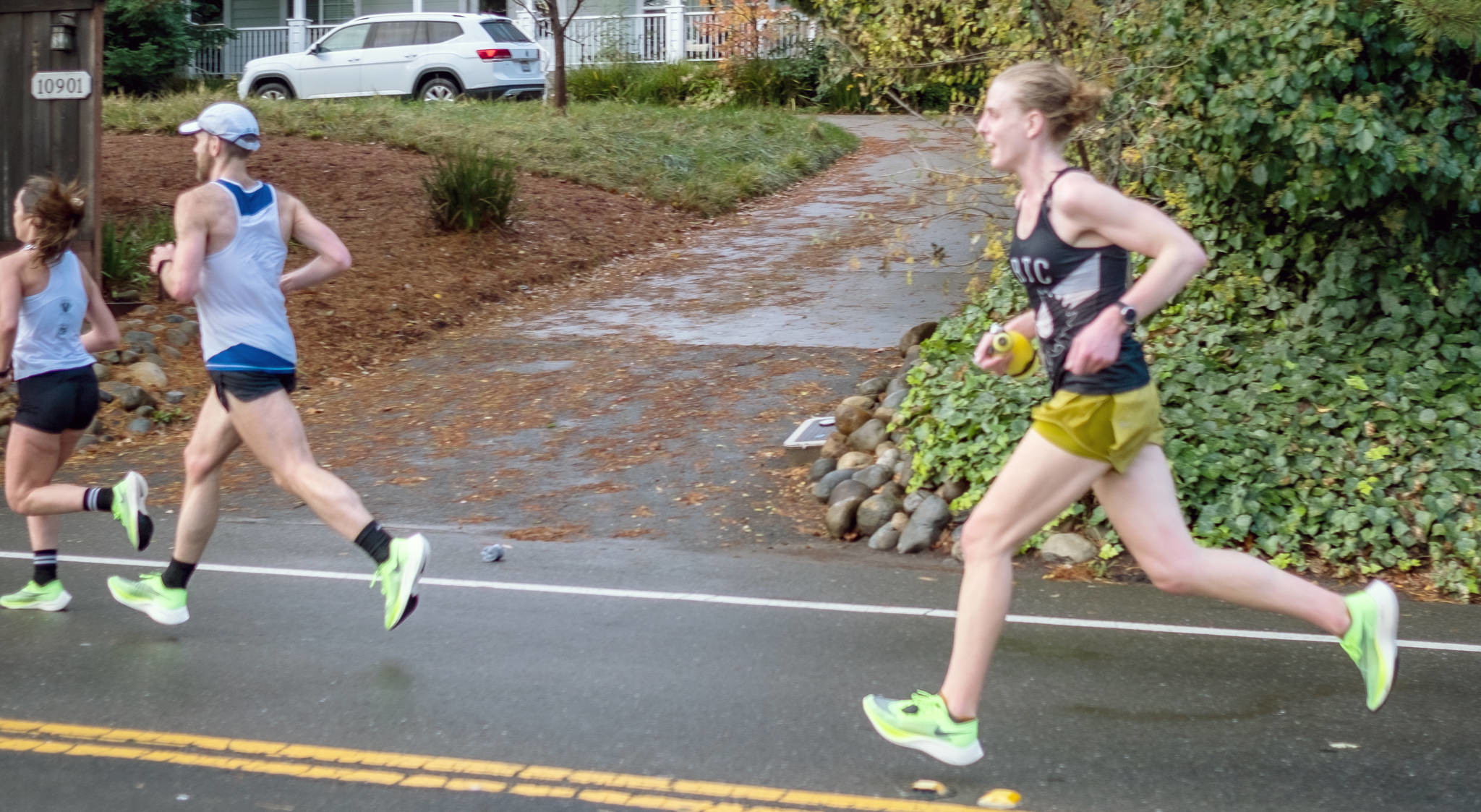
In 2013, Youngren started running to lose weight and boost her health after transitioning, and now she primarily races on trails and runs up and down mountains for fun. Youngren says that running helped alleviate any lingering symptoms from a case of shingles. By 2014, she was running consistently, but with little structure to her training. An Alaska native, Youngren ran her first marathon at the 2017 Equinox Marathon in Fairbanks in 4:48, on a course with an unforgiving 3,285 feet of elevation gain and loss. Despite the difficulty and cramping, she credits that race as the one that got her hooked on the 26.2-mile distance.
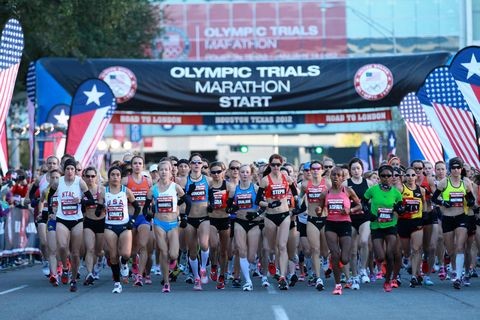
At the 2019 Los Angeles Marathon, Youngren managed to get her time down to 3:06:42, which propelled her to seek out a sub-three-hour goal for the first time. At the time, she was working at a bakery and her job required a lot of manual labor, but she still managed to fit in runs after work. When the bakery closed in September, it freed up some time in her day to run more, and Youngren’s mileage eventually reached 85 per week, with the majority on trails.
“I thought that if I worked incredibly hard and took some huge risks that I could run a 2:45,” Youngren says. “People will try to put it down by saying, ‘That’s too easy because you’re trans.’ But what about the 500 other women who will qualify? There’s probably someone with the exact same story. I trained hard. I got lucky. I dodged injuries. I raced a lot, and it worked out for me. That’s the story for a lot of other people, too.”
Before the California International Marathon, Youngren’s previous PR was a 2:52:33 set in August at the Anchorage RunFest’s Humpy’s Marathon, where she battled heavy winds and was on qualifying pace through 18 miles.
“I’ve had multiple times this year when I thought I was going to hit that time but then fell apart,” Youngren says. “This time, it was really hard but I made it through. The race itself broke me mentally.”
by Chris Chavez
Login to leave a comment
2028 US Olympic Trials Marathon
Most countries around the world use a selection committee to choose their Olympic Team Members, but not the USA. Prior to 1968, a series of races were used to select the USA Olympic Marathon team, but beginning in 1968 the format was changed to a single race on a single day with the top three finishers selected to be part...
more...The true test of the newest Nike shoe will be in under three weeks' time at the U.S. Olympic Marathon Trials
Last week Nike released their newest line of shoes which includes the Air Zoom Alphafly Next%, complete with a 39.5 mm stack height, falling just under World Athletics’ new ruling of a maximum of 40 mm. Since the release of the so-called super shoe shoe (that conveniently follows all of World Athletics’ new rules) there has been heavy speculation that Nike was tipped off, but WA claims that’s not the case.
World Athletics told The Guardian last week, “We spoke to several shoe companies, including Nike, a few days before we released our new shoe regulations to let them know what we were planning. But that was the extent of it.”
Alex Hutchinson has written extensively on this topic (including in the current issue of Canadian Running Magazine). He spoke to Nike and claimed on Twitter that according to the company, the commercial version of the Air Zoom Alphafly Next% isn’t all that different from the shoe Eliud Kipchoge wore to break the two hour barrier in October.

Here are the major takeaways from the thread: 1.- Kipchoge’s Alphafly prototype was legal, and basically identical to the upcoming consumer version. 2.- World Athletics measured a size eight as 39.5 mm [stack height], which is their reference size (WA rules actually say size 42). 3.- Heel-toe offset will be 8 mm in commercial shoe.
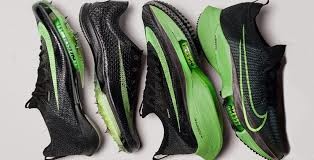
If the Kipchoge shoe was, in fact, nearly identical to the consumer version (available February 29 in limited release), then perhaps World Athletics’ assertion that no shoe company had advance notice is credible.
When asked last week about what the future holds for running shoe technology, Hutchinson points out that we don’t actually know how good the Alphafly is yet. He wrote in an email, “Seeing Kipchoge run sub-two in the earlier prototype was obviously impressive, but there was a lot going on in that race. With the original Vaporfly, we had actual external lab data telling us how good it was. But for subsequent models, we’re just guessing. Just because it looks crazy doesn’t mean it’s substantially better than previous models. I guess we’ll find out—but for now, that knowledge gap makes predictions about the Alphafly’s impact difficult.”
The true test will come at the U.S. Olympic Marathon Trials when the shoe will go head-to-head against other companies’ carbon-plated creations for the first time. That event will have spectators watching shoes just as closely as the runners.
by Madeleine Kelly
Login to leave a comment
2028 US Olympic Trials Marathon
Most countries around the world use a selection committee to choose their Olympic Team Members, but not the USA. Prior to 1968, a series of races were used to select the USA Olympic Marathon team, but beginning in 1968 the format was changed to a single race on a single day with the top three finishers selected to be part...
more...A look at who's got a shot at making the American Olympic marathon squad
The U.S. Olympic Trials are less than three weeks away. The fields are finalized, the tapers are starting soon and runners and fans are anticipating one of the most exciting trials yet.
Here’s a look at which runners we think are most likely to place in the top three and be named to the U.S. Olympic squad after the February 29 race in Atlanta.
Women’s field.- The favorites to make this Olympic team are Sara Hall (Asics), Des Linden (Brooks), Molly Huddle (Saucony) and Emily Sisson (New Balance). Hall has been extremely consistent over the past year, running personal bests in both the marathon and the half (a 2:22:16 in Berlin and a 1:08 in Houston just a few weeks ago). Linden is a gamer and someone who shows up no matter the conditions. She’s also an Olympic marathon veteran.

Huddle and Sisson are training partners who have helped each other improve over the marathon distance. Huddle has been a staple on the American distance scene for years (she’s a multi-time American record holder) and Sisson is the rising star who has flourished alongside Huddle. The pair own 2:23:08 (Sisson) and 2:26:33 (Huddle) marathon personal bests and know how to show up on race day. But the knock on Sisson is that she’s only run one (albeit, fantastic) marathon, and inexperience could be her downfall.
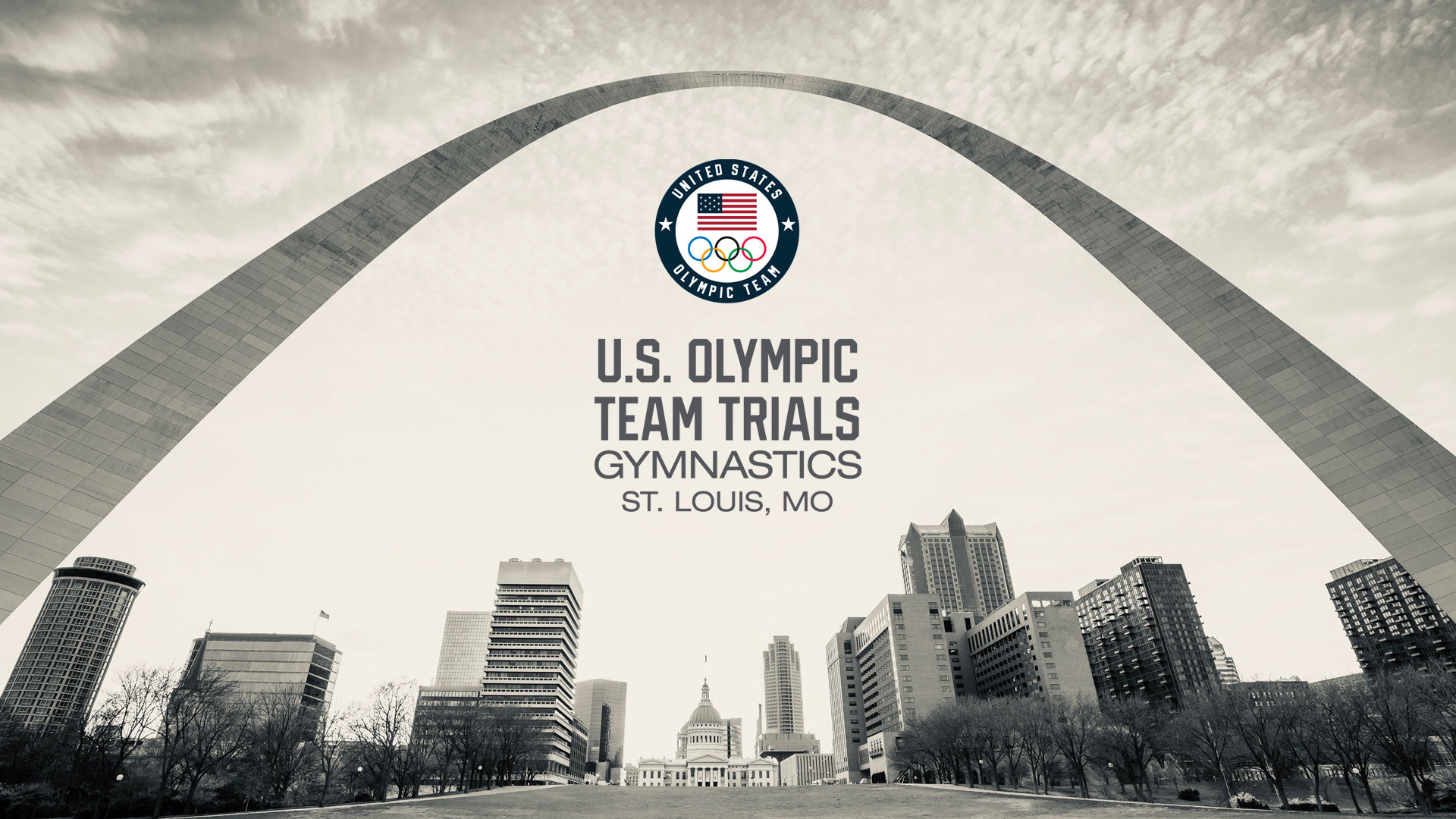
Our best bet for the top three, in order, is: Hall, Huddle, Linden.
The dark horses.- Jordan Hasay (Nike) and Amy Cragg (Nike) are the dark horses. We just haven’t seen enough to know where these two runners are at. Hasay’s most recent result is a DNF from the Chicago Marathon. Admittedly, her training group had just folded and her former coach was charged with doping infractions, so her racing conditions weren’t ideal. But Hasay hasn’t even gotten on a start line since then.
As for Cragg, she’s the 2017 World Championship medallist and 2016 Olympian over the distance. Cragg’s results are few and far between over the past two years, but she put it all together at the Tokyo Marathon in 2018 to run a 2:21:42–one of the fastest American times in history. Both Hasay and Cragg boast the best personal bests of the bunch, but with no indication of fitness, it’s impossible to predict where they’ll end up in 20 days’ time.
Men’s field.- The favorites in the men’s race are Galen Rupp (Nike), Leonard Korir (Nike), Scott Fauble (Hoka) and Jared Ward (Saucony). Rupp was almost a dark horse, due to his poor resume from the past year, but on Saturday he clocked a 1:01:19 in a tune up half-marathon in Arizona. So he’s in good shape.
As for the other three, all hold personal bests from 2019 around the same time. Korir’s is 2:07:56 from Amsterdam and Fauble and Ward’s are both from Boston 2019 at 2:09:09 and 2:09:25. Among these three it’s really a toss-up, based on past performances, as to who makes the team.
Our best bet for the top three, in order, is: Rupp, Ward, Korir.
The dark horses.- The dark horses in this event are the masters men: Bernard Lagat (Nike) (45) and Abdi Abdirahman (Nike) (42). Like in women’s marathoning, the men are also proving that age is just a number on the race course. Lagat and Abdirahman have both recently clocked 2:11 and 2:12 marathons and are in the conversation for the team if they have a good day in Atlanta.
by Madeleine Kelly
Login to leave a comment
2028 US Olympic Trials Marathon
Most countries around the world use a selection committee to choose their Olympic Team Members, but not the USA. Prior to 1968, a series of races were used to select the USA Olympic Marathon team, but beginning in 1968 the format was changed to a single race on a single day with the top three finishers selected to be part...
more...Emma Kertesz will be running the 2020 US Olympic Marathon Trials at the end of the month
Emma Kertesz returns to the 2020 United States Olympic Team Trials in the Marathon later this month in Atlanta.
Kertesz is a graduate of Central Catholic High School and a former University of Toledo runner. She competed four years ago in the same event in Los Angeles where she finished 39th.
Returning to the trials for the second straight cycle was painful.
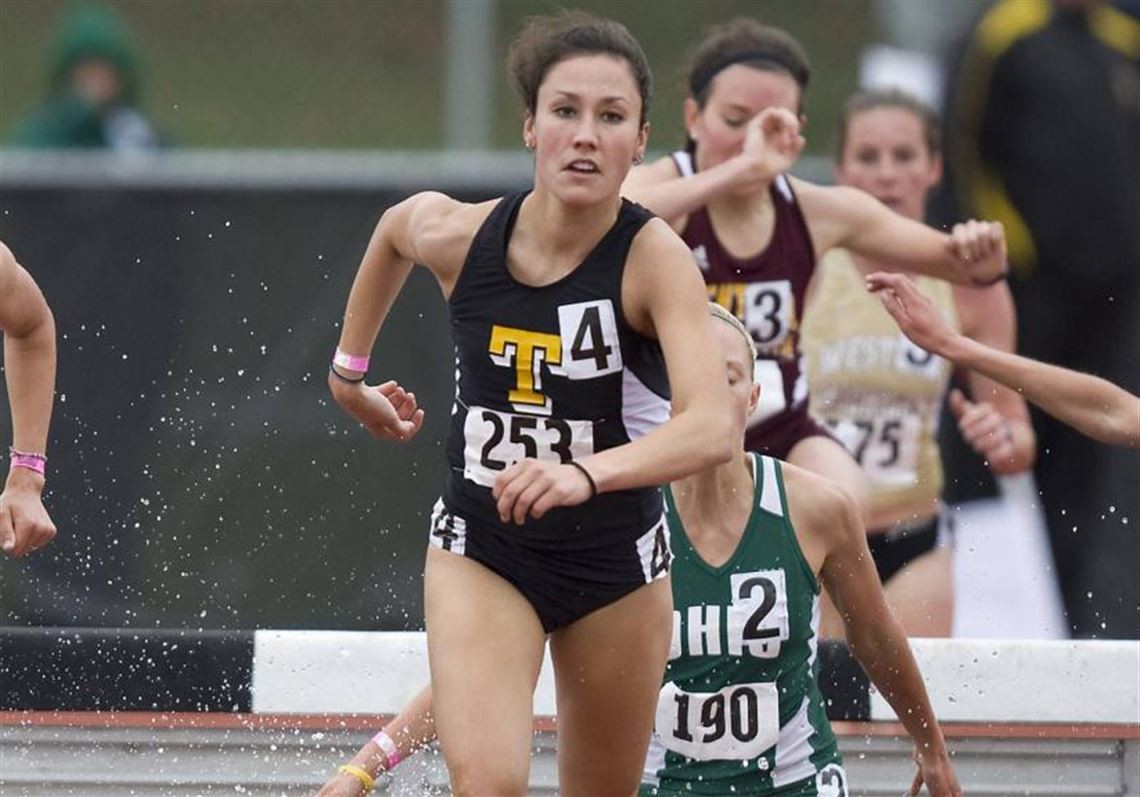
"I tore my hamstring," Kertesz said. "I ran the California International Marathon to qualify for the trials, and then I've been dealing with what I thought was some high hamstring tendinitis. I'm pretty sure on even 80 percent training I'll be able to hit the qualifying standard and then I'll deal with my hamstring after.
"And then I got an MRI and found out that I actually had a tear in my hamstring. So I ended up take off almost three months."
But Kertesz still had a spot in the U.S. Olympic Team Trials Marathon. She recently took a leave from her teaching job to focus on applying for doctoral programs; she would ultimately like to work at the local or state level with education curriculum or research.
The doctoral program starts in the coming months, all while running an average of 85 miles per week over the last several weeks while training for the trials.
"Now that the field is doubled in size than it was in 2016 where I was 39th," Kertesz said. "But I think that I have a good shot of placing in the top 40. I'd like to be competitive and maybe I eke out a personal best that would be great, especially on that kind of course."
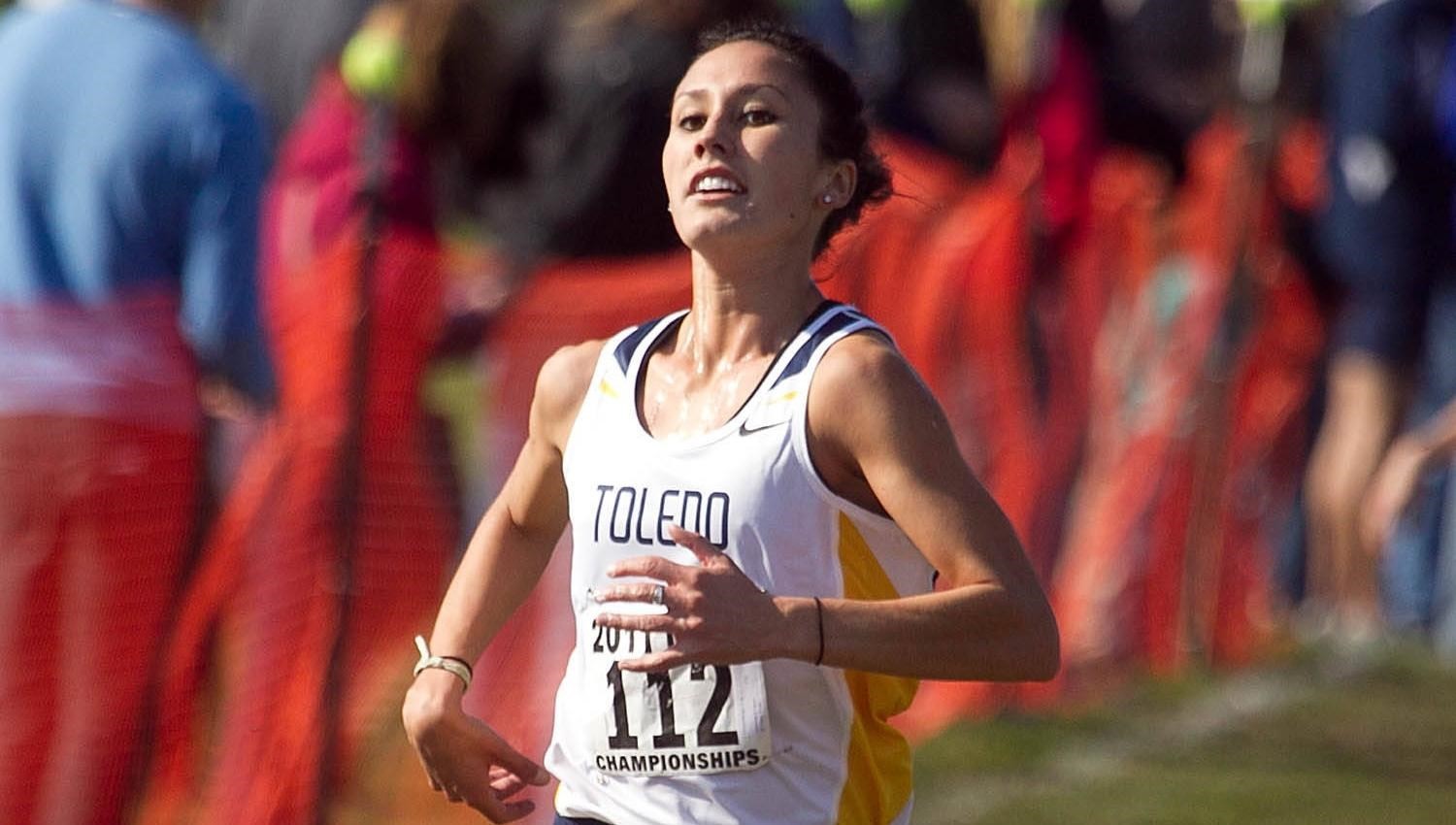
If Kertesz is not busy enough, she still has a side project she is working on related to her family's ancestry -- specifically her father David. At 18-years-old, he found out he was adopted and is a Navajo Native American.
"It's emotional but it's cathartic for both of us," Kertesz said. "Ultimately, it's brought us closer together and given me a chance to reflect on my dad more as a person more than just being my dad."
This project also has influence in her running life.
"I have a greater appreciation for diversity in this sport," Kertesz said. "(Watching videos of Billy Mills win the gold medal) that's really awesome that a Native American who came out of nowhere really if you watch that race to win a gold medal that was just so great."
Mills won the gold medal at the 1964 Olympics in the 10,000-meter race. At the time, Mills set a world record in the 10,000-meter event and is still the only American to ever win gold in the 10,000-meter race.
"You don't really see in terms of American distance runners a lot of Native Americans being represented," Kertesz said. "It feels really special to be a part of that and to represent my ethnicity on this stage."
One strategy she will carry with her to this stage in Atlanta is something she learned from Dave Carpenter, her coach at Central Catholic, is to make sure to stay competitive in the race and not worry about setting a personal record.
When Kertesz competed for the Rockets, she was an All-American in the 10,000-meters at the 2012 NCAA Outdoor Track and Field Championships.
Kertesz currently lives and trains in Boulder, Colo.
by Steve Slivka
Login to leave a comment
2028 US Olympic Trials Marathon
Most countries around the world use a selection committee to choose their Olympic Team Members, but not the USA. Prior to 1968, a series of races were used to select the USA Olympic Marathon team, but beginning in 1968 the format was changed to a single race on a single day with the top three finishers selected to be part...
more...After struggling with fatigue last year Amy Cragg is focused on making the olympic team
With seven weeks until the Olympic Marathon Trials, the defending women’s champion, Amy Cragg, is training well and putting in hundreds of miles in the mountains of Colorado. Despite a rough year in 2019, she expects to contend for a spot on the Olympic team bound for Tokyo. It would be her third Olympic team.
After the 2016 Olympic Games in Rio, Cragg, who turns 36 next week, sat down with her husband, Alistair Cragg, and her coach, Jerry Schumacher, to talk about her future.
The results of that conversation: They decided everything in her training would be geared toward making the Games in 2020, even though she briefly considered stopping her career then.
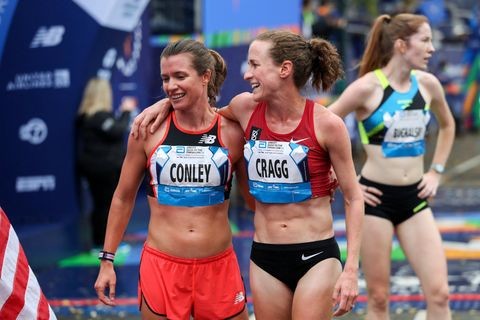
“I’m still around,” she told Runner’s World.
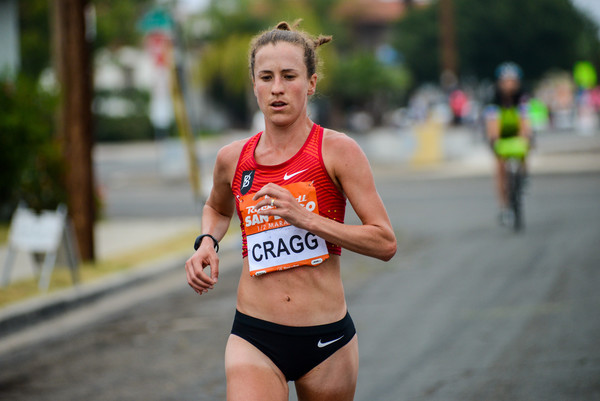
Cragg had a spectacular seven-month stretch between 2017 and 2018. In August 2017, she won the bronze medal at the world championships in London. The following February at the Tokyo Marathon, she finished third in 2:21:42. It was a a PR by almost six minutes, and the performance put her fifth on the U.S. all-time list.
She was announced as part of the Chicago Marathon field for 2018 but withdrew with an injury. In 2019, she raced only twice on the roads and both times the results were disappointing. She was seventh in 1:13:27 at the Prague Half Marathon in April, after previously hinting she might attempt to break Molly Huddle’s American record in the event (1:07:25). In August, she struggled at the Beach to Beacon 10K in Cape Elizabeth, Maine, finishing 14th in 34:40. After that, she withdrew from the 2019 Chicago Marathon.
“It was just overall fatigue,” Cragg said. “I think we just went too hard for too long. I ‘cooked myself’ is what I’ll say. Took some time off when we realized it wasn’t coming around for Chicago. Now I’m feeling a lot better and ready to go.”
Cragg said she went through a period of weeks when she felt tired and worn down, but then she would have glimmers of hope in strong workouts and think she needed to “keep plugging away.” After Beach to Beacon, she realized her fatigue was getting worse instead of better and decided she shouldn’t attempt Chicago.
She took a full three weeks with no running—and followed that up with about a month and a half of slowly building into full training again. At times, she worried her career was ending.
“You talk to any distance runner, you go through those ups and downs regularly,” she said. “It’s like you just can’t seem to get out of the slump. You don’t know whether to push harder or let go. I’ve been used to it over the years. But there was definitely still that fear that I might have overdone it; I’d hope it’s not undoable.”
by Sarah Lorge Butler
Login to leave a comment
2028 US Olympic Trials Marathon
Most countries around the world use a selection committee to choose their Olympic Team Members, but not the USA. Prior to 1968, a series of races were used to select the USA Olympic Marathon team, but beginning in 1968 the format was changed to a single race on a single day with the top three finishers selected to be part...
more...Eric Finan is dealing with a broken toe, heading for the 2020 Olympic trials
The injury is the result of a mountain bike incident, but it sounds like only a minor setback for his training to run the marathon in the 2020 Olympic trials in Atlanta, Georgia, on Feb. 29. He’s optimistic that he’ll soon be running 100 miles a week again.
Finan has made many major life decisions based on running, and when he runs at the trials on Leap Day, he’s accomplishing a goal that he once thought had disappeared years ago.
Before moving to Eugene in 2015, Finan attended University of Cincinnati because he wanted to pursue engineering while also running in a competitive collegiate conference. After graduating in 2012, he wanted to run in a post-collegiate group, but because he was injured during the last part of his fifth season, he says those running groups didn’t want him.
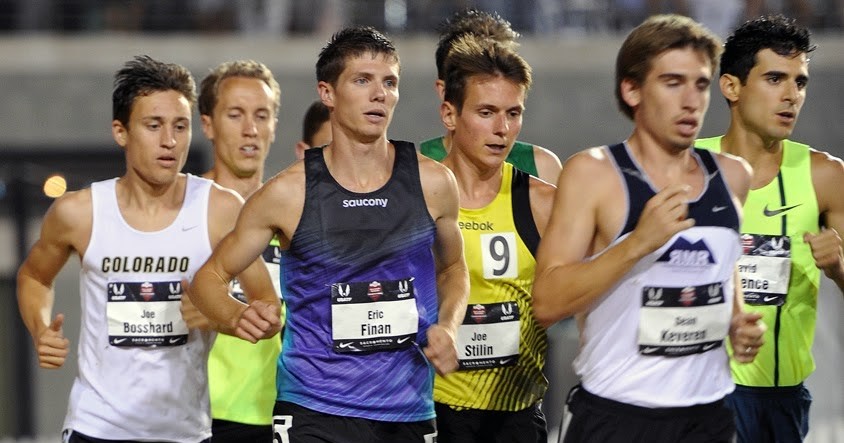
He worked in Cincinnati for a year and got healthy. In 2013, he ran the U.S. Half Marathon Championships in Minnesota, finishing in 1:04:42. He attracted the attention of Team USA Minnesota, so he moved to Minneapolis to run with the group.
But after again suffering some injuries from the higher-intensity philosophy of the coach there, Finan says he decided to run with Team Run Eugene, so he looked for work in the area.
Today, Finan is coached by Tim Sykes, who was a volunteer assistant coach at the University of Oregon before moving to Western Kentucky University for a full-time coaching job.
A self-described realist, Finan says he’s not expecting to make it in the top three on the U.S. team that would compete in Tokyo. Judging by the results from the 2012 Olympic trials in Houston, to make the team he’d need to finish under 2:10 — meaning he’d have to run a 5-minute pace.
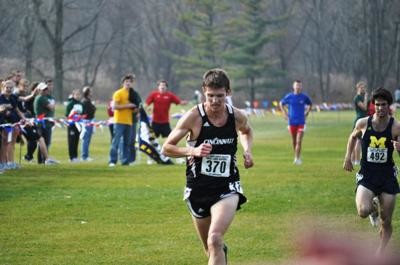
He’s setting the bar at a top-25 finish, but he’s not necessarily running the trials to make the team. It’s about completing promises he made to himself while in high school.
He set two life goals then: to run a 4-minute mile and run in the Olympic trials. He completed the first goal, but missed the second goal in 2016 by seven seconds and didn’t make the trials for the 5k event.
Finan says he was devastated that he didn’t make the trials. He didn’t run for a few months and drank and ate to excess.
“I had my mind set on the trials. I had my heart set, my body, my soul to compete in the Olympic trials,” he says. “I believed it in my entire being that this thing was going to be true.”
He adds that he took it as a given that he would be running in the trials and was already thinking about preparing himself for the actual race. “I was crushed, and I was definitely depressed,” he says about missing the cutoff time. “I felt like I had worked so hard — for what?”
After taking a few months off from running — the longest non-injury break he’d ever taken — he talked with some friends and hit the pavement running again. It was a rough first month back because he hadn’t treated his body well during that break, he says.
About 12 weeks of training later, thanks to a dedication to weight training and years of high-volume running, he made his marathon debut at California International Marathon in Sacramento, finishing at 2:17:51.
The result meant that he could — after missing trials in the 5k — satisfy that other running goal he established for himself. He returned to Sacramento in 2017, finishing the race at 2:16:42, qualifying to compete in the U.S. Olympic Trials.
by Henry Houston
Login to leave a comment
2028 US Olympic Trials Marathon
Most countries around the world use a selection committee to choose their Olympic Team Members, but not the USA. Prior to 1968, a series of races were used to select the USA Olympic Marathon team, but beginning in 1968 the format was changed to a single race on a single day with the top three finishers selected to be part...
more...After have had Open Heart Surgery, Erin Menefee Qualifies for Olympic Trials
Two and a half years ago, Erin Menefee didn’t know if she’d be able to run competitively again after having open heart surgery. But on December 8, the 27-year-old physical therapist realized her dream when she qualified for the 2020 U.S. Olympic Marathon Trials at the California International Marathon (CIM) in Sacramento with a time of 2:43:10.
Surrounded by dozens of other women who qualified for the first time, Menefee basked in the accomplishment of a goal that motivated her throughout the long recovery. For the first time since she underwent surgery for a rare congenital heart defect in July 2017, she ran a personal best by more than eight minutes.
Setting a lifetime PR that beat the Trials standard by almost two minutes wasn’t just a running milestone for the San Diego native—it was a turning point in her life.
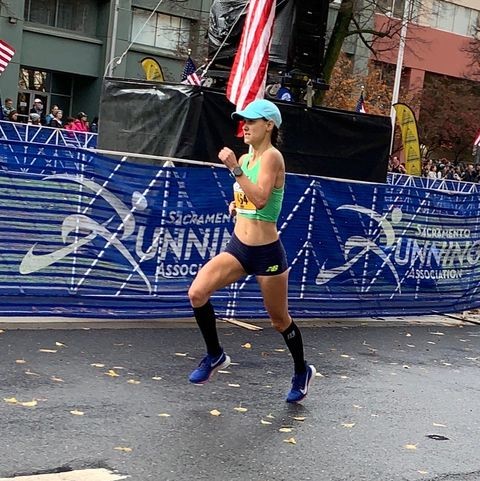
“Not having the definition of ‘post-heart surgery PR’ for this one just feels like a big weight [has been] lifted,” Menefee told Runner’s World. “I’m finally back to who I was before.”
Menefee was nearing the end of a long run in December 2015 when her heart started beating at an alarmingly fast pace and pain shot down her left arm. At just 24 years old, the former collegiate runner for the University of Arizona thought she was having a heart attack. Menefee could barely breathe, but she managed to get herself to the emergency room.
After a series of tests, her cardiologist discovered that she had partial anomalous pulmonary venous return, a condition where the veins that are supposed to carry blood to the heart’s upper left chamber instead carry it to the heart’s upper right chamber, or to other blood vessels. When this happens, poorly-oxygenated blood mixes with oxygen-rich blood, thus robbing the body of oxygen. The diagnosis meant that Menefee was only getting about 60 percent of the oxygen needed from her lungs to her body.
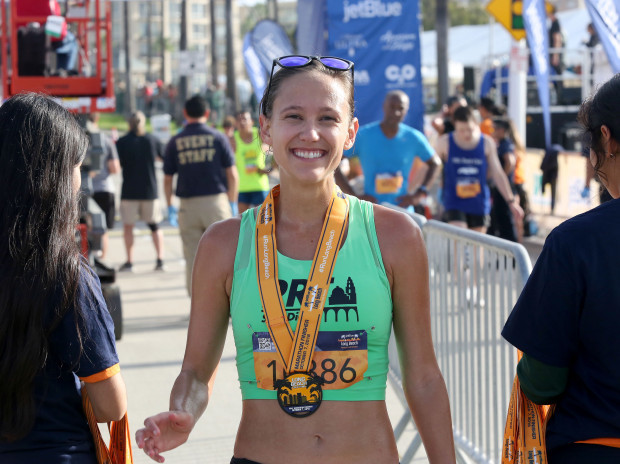
Because she was a healthy, young runner competing at a high level, the doctors decided to forgo the surgery option for periodic check-ups on the size of her heart. Eight months later, Menefee was getting lightheaded standing up from a chair and the tips of her fingers turned blue from the lack of oxygen traveling to the rest of her body. When she went in for more tests, they discovered that her heart was so enlarged that it required surgery.
On July 26, 2017—after she graduated from San Diego State University’s doctor of physical therapy program and days after she took her board exams—Menefee went in for surgery at Ronald Reagan UCLA Medical Center. During the nine-hour procedure, doctors built a stent and moved her vein into its proper place from her heart to her lung. In order to reach her organs, they had to saw open her sternum.
The surgery was a success, and six weeks later, Menefee was cleared to go on her first run: an 8:49 mile.
Just five months before her surgery, Menefee had made her 26.2 debut at the 2017 Los Angeles Marathon, finishing in 2:51:31—within striking distance of 2:45:00, the 2020 Trials time standard. She trained for the marathon with the San Diego-based Prado Racing Team under Paul Wellman.
by Taylor Dutch
Login to leave a comment
2028 US Olympic Trials Marathon
Most countries around the world use a selection committee to choose their Olympic Team Members, but not the USA. Prior to 1968, a series of races were used to select the USA Olympic Marathon team, but beginning in 1968 the format was changed to a single race on a single day with the top three finishers selected to be part...
more...Des Linden will race the U.S. Olympic Trials and the Boston Marathon in 2020
Des Linden was undecided whether to race the Feb. 29 U.S. Olympic Marathon Trials as recently as a month ago. But now Linden, the 2018 Boston Marathon winner, is not only committed to trials but also the April 20 Boston Marathon.
It would be, at 51 days, by far her shortest break between marathons, which has so far included 19 marathons dating to 2007. She’s 36 years old, and it may be her last Olympic cycle.
“I only have so many more chances at Boston. I love being there. Obviously, the Olympics [window] is closing down as well,” she said. “I like the trials and the competitive way we pick our team. I can’t imagine, at this point, watching either of those races and feeling like I had no effect on either outcome.”
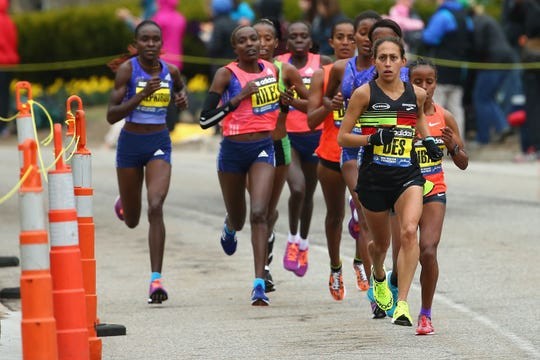
If Linden does make the Olympic marathon team — by placing top three at trials in Atlanta — she would be in line to race four marathons over a little more than nine months when including last month’s New York City Marathon.
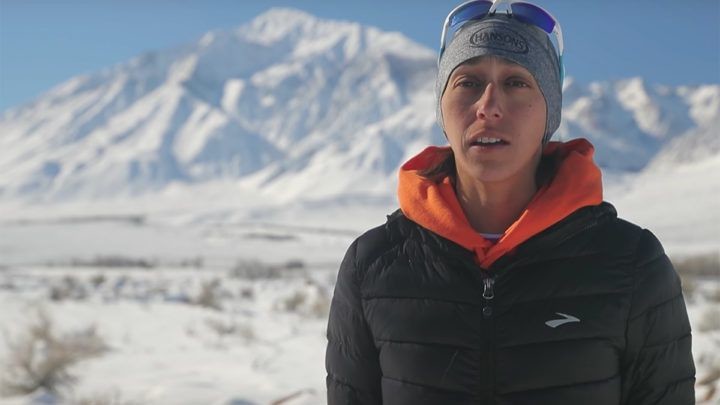
Ethiopian Lelisa Desisa and American Sara Hall ran the New York City Marathon on Nov. 3, 29 days and 35 days, respectively, after racing the world championships and Berlin Marathon. Neither finished New York, however.
This past August, when Linden committed to the New York City Marathon, she added that she might not race the trials. After her performance in New York — the top U.S. woman in sixth place — she decided she was ready for the trials-Boston double, which she had been considering since placing fifth at this past April’s Boston Marathon.
As far as how it will impact her trials build-up, Linden said her team will re-evaluate the process weekly. She hasn’t committed to a pre-trials half marathon.
“We’re obviously aware of what’s down the line, so we’re trying to get as much quality as we can without going too deep into the well,” she said. “It’s certainly going to be out there, but we’re trying to run well at both and not say, ‘This isn’t going well,’ and just train through it.”
Linden has been treating every marathon as if it could be her last. She has been incredibly consistent, placing no worse than eighth in her last 11 marathon starts dating to 2013.
Neither of Linden’s previous Olympic experiences was especially memorable. She dropped out of her first one in 2012 with a stress fracture in her femur. She was seventh in Rio, missing a medal by less than two minutes. The Kenyan-born gold and silver medalists were later busted for EPO and are serving lengthy doping bans.
“I don’t feel like I have anything to prove and anything unfinished,” at the Olympics, Linden said in August. “Quite frankly, the last experience is a hard sell to get back out there to try to compete for medals when you’re not even really sure what the field is all about. It’s a little bit difficult to be excited about that with the way we are about the [World Marathon] Majors. People investing in anti-doping have really been solving that problem [at the majors]. It’s a little tricky [at the Olympics], but certainly representing your country is special.”
Linden is the most experienced of a deep group of U.S. Olympic marathon hopefuls after the recent retirement of four-time Olympian Shalane Flanagan.
Login to leave a comment
2028 US Olympic Trials Marathon
Most countries around the world use a selection committee to choose their Olympic Team Members, but not the USA. Prior to 1968, a series of races were used to select the USA Olympic Marathon team, but beginning in 1968 the format was changed to a single race on a single day with the top three finishers selected to be part...
more...Gwen Jorgensen announces move to track for 2020
The 2020 US. Olympic Marathon Trials on Feb. 29 were marked on Gwen Jorgensen’s calendar since her Nov. 2017 announcement that she was leaving the triathlon to pursue running full time in hopes of winning the 2020 Olympic gold medal in the marathon.
But now, less than three months out from the event, Jorgensen announced that she will not run the U.S. Olympic Marathon Trials and instead focus on making the U.S. team for the Summer Games on the track in the 10,000 meters.
“It’s a multitude of emotions,” Jorgensen, 33, says. “I’m disappointed. At the same time, I’m also excited. I’m at a point where I’m running 70 miles per week and training is going well. I just know that if I went to the trials, running 70 miles per week, I’d be hoping that I made a team. That’s not what I want to do at an Olympic Trials.
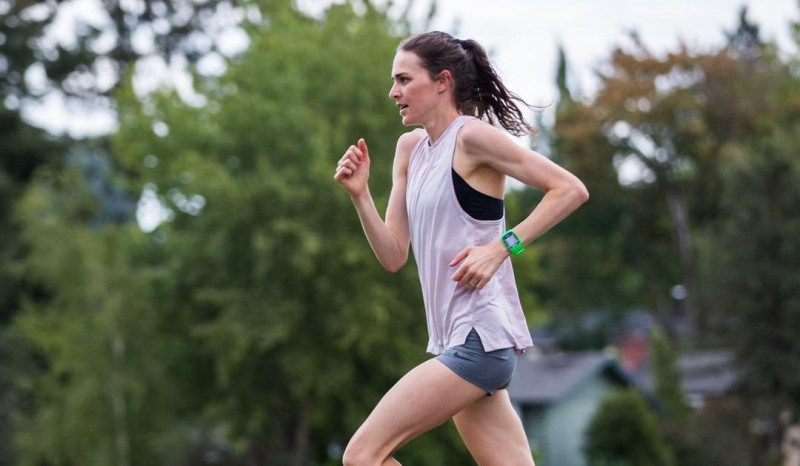
I want to go in confident and knowing that I have the ability to make a team. My goals in the marathon aren’t changing. My timeline is.”
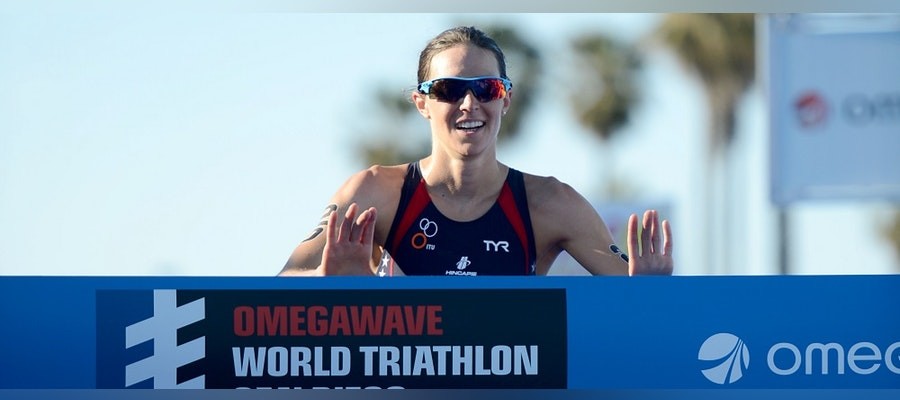
Heel surgery forced Jorgensen, who converted to distance running after winning the Rio Olympic triathlon, to pass up the Feb. 29 U.S. Olympic Marathon Trials and focus on the track and field trials in June in the 10,000m and, probably, the 5000m.
She made the decision after recent talks with her coach, Jerry Schumacher, following a difficult recovery from late May surgery to correct Haglund’s deformity.
“I could get bent out of shape and sad about it, but at the end of the day, I’m excited because I know this path that I’m on will not only be a successful route, but I also think it will lead to success long term in the marathon," she says. "I’m confident in my abilities on the track."
Jorgensen’s goal was a lofty one from the onset. No American woman has won gold in the marathon at the Olympics since Joan Benoit Samuelson’s victory in the 1984 inaugural running. The 2020 trials, where the top three finishers qualify for Tokyo, are shaping up to be one of the most competitive races of the year, as American women’s distance running is at its highest level with recent World Marathon Major victories by Shalane Flanagan at the 2017 New York City Marathon and Desiree Linden at the 2018 Boston Marathon.
Even after giving birth to her son Stanley in Aug. 2017, Jorgensen could have returned to the triathlon and arguably been a contender to become the first woman to win back-to-back Olympic gold medals. But she and her family decided to move to Portland, Ore., and once settled there, Jorgensen signed a professional running contract with Nike and joined the Bowerman Track Club.
Jorgensen worked her way to the marathon by racing on the track in the spring of 2018 and ran a few U.S.A. Track and Field road race championships. She says her training went well, nailing all but one workout in 12 weeks. But in the three days before she was set to compete in the Chicago Marathon, Jorgesen battled a fever and underestimated the effects of running while sick. She finished in a disappointing 2:36:23 in her professional marathon debut.
Now fully healed, healthy and recovered, Jorgensen is working her way back to train with her Bowerman teammates. Her day sometimes includes a hill sprints, a track workout, pelvic floor therapist treatment, physical therapy exercises for her achilles and then an evening workout before returning to her family.
“I think it’s important not to be afraid when you need to admit that your goal needs to change,” Jorgensen says. “I’m not going to say that I’m failing because I still want to have my marathon goals, but the timeline has changed. It’s still important to have big goals and to share those goals. It holds everyone accountable.”
by Chris Cahvez
Login to leave a comment
2028 US Olympic Trials Marathon
Most countries around the world use a selection committee to choose their Olympic Team Members, but not the USA. Prior to 1968, a series of races were used to select the USA Olympic Marathon team, but beginning in 1968 the format was changed to a single race on a single day with the top three finishers selected to be part...
more...Meredith Tribble, a Davis graduated qualifies for Olympic Trials in women's marathon
Meredith Tribble sets no limits on her demanding lifestyle. Married and mother of two young children, a full-time job, involved in her church, and all with the years steadily creeping up.
There’s room in there for more, she felt, as long as the day starts a little earlier.
So before 5 o’clock most mornings, the former Davis standout heads out her front door to run in the dark. The sun will rise at some point, maybe halfway through a hard 14-mile tempo run, but she’ll be back home in time to get the rest of the family up and going.

It’s out there on the trails and roads in the small hours of the day that Tribble found her purest form of joy in running. It’s worth it, she believes, to add this challenge on top of so many others because of the rewards to be found.
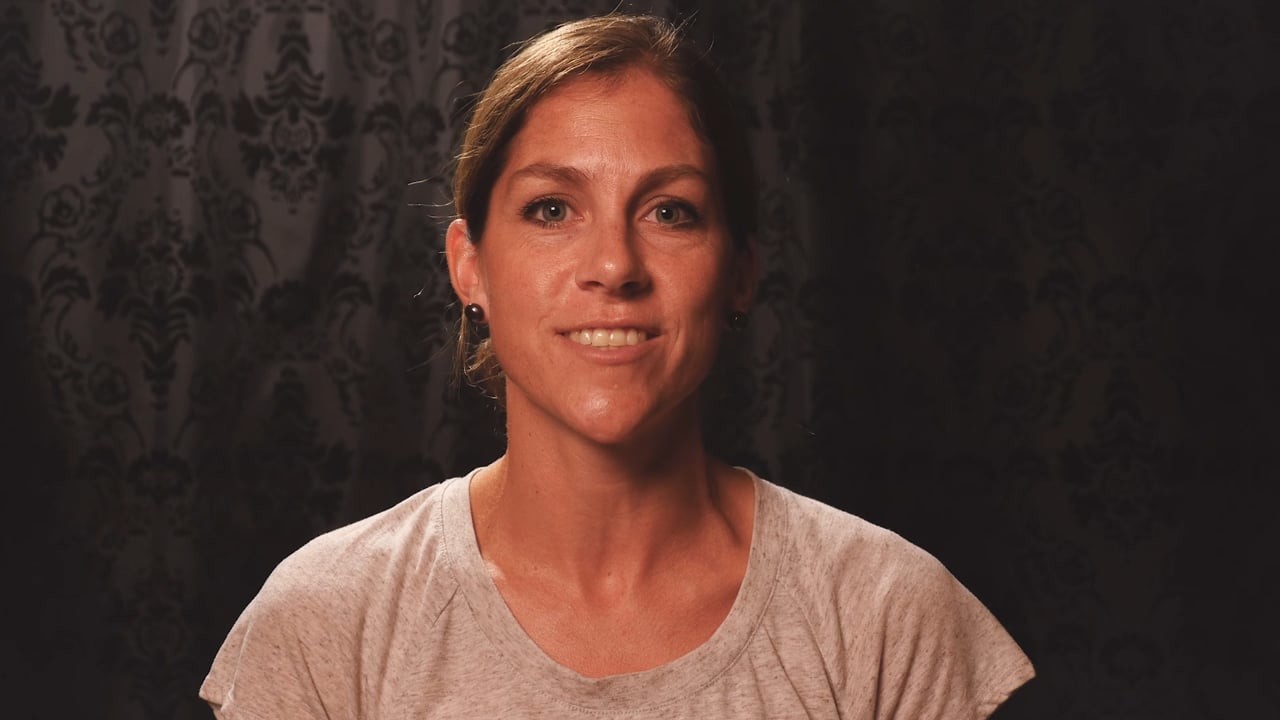
In just her third marathon last month, Tribble qualified for the U.S. Olympic Trials next year, winning her age group while placing ninth overall at the Indianapolis Marathon with a time of 2 hours, 42 minutes, 41 seconds.
“It was a goal and I’m just so proud of accomplishing it,” she said from her home in Riverside, Calif. “It wasn’t so much the time that motivated me but the drive to push myself to new limits. Just to power through physically, emotionally and mentally. It was very much a spirit-led journey.”
In her debut effort, just to test the legs at the 26.2-mile distance, Meredith ran 2:58 in early spring of 2018. That was easy enough, so she ramped up training and three months later she clocked 2:45:19, just missing the Trials standard by 19 seconds.
Meredith did, however, qualify for the USATF Marathon Championships in Sacramento in early December. Her fitness was solid, as evidenced by a 1:15 half marathon in October, but on the day of the race she backed out feeling ill. She soon discovered she was pregnant, but less than a month later she miscarried.
“Emotionally it was a very difficult time,” she said. “I had to give my body a long time to recover.”
The next step comes on Feb. 29 when Meredith will join the fastest women’s marathoners in the country in Atlanta for the U.S. Olympic Trials. At the front, this race will determine the three qualifiers for the 2020 Summer Olympics in Tokyo. For the rest, as with the men on the same day, it’s an opportunity to compete in what is essentially a national championship.
by Scott Spruill
Login to leave a comment
2028 US Olympic Trials Marathon
Most countries around the world use a selection committee to choose their Olympic Team Members, but not the USA. Prior to 1968, a series of races were used to select the USA Olympic Marathon team, but beginning in 1968 the format was changed to a single race on a single day with the top three finishers selected to be part...
more...Jordan Hasay says she is going to be ready for the US Olympic Trials after making some changes
Jordan Hasay went into the Chicago Marathon on October 13 in excellent shape, hoping to make a run at the American record in the distance. But about two miles into the race, she tore her left hamstring. She limped past the 5K mark in 22 minutes before dropping out of the race.It was the bitter end of a tumultuous two weeks.
On September 30, her longtime coach, Alberto Salazar, was hit with a four-year ban from track and field for anti-doping violations. Hasay, 28, said she never witnessed anything improper in her time with Salazar and his team, the Nike Oregon Project. On October 11, Nike shut down the Oregon Project, leaving the athletes who had trained with Salazar to work out new coaching and training situations.
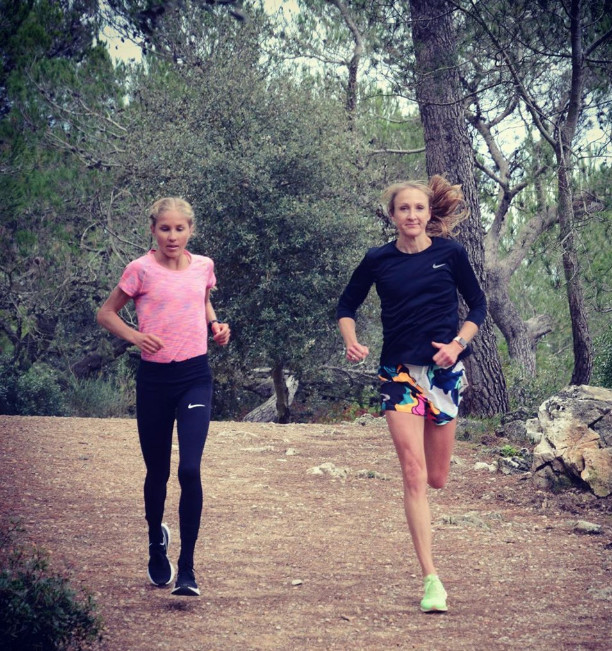
The timing of Hasay’s injury and the coaching upheaval were not ideal: American marathoners are preparing for the Olympic Marathon Trials on February 29, 2020 in Atlanta.
The upheaval has continued this month: On November 7, in an explosive opinion video in The New York Times, Mary Cain, a former teen prodigy who trained with Hasay and others at the Oregon Project, alleged she was “emotionally and physically abused” in her time with Salazar.
On a recent trip to Monaco, she formalized a relationship with Radcliffe to be her “mentor-coach.” Radcliffe held the world record in the women’s marathon, 2:15:25, for 16 years. The record fell last month to Brigid Kosgei, who ran 2:14:04, at the Chicago Marathon, where Hasay dropped out.
Hasay has long admired Radcliffe. As Hasay was training for her first marathon, Boston in 2017, her late mother used to call Hasay by the pet name “Paula.” Radcliffe and Hasay first met at the 2017 Chicago Marathon, where Hasay ran 2:20:57 and became the second-fastest American marathoner behind Deena Kastor. Hasay and Radcliffe have kept in touch since then.
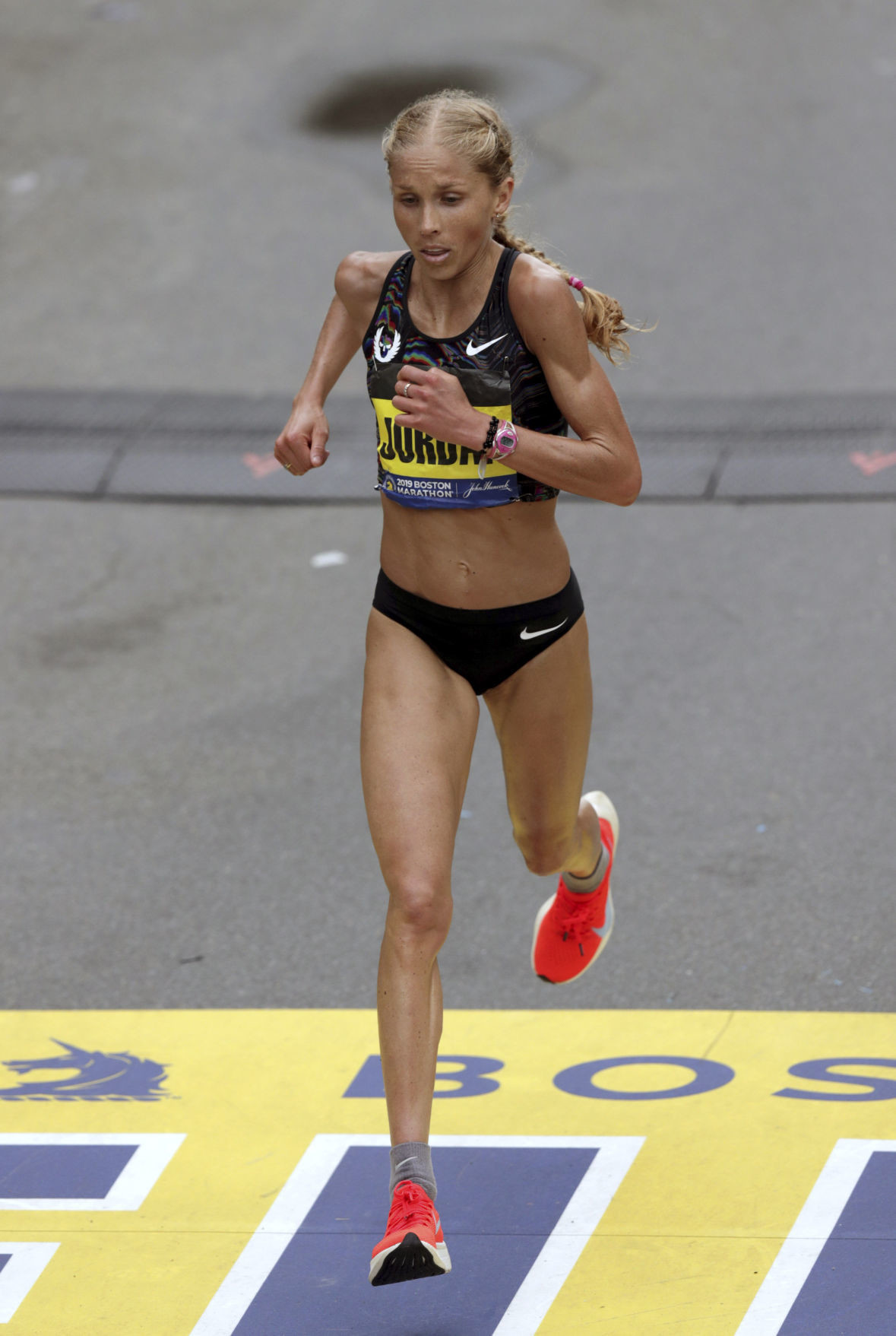
Last week, together in Monaco, they sat down and mapped out Hasay’s training for the next 15 weeks until the Trials. Hasay said she believes she’s the first athlete to be coached by Radcliffe and specified that Radcliffe, and not her husband, Gary Lough, who oversees the training of Mo Farah, will be in charge.
Hasay will stay in California and communicate remotely with Radcliffe. “I’ve always really looked up to her as a role model,” Hasay said. “Since we first met two years ago in Chicago, we’ve kept in touch and she’s given me a lot of advice. She knows that I have had some very good coaches in the past. We’re not going to go in and change a bunch of things. At this point, I mainly need someone to hold me back and make sure I stay injury free. She’s such a kind person.”
After two weeks off from running after the Chicago Marathon, Hasay has returned to running almost pain free, she said, although the hamstring feels tight at faster speeds. On November 19, she did a hill workout.
Hasay said Nike staff were “incredibly supportive” of her as she considered new coaches, and they were open to her having a coach who didn’t have a relationship with the company if that is what she wanted. Radcliffe, though, was a Nike-sponsored athlete throughout her career and maintains a relationship with the company.
She is in the process of selling her home in Beaverton, Oregon, near Nike headquarters, and she will live with her father in Arroyo Grande, California, until she eventually buys a home in that area. She is more suited to the climate there, she said, where it is sunny and warm year-round, than the rainy winters of the Pacific Northwest. She also said the community has supported her since she began running at age 12. Being home “will add a lot of happiness,” she said.
When asked about Cain, Hasay said she knew her teammate was struggling during her 10 months training in Portland with the Oregon Project, but she didn’t know the extent of the problems.
“I was pretty shocked with the video,” Hasay said. “Obviously I feel really sad and I texted her and said I’m really sorry. That if I knew that it was that bad, if there was anything I could have done, I just apologize.”
Hasay said she and Cain were fairly close but she had “no idea” that Cain was cutting herself, as she said in the Times video. Cain also said Salazar was constantly trying to get her to lose weight to hit an arbitrary number, 114 pounds.
Hasay said she thought Cain’s youth and the intensity of the training and the program were a poor combination, but she expressed sympathy for both Cain and Salazar.
“It’s so sad, everyone was trying their best, though,” she said. “I really think you can’t point fingers and it’s really easy from the outside to kick Alberto under the bus. People make mistakes. He could have handled it at times differently. He really was doing his best. He wasn’t trying to cause any of the problems that she described. I sympathize with both sides.
“That’s why it’s hard—I haven’t commented on it—I don’t really have a side. I didn’t experience what she experienced, but I can see how it was so difficult. I think that her message is a good one, addressing these issues, they are important, I think it’s good overall that we’re looking at some of things.”
Hasay continued that when an athlete is still growing and going through puberty, getting to a certain weight is “difficult.” Older athletes on the team, she said, were able to push back in discussions with Salazar on weight.
“Alberto, if you ask me is he obsessed about weight? Yes, but he’s obsessed about everything,” she said. “He wanted to cut my hair [to reduce drag], he wanted me to wear a wetsuit in the Boston Marathon. It’s just every little detail is covered and weight happens to be one of those things.”
Salazar told Hasay she needed to gain weight at times. “He’s told me, ‘You don’t need to be this lean all year. I’d like you to go back up.’ We’ve had discussions. I think when you’re older and more experienced, you can speak up. It’s hard when she’s so young and still growing. It was just the whole situation wasn’t the right fit, unfortunately.”
by Runner’s World
Login to leave a comment
2028 US Olympic Trials Marathon
Most countries around the world use a selection committee to choose their Olympic Team Members, but not the USA. Prior to 1968, a series of races were used to select the USA Olympic Marathon team, but beginning in 1968 the format was changed to a single race on a single day with the top three finishers selected to be part...
more...Next stop for Jared Ward is the the U.S. Marathon Trials in February
Jared Ward has been working on his confidence lately. He figures that’s an important part of improving his marathon game, good as it already is. His resume includes a sixth in the 2016 Rio Olympic Marathon, sixth at New York City last year, PR of 2:09:25 at Boston this spring.
To compete with the big boys … well, you gotta be there at halfway, hold on until 20 miles, and then bring it home. In Sunday’s 2019 TCS New York City Marathon, Ward got to 20 miles with the leaders. Then he had to deal with the effects.
“I was glad that I managed to put myself in there for so long, but the last three or four miles were really tough,” he said after finishing sixth in 2:10:45. “That was painful. There wasn’t much left in the tank. It’s scary to do something you haven’t done before. But if you want to get to the podium, that’s the only way.”
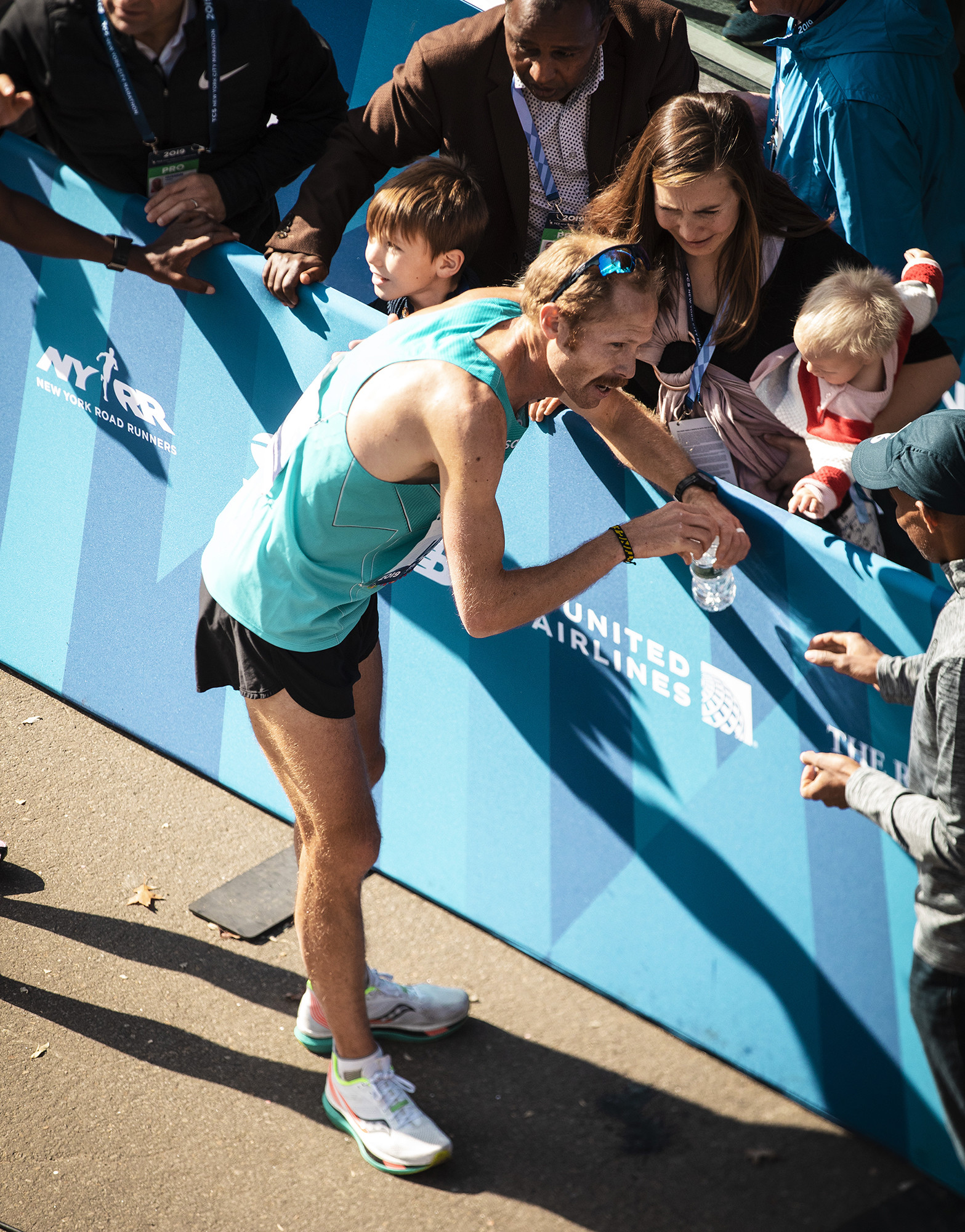
Ward had finished sixth the previous year also, in 2:12:24, almost two minutes slower than today.
“I’m happy,” he said. “I wanted something that would solidify my breakthrough in Boston. I wanted to convince myself that I’ll be a different runner in the Marathon Trials in February than I was four years ago in Los Angeles.” Ward finished surprise third in Los Angeles and made the U.S. Olympic team for Rio.
The NYC Marathon does not use pacesetters, and a victory is much more important than your time (notwithstanding time-bonuses that kick in at 2:09:59 and faster), so the early pace in recent years has been moderate. Today, Shura Kitata started with a ludicrous 5:02 first mile on the uphill side of the Verrazzano-Narrows Bridge.
“The pace had been ebbing and flowing,” Ward observed. “I’d feel good one mile and not so good the next. When that happens, you just have to trust that you’ll feel better in a mile or two. Then they surged again and just didn’t come back.”

In Ward’s next marathon, the U.S. Trials on February 29 in Atlanta, he won’t be the one chasing everyone else. Indeed, many eyes will be on him—everyone’s number-one pick to finish in the top three—and many of his competitors will be gauging their pace against his.
“I don’t consider myself the favorite for Atlanta,” he said, “but I’m a statistician and I tend to make odds on races. Before the Los Angeles Trials, I figured I had a 35 percent chance of making the team. I think my odds will be a little better in Atlanta.”
by Amby Burfoot
Login to leave a comment
2028 US Olympic Trials Marathon
Most countries around the world use a selection committee to choose their Olympic Team Members, but not the USA. Prior to 1968, a series of races were used to select the USA Olympic Marathon team, but beginning in 1968 the format was changed to a single race on a single day with the top three finishers selected to be part...
more...2020 U.S. Olympic Team Trials Marathon, registration now open
Qualified athletes may now register for the 2020 U.S. Olympic Team Trials – Marathon, to be held on February 29 in Atlanta, Georgia, USATF and Atlanta Track Club announced today.
Registration closes January 22, 2020 at 11:59 p.m. PT.
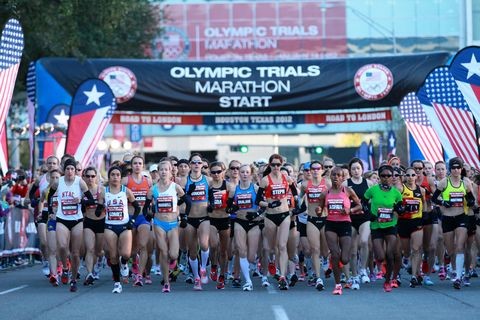
About Atlanta Track Club .- Atlanta Track Club is a nonprofit committed to creating an active and healthy Atlanta. Through running and walking, Atlanta Track Club motivates, inspires and engages the community to enjoy a healthier lifestyle.
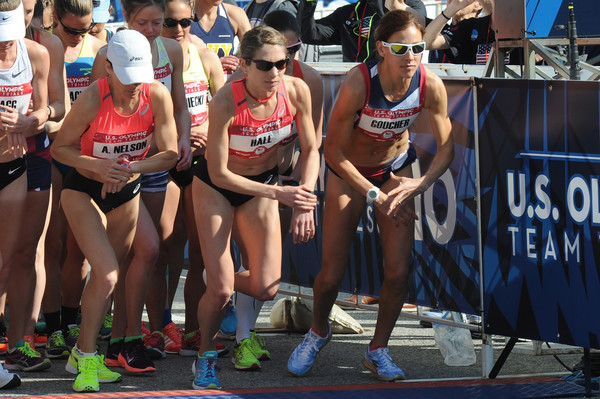
With more than 30,000 members, Atlanta Track Club is the second largest running organization in the United States. In addition to the AJC Peachtree Road Race (peachtreeroadrace.org) – the largest 10K running event in the world, the Publix Atlanta Marathon, PNC Atlanta 10 Miler and Invesco QQQ Thanksgiving Day Half Marathon, Atlanta Track Club directs more than 30 events per year.
Through the support of its members and volunteers, Atlanta Track Club also maintains a number of community initiatives including organizing and promoting the Kilometer Kids youth running program to metro Atlanta youth, honoring high school cross country and track and field athletes through Atlanta Track Club’s All-Metro Banquets and supporting the Grady Bicycle EMT program.
Login to leave a comment
2028 US Olympic Trials Marathon
Most countries around the world use a selection committee to choose their Olympic Team Members, but not the USA. Prior to 1968, a series of races were used to select the USA Olympic Marathon team, but beginning in 1968 the format was changed to a single race on a single day with the top three finishers selected to be part...
more...Course Adjustments Announced For The 2020 US Olympic Marathon Trials
With record participation expected and after receiving feedback from America’s best marathoners and coaches, Atlanta Track Club and USATF announced adjustments to the 2020 U.S. Olympic Team Trials Marathon course. The race organizers will replace a previously planned six-mile-loop with an eight-mile-loop which the athletes will run three times. This change will decrease the number of turns and reduce overall elevation gain on the course.
The updated course utilizes an additional mile of Peachtree Street in the heart of Atlanta. Competitors will begin their race in front of Centennial Olympic Park – the crown jewel of the 1996 Atlanta Games – and head down Marietta Street toward Peachtree. They will proceed three miles north on Peachtree until they pass the intersection of Peachtree and West Peachtree, then turn around and head back down Peachtree in the opposite direction, loop through Atlanta’s Old Fourth Ward neighborhood and return to downtown.
The runners will complete this loop nearly three times before diverting to a three mile final loop that runs under the Rings and Torch structure from the 1996 Atlanta Olympics, goes by the Georgia Capitol building and passes by the sports stadiums that house the Atlanta Falcons, Atlanta Hawks and Atlanta United FC. They will then reach the welcome sight of the finish line inside Centennial Olympic Park.
Eliminated was a loop around the Margaret Mitchell House and onto 10th Street, which included four turns on narrow roads in the span of less than one tenth of a mile.
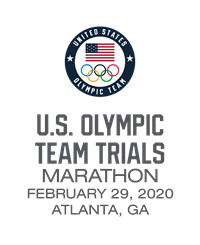
The 2020 U.S. Olympic Team Trials – Marathon will be held in Atlanta on Saturday, February 29, 2020 as part of America’s Marathon Weekend. The top three women and top three men will be selected to the team that will compete in the Olympic Marathon in Tokyo next August. Spectators are invited to enjoy the race for free along the route. The race will also be broadcast nationally live on NBC.
Login to leave a comment
2028 US Olympic Trials Marathon
Most countries around the world use a selection committee to choose their Olympic Team Members, but not the USA. Prior to 1968, a series of races were used to select the USA Olympic Marathon team, but beginning in 1968 the format was changed to a single race on a single day with the top three finishers selected to be part...
more...Anthropology Professor Gabrielle Russo is training for the 2020 US Olympic Marathon Trial
Gabrielle Russo, Stony Brook University Assistant Professor of Anthropology is not just training any marathon, she’s training for the 2020 US Olympic Marathon Trials.
To compete at the trials, runners must meet a qualifying time standard of 2:45. Russo earned her way with a qualifying time of 2:44:51 at the Philadelphia marathon in November 2018 – keeping her dream alive by a scant nine seconds. Only a few hundred women in the entire nation will compete for these three spots; earning the golden Olympic Trials Qualifying ticket is considered an honor in itself.
So far her Olympic Trials quest has been a two-year affair with marathons that began when she completed the Long Island Marathon in May of 2017. Under the coaching of Tommy Nettuno, it’s a quest that will continue until at least February, when the qualifying race takes place in Atlanta on Leap Year Day, February 29, 2020.
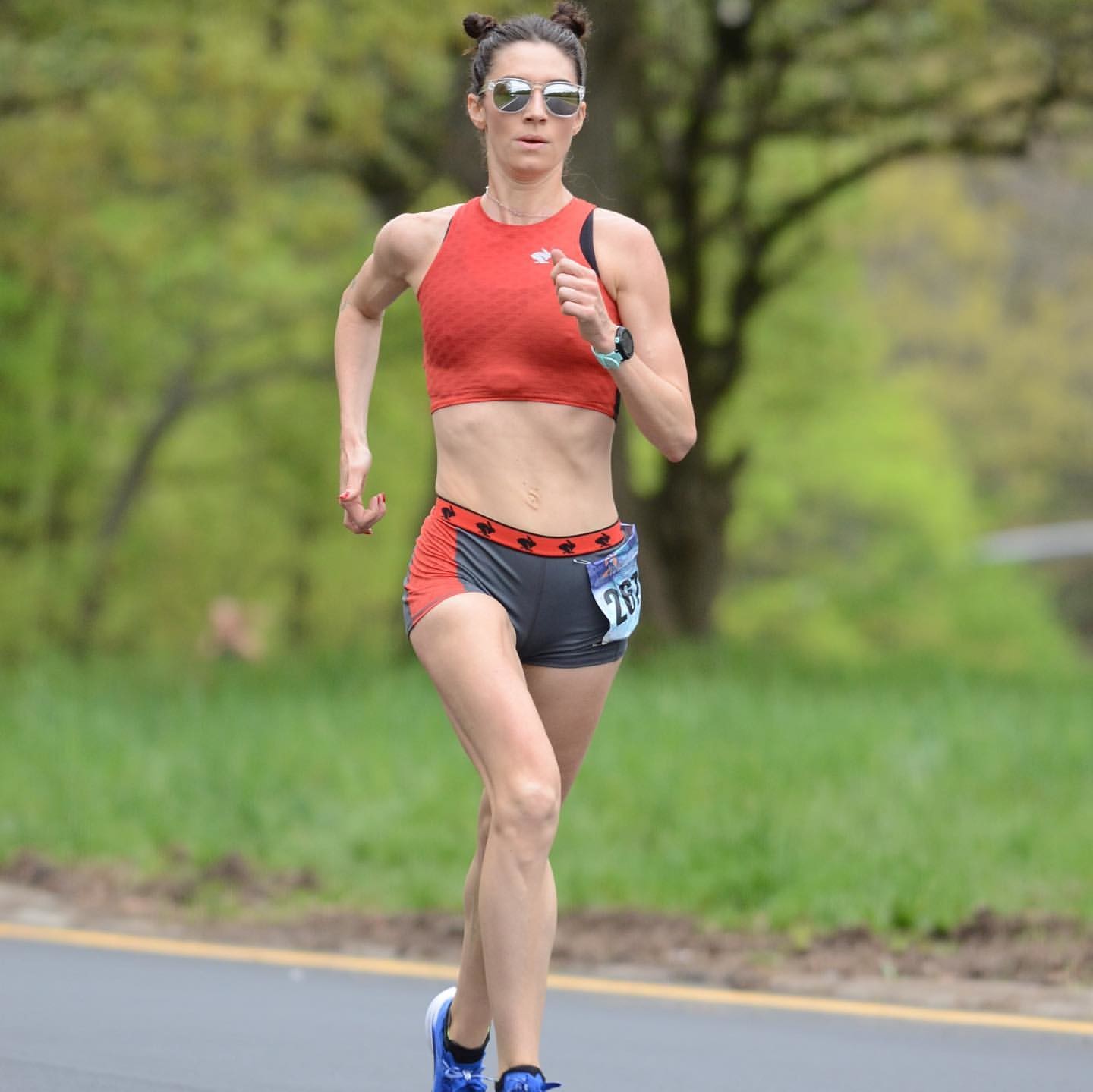
Although somewhat new to marathon racing, Russo’s running story actually began as a high schooler in East Stroudsburg, PA, where she was a sprinter and hurdler – and good enough to still hold some local records and a spot in her high school’s Athletic Hall of Fame. She continued her passion at Dickinson College where she ran both track and cross country, and where she would take the class that would open the door to her future career.
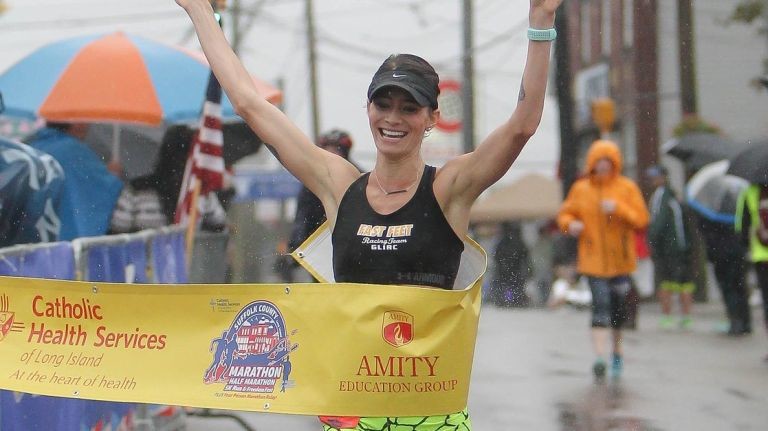
“I always had an interest in anatomy,” said Russo. “Sophomore year I found my way into an Introduction to Biological Anthropology class and that was it — from that point on there was no plan B.”
Though it set her on the path to what would become her career, the epiphany would also take her off the road. Russo would take nearly a decade off from running as she pursued graduate school, earning her PhD at the University of Texas at Austin in 2013, completing two post-doctoral positions, and then joining the Stony Brook faculty in the Fall 2014 semester. She initially lived in bustling Manhattan and then Queens, but eventually moved to the more open spaces of Long Island. Once there, she quickly joined the nearby Sayville Running Club and dusted off her running shoes.
“Running is almost spiritual to me, it gives my life something that nothing else can,” she said. “It can also be a form of relaxation and meditation, which certainly served me well through my first year in a tenure-track position.”
Seeking to push herself even further, Russo began competing in ultramarathons – which are any races longer than a typical 26.2-mile marathon. She would eventually complete a 50-mile ultramarathon (the JFK 50), finishing sixth overall in the women’s division. It was after that remarkable achievement that she set her sights on the 2020 Olympic Trials and earned a spot on her running team, Rabbit. Her training as a scientist would come to play an important role.
Login to leave a comment
2028 US Olympic Trials Marathon
Most countries around the world use a selection committee to choose their Olympic Team Members, but not the USA. Prior to 1968, a series of races were used to select the USA Olympic Marathon team, but beginning in 1968 the format was changed to a single race on a single day with the top three finishers selected to be part...
more...Tracy Guerrette, will continue her quest for an Olympic Trials berth while pursuing theology degree
Tracy Guerrette, finally recovered from a fractured bone in her foot, continues her quest to qualify for the U.S. Olympic Marathon trials scheduled for Feb. 29, 2020, in Atlanta.
But the St. Agatha native won’t be training in the streets of Bangor much longer.
The former two-year basketball captain at the University of Maine is leaving her job as the director of faith formation at St. Paul the Apostle Parish in Bangor. She plans to pursue a master’s degree in theology at the Pontifical John Paul II Institute for Studies on Marriage and Family at The Catholic University of America in Washington, D.C.
“It is something I have been thinking about for a real long time, since my early 20s actually, but I never had a chance to do it,” the 38-year-old Guerrette said. “In the past couple of years, I’ve been considering it more seriously. I’d been praying about it and thought it was a good time to apply.”
She said she was accepted to a couple of schools and chose the Pontifical John Paul II Institute. She is enrolled in a two-year program.
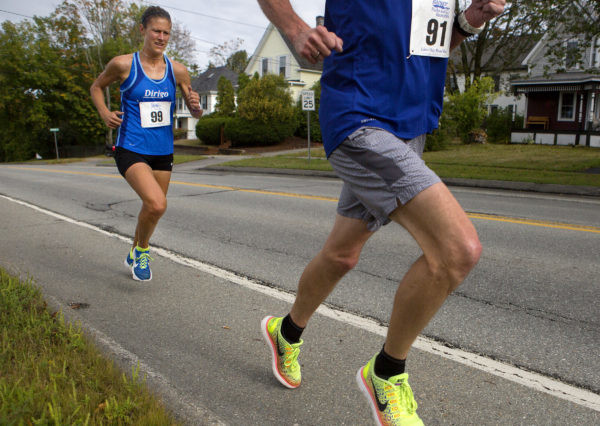
“I feel like I needed to take a step back. It’s almost like a professional sabbatical. I want to study to better myself in my faith,” Guerrette said.
She feels it will help her better serve the Lord and the Catholic Church. It will also give her a variety of career options after she completes her degree.
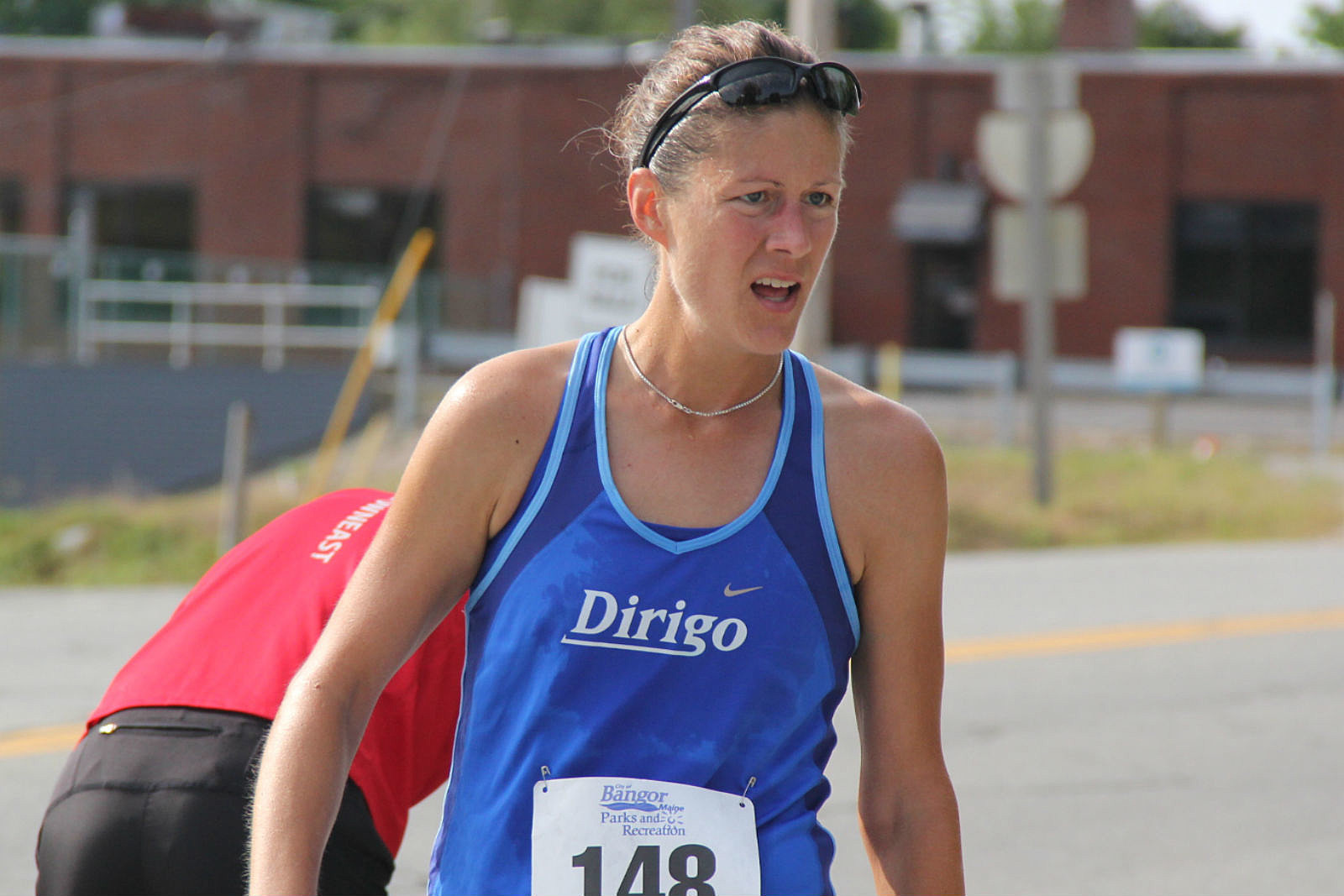
“I could continue to go to school, I could come back and work for a parish or a diocese or I could teach,” Guerrette said.
“My most prized possessions besides my running shoes are my theology books. But I haven’t had time to read them all because of my work, which is also a blessing,” Guerrette said.
Her degree study will focus on society and the current culture, and she said it will help prepare her to make a difference in people’s lives.
by Larry Mahoney
Login to leave a comment
2028 US Olympic Trials Marathon
Most countries around the world use a selection committee to choose their Olympic Team Members, but not the USA. Prior to 1968, a series of races were used to select the USA Olympic Marathon team, but beginning in 1968 the format was changed to a single race on a single day with the top three finishers selected to be part...
more...With Her Family Behind Her, 48-Year-Old Virginia Mom Qualifies for Olympic Trials
Sarah Bishop’s running career began just a few year ago when she set a goal to run for 30 minutes a few times a week. Now, she’s preparing for the Olympic trials marathon.
The Fairfax, Virginia, resident won the Marine Corps Marathon in October, and then qualified for the Olympic trials at CIM in December. But it all started a few years ago with short runs squeezed in between work and taking care of her four young daughters, all of whom are currently under the age of 8.
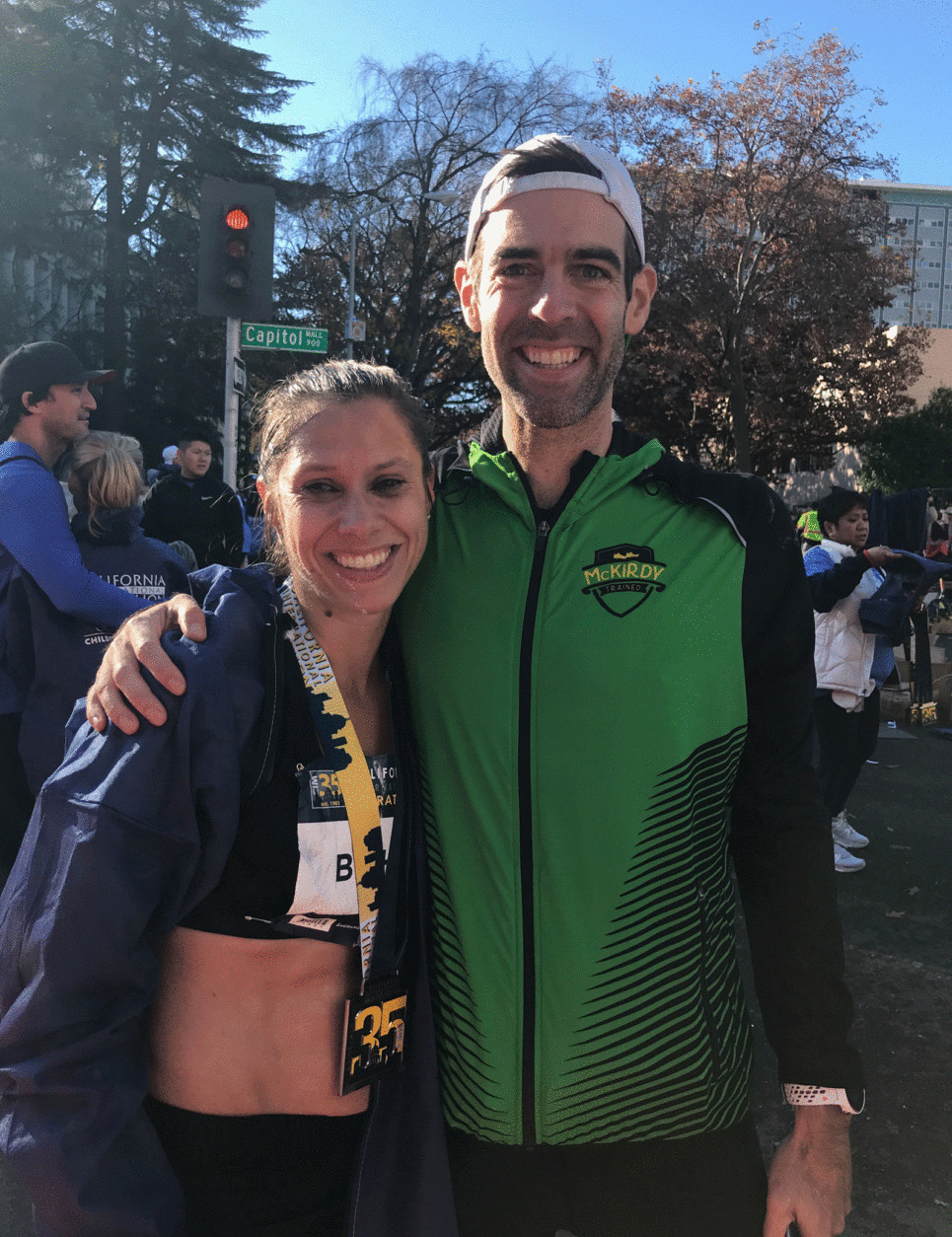
“When I started running just three years ago, there was no goal to even run a marathon,” she said.
Bishop, 35, ran track at Auburn University and during her time in the Air Force, but found herself in a situation where she “literally didn’t run for 10 years.”
She reintroduced running to make time for herself in her hectic life with a full-time job and growing family. She aimed to start with a 30-minute jog a few times a week; it evolved into running an hour, and then doing that more frequently. Eventually running “snowballed into more than a hobby,” she said.
And the hobby gave way to purpose, too.
“When you’re so absorbed your family and working full time and raising kids, you kind of lose a little bit of your identity. I needed to find something for myself that could make me feel like me again, which would help make me a better wife and a better mother.”
James McKirdy, Bishop’s coach, said while she is a world-class athlete, motherhood is an achievement she is most proud of.
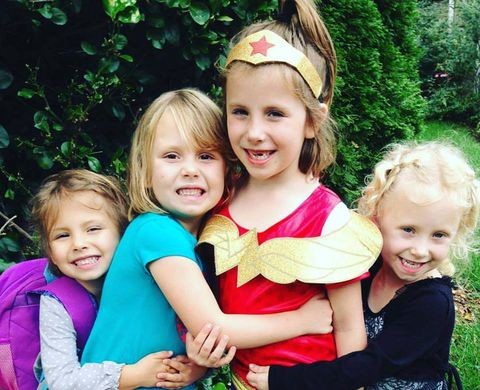
“Her pictures are not about her running — most of her pictures are of her family,” he said. ” … Yeah she runs fast, and that’s great, but she’s a mom and a wife first.”
Qualifying for the Olympic trials has long been a dream for Bishop.
Bishop didn’t commit to running Marine Corps Marathon until nine days before the October race, reasoning she’d use the experience as a training run for the December California International Marathon. But on race day, she knew she was gearing up for a great run.
“I was standing on the start line and I was feeling like a million dollars and it was one of those days where I knew I was going to have the race of my life,” she said of the race where she went on to place as the first female finisher.
While Marine Corps win was wonderful, Bishop was just shy of making the 2:45 cutoff for the Olympic trials. She went to the California International Marathon with fierce focus on her goal to qualify for the trials, she said.
“I knew coming in to this race I was in shape to do it. I knew it was my shot.”
Bishop went on to finish the race in 2:42:46, snatching up one of the about 200 Olympic trial qualification spots — the cherry on top of what she calls a “fairy tale season.”
Login to leave a comment
2028 US Olympic Trials Marathon
Most countries around the world use a selection committee to choose their Olympic Team Members, but not the USA. Prior to 1968, a series of races were used to select the USA Olympic Marathon team, but beginning in 1968 the format was changed to a single race on a single day with the top three finishers selected to be part...
more...USA Olympic Trials Marathon has achieved the IAAF Gold Label Status
USA Track & Field (USATF) announced today that the 2020 USA Olympic Trials Marathon, scheduled for February 29, in Atlanta, has been granted IAAF Gold Label status. That's a critical development because it means that the top-5 male and female finishers will automatically achieve 2020 Olympic Games qualifying marks, regardless of their finish times. As part of the Tokyo Olympic Games qualifying program unveiled by the International Association of Athletics Federations earlier this year, top-5 finishers at Gold Label marathons are given automatic Olympic Games qualifiers. As such, the six-athlete USA Olympic team in the marathon can be named with certainty on the day of the Trials with the top-3 male and female finishers nominated for the team.
In a press release, USATF said that "the announcement of the Tokyo 2020 Qualification System in March presented challenges to USATF and its partners as planning for marathon trials had begun well before the changes to the qualification system were announced." Those partners include the not-for-profit Atlanta Track Club, which will host the Trials, as well as NBC the network which will broadcast them. The Trials would be devalued for both of these parties if the team could not be named that day.
Right now only a handful of USA athletes have achieved the Olympic Games qualifying standards (2:11:30 for men and 2:29:30 for women since January 1, 2019). On the men's side, there are only two, Scott Fauble and Jared Ward who ran 2:09:09 and 2:09:25, respectively, at last April's Boston Marathon (they also finished in the top-10, which also confers qualifying status at any Abbott World Marathon Majors event). On the women's side there are nine: Emily Sisson (2:23:08), Jordan Hasay (2:25:20), Kellyn Taylor (2:26:27), Molly Huddle (2:26:33), Aliphine Tuliamuk (2:26:50), Des Linden (2:27:00), Nell Rojas (2:28:06), Roberta Groner (2:29:09), and Lindsay Flanagan (2:30:07/9th place at Boston). Those athletes lose the relative advantage of having a qualifying mark in advance of the race.
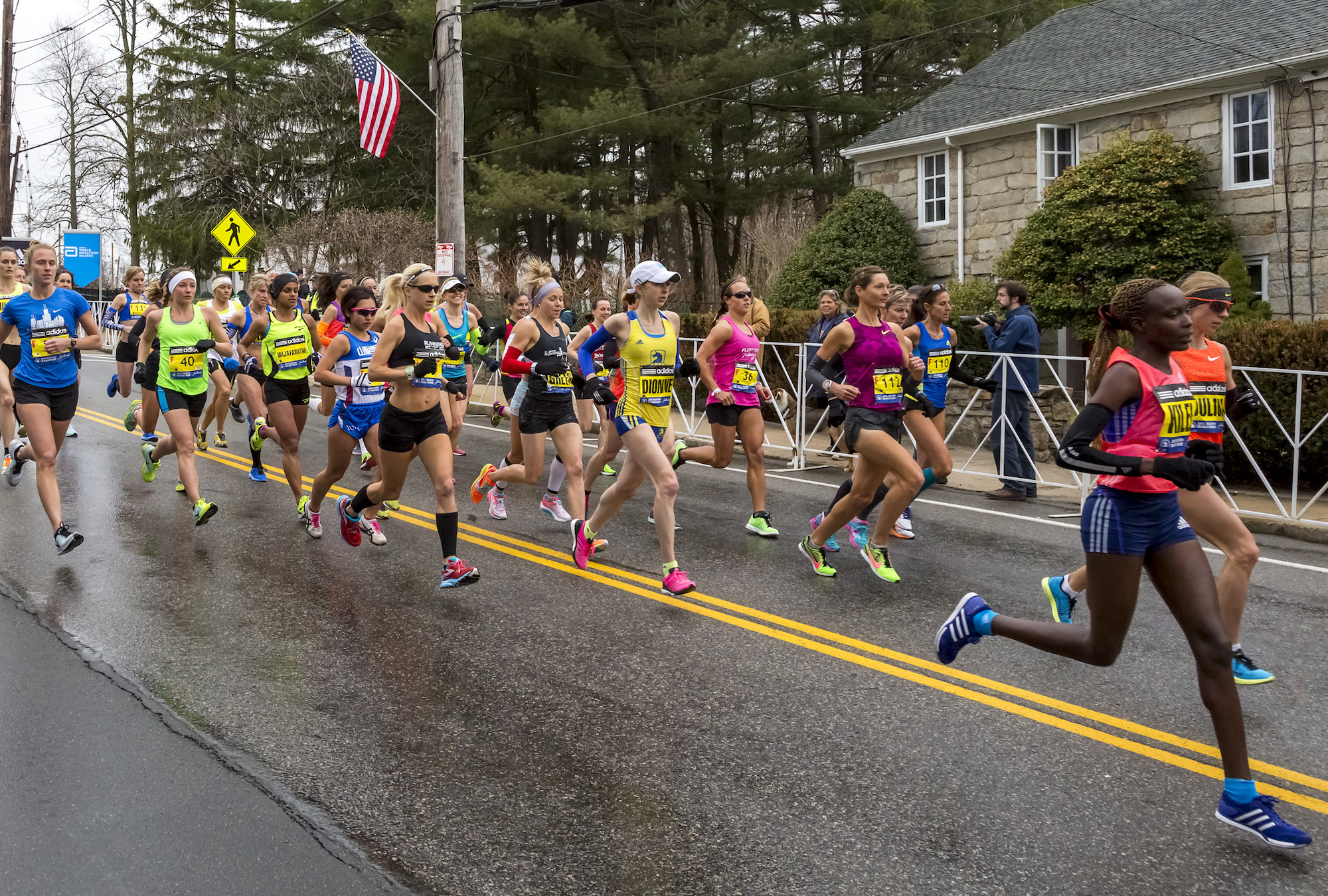
But, for most of the 181 men and 340 women who have qualified, according to a tally done by MarathonGuide.com, this announcement will be good news. Athletes can now approach the trials in the traditional way, with their focus only finish place and not on time. That's particularly important considering the difficulty of the Atlanta course which has a number of challenging hills.
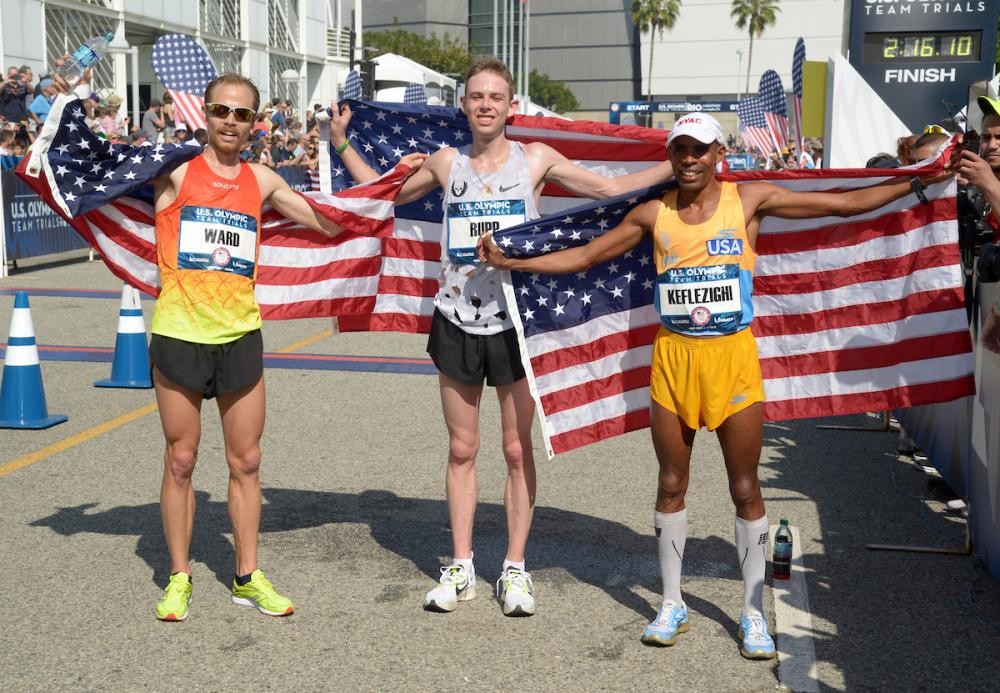
"Hilly is an understatement," said Brogan Austin who won the men's division of an 8-mile test event held on part of the course last March. "I definitely have a new respect for this marathon. I only ran eight miles. I can't imagine doing four times that distance."
Amy Cragg, the winner of the 2016 Trials in Los Angeles, agreed. "It's going to be really, really tough," she told Race Results Weekly after winning the women's division of the test event last March. "We're going to send a good women's team, a really good women's team (to Tokyo). If you can get through this course, you're going to be ready."
Login to leave a comment
2028 US Olympic Trials Marathon
Most countries around the world use a selection committee to choose their Olympic Team Members, but not the USA. Prior to 1968, a series of races were used to select the USA Olympic Marathon team, but beginning in 1968 the format was changed to a single race on a single day with the top three finishers selected to be part...
more...Chelsea Benson qualified for the Olympic Trials set for February 2020 in Atlanta
Chelsea Benson qualified for the Olympic Trials in December when she turned in an impressive performance at the California International Marathon in Sacramento.
She clocked 2:42:27, which qualifies under the “B standard” set at 2:45:00.
“Obviously I was pretty excited,” Benson, 36 and a mother of 5-year-old twins, said. “I put in a lot of miles and missed out on some family stuff here and there, so I was excited to be able to convince my body to do something I set my mind to, it felt like my hard work paid off.”
She had set the goal after running the Philadelphia Marathon in a time of roughly two hours and 50 minutes. A friend of hers told her she could shave that time off with some hard work, and after consulting with a coach, she set a plan with the goal of qualifying for the Trials.
Benson is no stranger to success in the sport. In high school she qualified for the state meet in both cross country and outdoor track, and then qualified for the NCAA Division 3 National Meets in both sports while running at Allegheny College.
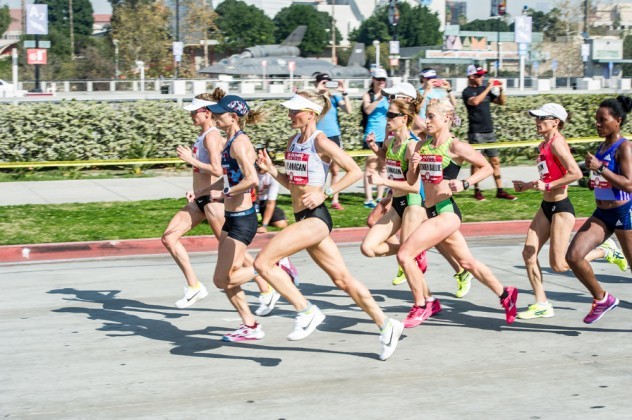
“I got into running because I wasn’t great at any other sports, to be honest,” Benson said. “I tried softball, soccer and basketball, and I was always okay but never really good. So, I found that I was pretty good at running.”
With that in mind, Benson joined the Kane High cross country and outdoor track teams, and participated in a club indoor track team during the winter.
“That allowed me to gain a lot of confidence, and I had coaches who pushed me to do my best,” Benson said. “And then, of course, being from Kane, we knew Amy Rudolph made it to the Olympics, so we had it in the back of our minds while we ran.”
Now, almost 25 years to the date since Rudolph first qualified for the Olympics, Benson will get her shot in the Trials, but expectations are a little different.
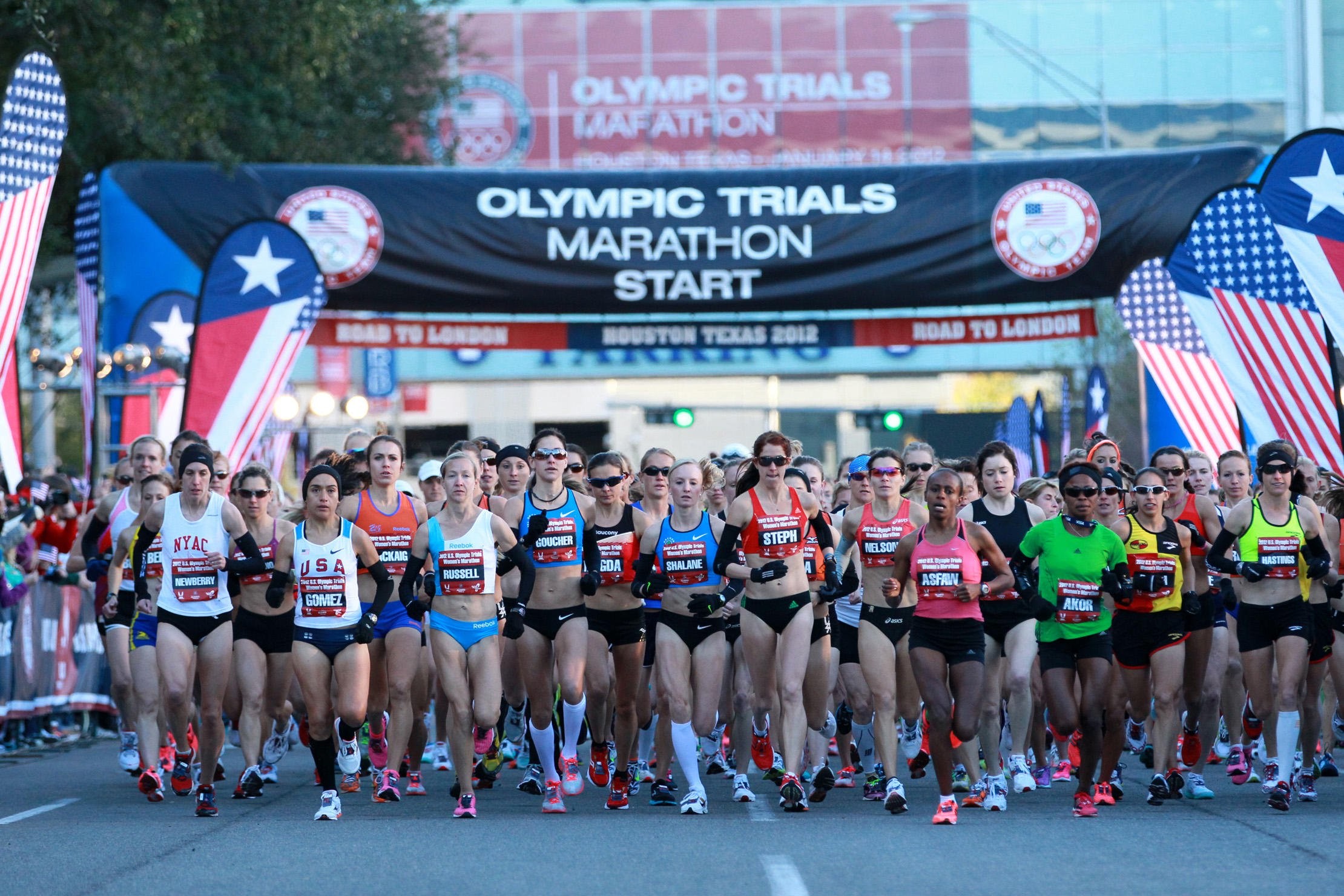
“A lot of this is about the experience. About 300 of us qualified for the Trials, but only the top three go, and they’re professional athletes,” Benson said. “But to be among the pool of the fastest marathoners in the U.S. is fun and exciting.”
That said, don’t expect Benson to just roll over, either.
“I’m really competitive, so I’ll go down there to race knowing I won’t make the team, but just to see how I do against the best,” she said.
She hasn’t set a preferred finish time for herself, in large part because the marathon course in Atlanta is hilly, which yields slower times.
by Joel Whetzel
Login to leave a comment
2028 US Olympic Trials Marathon
Most countries around the world use a selection committee to choose their Olympic Team Members, but not the USA. Prior to 1968, a series of races were used to select the USA Olympic Marathon team, but beginning in 1968 the format was changed to a single race on a single day with the top three finishers selected to be part...
more...Everything you need to know about 2020 US Olympic Marathon trials
The selection policy for the 2020 US Olympic marathon team, cloudy for months after the IAAF announced in March that the qualification process for the 2020 Olympic Games is changing, is quietly beginning to take shape. For those wishing to preserve the best thing about the US Olympic Marathon Trials — top three across the line make the team — there was some good news, but there remains work to be done. After speaking with sources at the IAAF and USATF, here’s where we stand eight months from the Olympic Trials, which will be held in Atlanta on February 29.
The first bit of news trickled out on June 25 in the IAAF Athlete Representative Newsletter, which was promptly shared by agent Dan Lilot on Twitter. The update? After lobbying from USATF, the IAAF Council approved that “national Tokyo 2020 Olympic selection championship/trials in the men’s and/or women’s marathon, held in 2019 or 2020, may be granted Gold Label status if requested by the Member Federations and if the race can meet the Gold Label requirement for number of Gold Label athletes.”
Normally, Gold Label status is awarded to a marathon based on the previous year’s field. So to attain Gold Label status in 2020, the 2019 edition of the race would have to have six men and six women with Gold Label status that year, or seven athletes if it’s a single-gender race (Gold Label status is awarded to an athlete based on their world ranking at the end of the previous year; a marathoner has to be ranked in the world’s top 200 to earn Gold Label status). The 2019 edition of the US Olympic Marathon Trials would normally be the 2019 USATF Marathon Championships, but USATF isn’t holding a marathon championship this year.
So what the IAAF is saying is that USATF doesn’t have to worry about the field at the 2019 USATF Marathon Championships; as long as the Trials has enough Gold Label athletes, it can be granted Gold Label status.
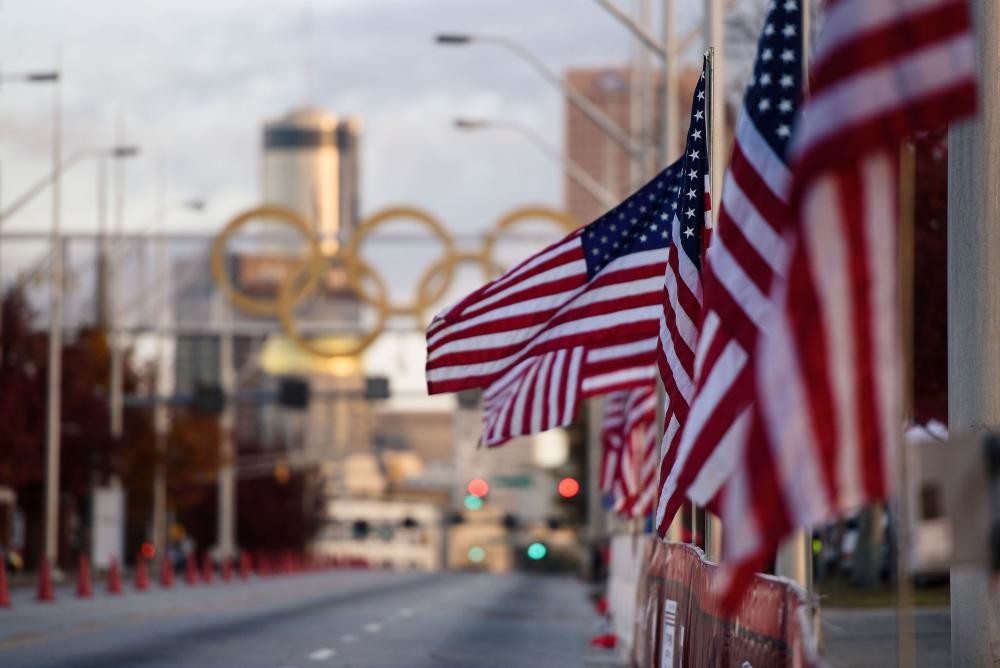
This is good news for American women. Remember, an athlete automatically achieves the Olympic standard by finishing in the top five at a Gold Label marathon. And the women’s race at the US Olympic Trials should have no problem hitting the minimum Gold Label requirements; 11 American women had Gold Label status in 2019, and as of the most recent world rankings, 10 are on track to earn it in 2020. That means that on the women’s side, the Olympic Trials will be able to use the “top three make the team” model. (Also note that Japan, which is holding its first Olympic marathon trials in September, will easily meet the criteria on the men’s and women’s side).
That may not sound like a huge deal, considering nine American women already have the Olympic standard. But consider two women who do not have the standard: Amy Cragg and Shalane Flanagan, both members of the 2016 Olympic team. If it’s a bad weather day on the hilly Atlanta course, it’s not out of the question that third place could be slower than the Olympic time standard of 2:29:30 (Flanagan finished third at the ’16 Trials in 2:29:19). Achieving Gold Label status puts any of those worries to bed. That’s a win for USATF.
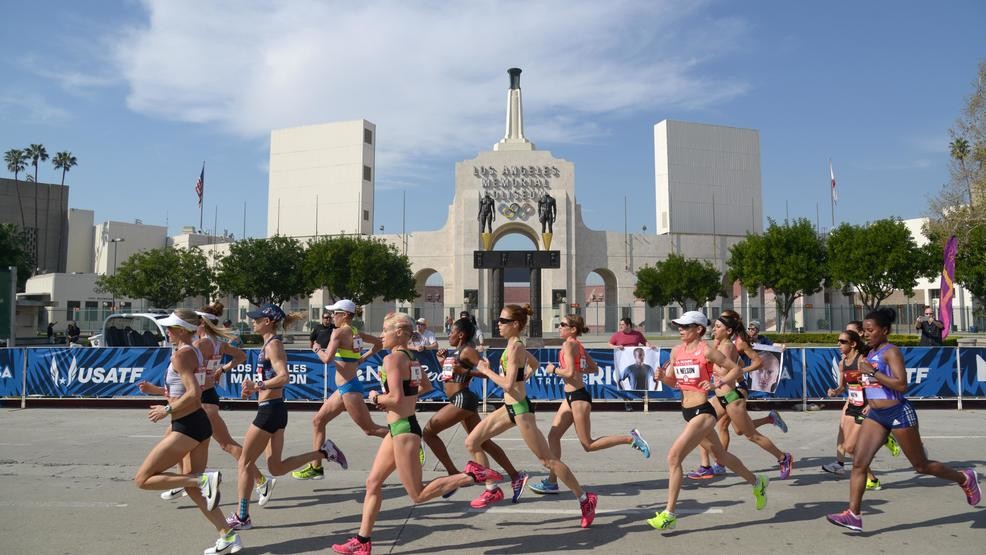
On the men’s side, USATF still has some work to do. Only one American man, Galen Rupp, qualified for Gold Label status in the marathon in 2019. And right now, Rupp is the only American man on track to earn it again in 2020 (Scott Fauble and Jared Ward are just outside, at #205 and #210 in the current world rankings).
That means that, based on the criteria the IAAF announced on June 25, there’s no way that the men’s race at the Olympic Trials will qualify for Gold Label status. And the men are the ones who need it: Fauble and Ward are the only Americans with the Olympic standard, and the time standard of 2:11:30 could be tough to hit on the day in Atlanta.
Login to leave a comment
The standards are tough but the US is running the trials in weather most similar to Tokyo. - Bob Anderson 7/10 9:54 pm |
2028 US Olympic Trials Marathon
Most countries around the world use a selection committee to choose their Olympic Team Members, but not the USA. Prior to 1968, a series of races were used to select the USA Olympic Marathon team, but beginning in 1968 the format was changed to a single race on a single day with the top three finishers selected to be part...
more...Quinlan Moll qualified for the United States Olympic Trials in the marathon after running a 2:18:50 on Saturday in the Grandma’s Marathon
The “B” Standard for qualification to the Olympic Trials is 2:19:00.
“I really wanted to get the standard. That was one of my big goals going in,” Quinlan Moll said. “I didn’t know what to expect because I had never run a marathon before. I knew I was in good shape coming off track season, but it is a marathon so you never know what to expect. It is such a long distance that pretty much anything can happen during it.”
Moll competed at UMKC the past five years and finished up his eligibility this spring. UMKC distance coach Brett Guemmer continued to advise Moll through his marathon training.
“He (Coach Guemmer) advised me to take it out slow the first couple miles. It is 5:18 (per mile) average to get under 2:19. He told me not to go out at that, but to start out at 5:30 or 5:25 the first few miles and see how it felt. I was right around low 5:20’s for the first few miles, and the plan was to cut down from there. I was feeling good early on, but it is a long race,” Moll said. “Around mile nine I started dropping closer to 5:18’s to 5:15’s. I wasn’t having any trouble clicking them off, so I (decided) to keep going at that (pace) for a while.”
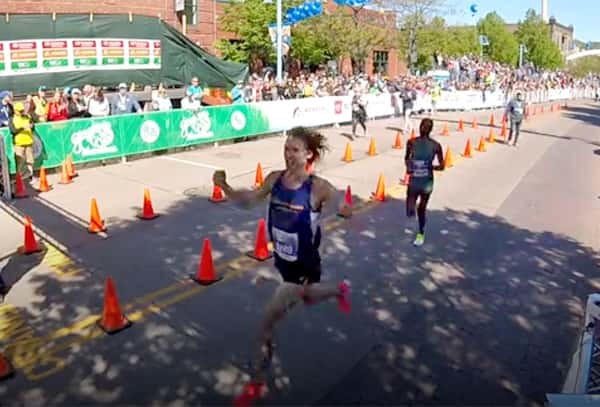
The steady pace kept Moll feeling good through the half, but his half marathon time of 69:48 was not going to get him to the standard, so he had to pick up the pace.
“I saw I came through the half (marathon) at 69:48, so I knew that I would have to pick it up and start pushing a little more,” Moll said. “Once I started getting later in the race and I still had a little left in my legs, I figured I still had a shot so I just had to keep at it.”
Moll dropped his average mile pace to 5:15 from the half marathon to the 20-mile mark to get closer to where he needed to be to hit the standard.
Going into the event, Moll had never raced longer than a 10-kilometer race or done a training run longer than 20 miles.
“I got to the 20-mile mark and (thought) this is my normal race distance left,” Moll said. “At that point my legs were getting a little heavy, but I was still feeling good enough to where I could convince myself that I had come 20 miles, 6.2 miles isn’t that much further to go. It is just really a mental thing. That was the hardest thing was trying to convince myself I had less distance left than I did.”
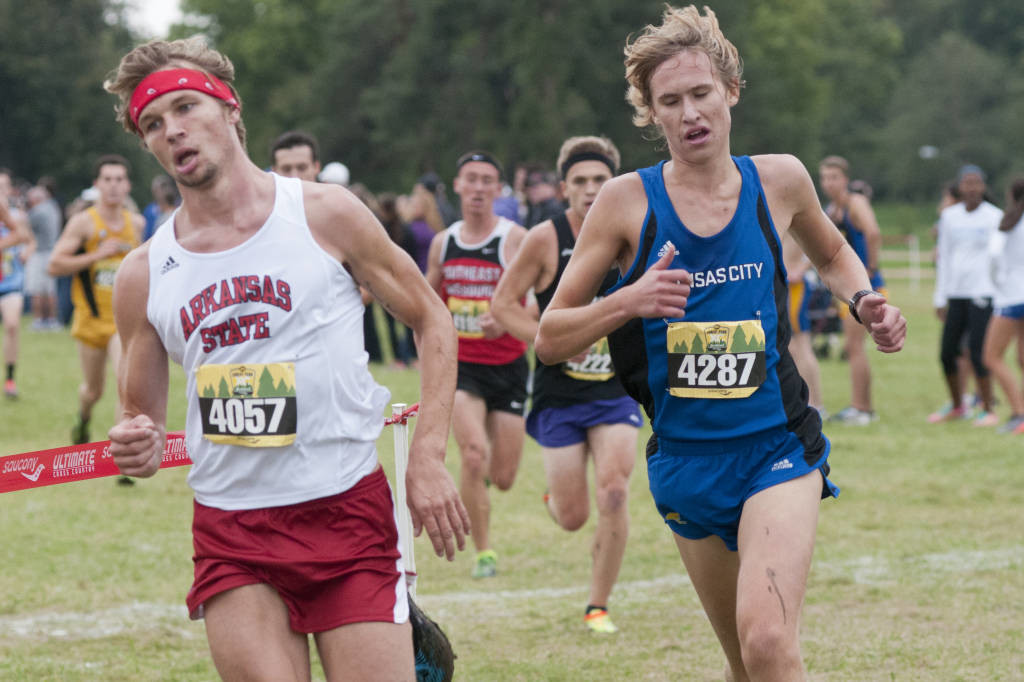
After 26 miles, Moll still was in position to hit the standard to qualify for the trials, but it was going to be close.
“I was checking my watch the entire time. Towards the end of the race there are a bunch of curves you have to go around. I felt like my legs weren’t going to give out or anything, so I knew if I could push a little harder that last mile that I could get there. I kept looking at my watch and would pick it up a little bit. Coming down the homestretch, I saw the clock, saw my watch and saw where the finish line was and knew it was going to be close. Once I got toward the homestretch I knew I had it. That was a really good feeling,” Moll said. “I was just grinning across the line. I think I gave a little fist bump too because some of the guys in front of me were celebrating because they knew they were under the standard too.”
The Kickapoo alumus will now have the chance to compete with some of the best distance runners in the United States at the U.S. Olympic Trials in Atlanta on Feb. 29, 2020.
by Chris Parker
Login to leave a comment
2028 US Olympic Trials Marathon
Most countries around the world use a selection committee to choose their Olympic Team Members, but not the USA. Prior to 1968, a series of races were used to select the USA Olympic Marathon team, but beginning in 1968 the format was changed to a single race on a single day with the top three finishers selected to be part...
more...Tyler Pence has started training rigorously for U.S. Olympics Trials marathon
Tyler Pence never struggles to get out the door. Well, unless there’s a freakish snowstorm not unlike the one in January.That forced him to stay indoors and run on a treadmill.
“But usually 99 percent of the time I’m running outside,” said Pence, who graduated from Springfield High School in 2011.
Pence hasn’t slowed down one bit since winning a couple of NCAA Division II long-distance titles at University of Southern Indiana in 2015, which included the indoor 5,000 meters and outdoor 10,000.
That’s because the 2016 USI grad is prepping for his first appearance in the U.S. Olympic Trials marathon scheduled Feb. 29, 2020 in Atlanta.
He qualified this past December, beating the required 2:19.00 standard at the USATF-sanctioned California International Marathon in Sacramento, California. Pence came in at 17th place with a time of 2:15.36.
“That’s something that I really wanted to accomplish,” Pence said. “The marathon, it’s a gamble. Things can go wrong. It’s such a long period of racing that something can go wrong at any moment, so to put it together and have the day that I had, I was very happy with how it went.”
Pence had only attempted one other marathon – the Las Vegas Rock n Roll Marathon in 2016. Pence said that was just for fun.

Sacramento was different.
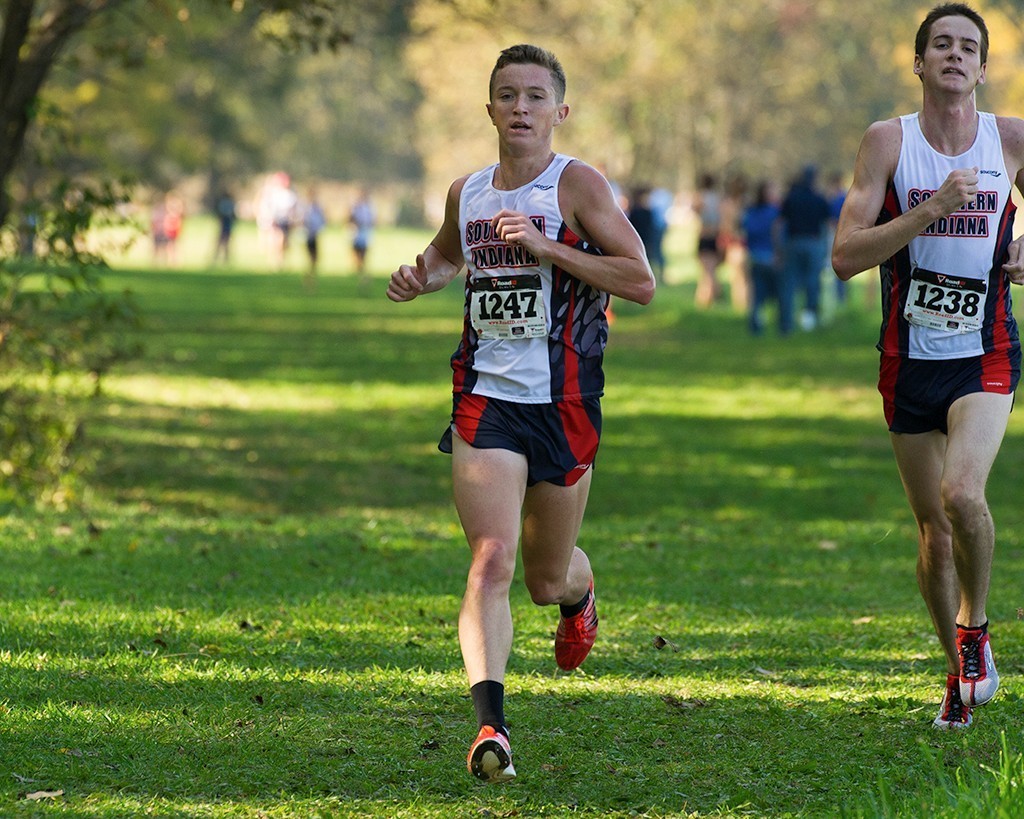
Pence started training rigorously in August, approximately the same time he won his third straight 10-kilmometer Abe’s Amble road race at the Illinois State Fairgrounds.
His training spanned four months, running 110-120 miles a week. Sundays were always his big runs, reaching up to 20-24 miles.
He often did morning practices with UIS runners, in addition to a second jaunt in the afternoon.
It was the source of his inspiration.
“When I graduated college, I actually didn’t really plan on continuing my running career and then once I got into coaching, I was around these guys all of the time. It was definitely a motivator of mine,” Pence said. “I thought, ‘How can I tell these guys what to do all of the time, but not do it myself?’ So, I’m a big believer in practice what you preach. That’s definitely what got me back into getting motivated to run at the next level.”
Login to leave a comment
2028 US Olympic Trials Marathon
Most countries around the world use a selection committee to choose their Olympic Team Members, but not the USA. Prior to 1968, a series of races were used to select the USA Olympic Marathon team, but beginning in 1968 the format was changed to a single race on a single day with the top three finishers selected to be part...
more...

